Originally written May 2017, much new material added since then; significant updates in April 2018; more material (200+ exhibits of evidence) added February 2024
(your browser may need a minute or two to display images below)
It is no exaggeration that this post deals with one of the greatest and perhaps least discussed deception in American history, and as far as I can tell, human history. It is the distortion and erasure of ‘black history’ in America and the world over. I’ll go straight to the point, and elaborate in the ensuing paragraphs: that the parts of the Americas reached by European explorers initially and for the subsequent 300 years (i.e., the Caribbean Basin and what is now the Eastern US and southeastern Canada) were populated mostly by indigenous people who would be (and are) today called black, and who were enslaved en masse; that the trans-Atlantic slave trade never happened on any scale remotely comparable to that of the official history (likely <5% of claimed scale), and that the identities of ‘colored,’ ‘negro’ and later ‘African American’ were manufactured by the Western political establishment in a 200-year campaign (one that began in the early 19th century and continues to this day) of paper genocide to deprive American so-called black people (like white, a misnomer, since they are of highly varied skin tone, and none are the color black; beige and chestnut being closer to the average tones of each group; more on this below) of their native land and (ostensibly, given the state of tribal sovereignty) pass sole claim to indigenous rights to nomadic and semi-nomadic, ethnically different people known as ‘Native Americans,’ who were a small minority in these first-contacted areas and a majority only in the less coveted and much later encountered and settled Plains, Arctic and Subarctic, and Southwest regions, as well as the Amazon and Southern Andes in South America.
To repeat, black Americans are overwhelmingly not African (or at least haven’t been for the past 60,000 or more years), they are American, and they were not sold off in Africa by their own people but were conquered and enslaved in the Americas by white Europeans, initially and most brutally by the Spanish, French, and Portuguese and later the British and Americans. The group known as Native Americans are also indigenous, but are an ethnically and socioculturally different people who have been dramatically lightened over time through segregation from and ethnic ‘cleansing’ of their black aboriginal countrymen and often tribesmen, to the point where some enrolled members in younger generations, particularly in the East, are indistinguishable from whites (1, 2, 3) due to prolonged intermarriage with them. These people arrived to the Americas long ago (as early as 10,000-12,000 years ago to as recently as 2,500 years ago), but tens of thousands of years after black Americans did (60,000 to 100,000+ years ago).
The argument that will be presented consists of two essential parts: 1) that black people were the first people in America and were here at the time of European contact, and likewise were the first people almost everywhere else (see last paragraph of the page for what is being defined as black); and 2) that there has been a huge, multi-century effort to cover up this American and non-sub-Saharan black antiquity, as well as an enormous amount of deception around the story of the trans-Atlantic slave trade, which happened but on a comparatively tiny scale (likely around 1-3% of the alleged 12.5 million). The conclusion that can be drawn from these two sets of facts is it that black people in the Americas primarily descend from these covered-up aboriginal (i.e. black) Americans, not the mostly fabricated Africans, whose ethnic contribution to places like Brazil and Jamaica appears to be real but greatly exaggerated, and may be all but 100% fabricated in the case of the US and its alleged ‘African Americans,’ and that the deception around the slave trade and sub-Saharan origins have been perpetrated in order to separate who were and are the majority, sedentary indigenous group from their rightful homeland and prevent their making claim to it, and during the time of slavery, to reduce the risk of revolt and reunification.
The ‘de-Indianization’ and Africanization of black Americans is only the most recent theater in a broader, multi-millennia, slow-motion total war against dark-skinned people by light-skinned people, one characterized by real genocide, paper genocide, policies of containment and ‘absorption,’ and the destruction and expropriation or misrepresentation of black antiquities by a largely white Western academic establishment. Earlier (pre-Columbian) and in some cases contemporaneous (post-Columbian) sites of completed and ongoing genocide of aboriginal black people include what are today Polynesia, Micronesia, Hawaii, New Zealand, Tasmania, Indonesia, Malaysia, the Philippines, Japan, China (esp. the eastern and southeastern portions), Vietnam, Thailand, India, Iran, the Arabian peninsula, and Egypt, as well as Ancient Europe, among other places (see Appendix A below for evidence). The largely white academic establishment has gone to great lengths to hide that black peoples were the first peoples on all continents, and the architects of many eminently advanced civilizations we consider non-black today, e.g. the early-to-mid-stage Mayans (who became heavily intermixed with mongoloid peoples by the Late Classic period; see Appendix B), Ancient Chinese (until the Han dynasty ca. 200 B.C., and including at least the Xia, Shang, and Western Zhou dynasties, and after that point as increasingly mongoloid-admixed peoples), and early-to-mid-stage Egyptians. Why this is the case and other questions of ‘white history’ (see Appendix H for more) will be the subject of a future post. While the history of this ancient high- (or perhaps normal-) vs. low-melanin conflict is too much for this post, the visual evidence below will cast enough light onto it for the reader to be amply certain that there is ‘something there,’ if not lead to clear agreement with the thesis presented. I cannot over-emphasize that the last thing I want to do is appear to shove aside the meaning, goodness, and ‘story-worth-tellingness’ of the countless generations who came before us- white, black, and otherwise- in favor of some grotesquely simplistic A versus B reduction. But this dualistic ethnic theme has the sense of being an over-arching one in some sense (not as relates to me personally in my daily life, but in an epochal, historical way) and cannot be ignored, especially in places where lighter- and darker-skinned people seek to co-exist. (On Egyptians, see depictions of pharaohs from Old to Middle Kingdom, which were responsible (particularly the Old) for all the great monuments and architectural feats of the civilization, i.e. from Djoser until around the reign of Amenhotep III and Queen Tiye (1), the beginning of the New Kingdom, after which point intermixture with non-black peoples became more apparent, though some pharaohs and queens after that point such as Akhenaten and Nefertiti also appear to have been black: 1, 2, 3, 4, 5, 6, 7, 8, 9, 10 (see Appendix A for more on Egypt). See also the subject of polychromy and the literal whitewashing of previously painted or bronze classical sculpture from Carthage, Phoenicia, and even Ancient Greece (1), the latter associated by most people with late-stage-Greek sculpture, or much more often Roman-, and Renaissance-era renditions of Greek works; which in the case of Renaissance art were supposedly inspired by the sudden and colonialism-coincident ‘discovery’ of nearly two-thousand-year-old, buried pieces in perfect condition (1), or in the case of the Roman renditions, themselves often of questionable origin, are (allegedly) copies of unknown, mostly ‘lost’ Greek originals; rather than with original works or strikingly different early-stage Ancient Greek art; the so-called Renaissance as an opportunity to whitewash antiquity precisely at the dawn of white global imperialism is a view that needs consideration, the printing press notwithstanding (which was the fastening of long-existing moveable-type onto an existing wine-press; not to belittle the invention, but it’s the linchpin of the arbitrary historical construct that is the Renaissance). A wealth of archaeology proves the Ancient Greeks were either highly ethnically heterogeneous at all levels of society or relatively homogeneous, but of mixed ethnicity; that or were mostly or all black by modern standards and the waters are being muddied by white-centric perspectives on Greece in Western higher academia and public schooling- consisting of imagery inspired by what are likely Renaissance-era forgeries and Roman distortions of Greek originals- as well as by inaccurate representations in film and other pop culture (1) with respect to both Greece and to other potential and confirmed black antiquities more broadly, e.g. Egyptians, Mayans, (Eastern) American Indians, Ancient South and East Asians, and Spanish Moors (not quite ancient), these five all being confirmed. Those described as potential or yet unconfirmed (or in most cases better termed as partial, due either to predominant mulatto ethnicity and/or high socio-ethnic heterogeneity) black antiquities, meaning some considerable body of evidence exists, though perhaps not a preponderance, might include (early to mid-stage) Ancient Chinese, Ancient Greeks, Ancient Hebrews or Israelites, Aztecs, Phoenicians, Sumerians, and Etruscans, among others that the media and academic establishment have deemed both A) arguably or potentially white in most cases and B) certainly other than black in all cases. This is not Afro- or ‘black-centrism,’ only fact, and it is brought up because the ‘claiming’ of these ‘brown’ civilizations by whites and separation of them from so-called sub-Saharan blacks (who have populated the world over for tens of thousands of years) is problematic for inter-ethnic relations.) (Given its past associations and para-human ‘oid’ suffix, the word mongoloid is regrettable, but necessary for the sake of clarity and brevity. The word Mongol would only invoke Mongolia, ‘Asian’ is not appropriate since it does not describe many contemporary Asians (Central Asians, South Asians, West Asians, etc.), and East Asian is not suitable in the context of an ancient-historical discussion since it will be established that blacks once inhabited most and likely all of Asia and East Asia, and still do in many pockets of the continent. Other terms and color descriptors that have been used would be no less problematic. The use of mongoloid is in no way coming from an anti-Asian bias).
This post isn’t going to try to analyze or solve the deep-rooted problem of racism and race-based prejudice in America or elsewhere or offer some prescription for justice (although if the current political order is to continue, one must include a correction of the historical record, for starters). It also won’t try to make contemporary sense of or propose some social or political path forward from these historical revelations, since that’s not something I’m ready (or necessarily equipped) to undertake. Neither will it paint one group as eternally good and the other as irredeemably evil, or pass any kind of ultimate value judgment; neither still will it stretch the truth to glorify one group at the expense of the other, a trifling exercise since regardless of the technological or civilizational achievements of one group or another, we are all children of God (or the Creator or whatever name for he/she/it), and we’re all part of the human race. What this post will do is lay out evidence to thoroughly prove that what has passed for black and by extension American and world history, a history written overwhelmingly by white people, is profoundly false; beyond that, the chips can fall where they may. Understanding and restoring true black history is a monumental task that no single person can complete, but its general outlines will become clear enough to guide the further study of any readers who are willing and able to bear the following information fully out; whether or not you choose to take the research road further, you will become aware that it exists.
Neither is this intended by any means to incite violence or enmity between races, colors, or ethnic groups, whichever term you prefer. I think all would agree that white people are ‘here to stay’ for the foreseeable future in the places they reside, and any attempt at proxy retribution against their ancestors would not be just or successful. Any solution or path thereto must be peaceful, and the natural first step should be to set the record straight. If you want to do your part as a light-skinned person to promote ‘inter-ethnic’ justice and harmony, you can start by no longer lying about history, or more often, believing or regurgitating the lies of others. This post aims to help you do that.
A Synopsis of the Real Black History of America
Before more comprehensively exposing as a lie the ‘mainstream’ history most of us have internalized, which in many respects is only a racist cultural myth written by whites, I’ll offer a synopsis of what will be established as major events of real ‘black history,’ starting from 1492:
1) The Americas are populated by a variety of groups. The Arctic, Subarctic, Great Basin, and Great Plains (map) are inhabited mostly by dark-skinned, ‘red-colored’ nomadic peoples of Siberian origin (e.g. Sioux, Inuit), who arrived towards the end of the last Ice Age as long as 12,000 years ago; a much later arrival, i.e. 2,500 to 3,500 years ago, is also possible; anthropological suppositions aside, no historical or archaeological evidence for these peoples can be dated prior to approximately 200 B.C.. The Southwest (e.g. Apache), Northern Mexico (e.g. Aztecs), and Andean range (e.g. Incas), and the Amazon are inhabited by the same people, who have limited amounts of aboriginal black admixture, though some would have phenotypically expressed and been defined as negro or black at the time of European contact. A gradual displacement or absorption of black people by this ‘mongoloid,’ non-black group has occurred in Central America, particularly Northern Mexico, and the Andes, chiefly from about 0 AD to 1000 AD. The West Coast (e.g. Californians, Ohlone), Midwest (Mississippian groups), Southeast and Gulf Coast (e.g. Guale later known as Yamasee, Yuchi, Timucua, Apalachee, Calusa), the mid-Atlantic (e.g. Powhatan, Saponi, Roanoke, Doeg, some Lenape ands), New England (e.g. Narragansett, Patuxet, Wampanoag), the Caribbean (Island Caribs, Lucayans, Ciboney, and other Taino), coastal Brazil (e.g. Tupi, Tupinamba, Manabi), and parts of coastal Central America (Totonac, Zapotec, Mixtec, and other post-Mayans) continue to be inhabited primarily by the black aboriginal people who lived throughout both continents for 60,000-100,000+ years, with some admixture from later arrivals: the aforementioned Siberian-origin tribes, West Africans (ca. 3,000 years ago), a Phoenician-origin group (ca. 1,700 years ago) who may or may not be closely related to contemporary Israeli Jews (the figures depicted in the related artifacts appear to be phenotypically non-white, and thus would likely be of Mizrahi, African, or possibly Sephardi origin; this seems appropriate to point out given hazy ethno-religious concepts around Judaism combined with the strange 20th-century historical trend – ameliorated somewhat due to increasing ethnic intermixture in today’s Israel – of alienation of darker-skinned Jews from Jewish and Israeli identity), a mongoloid Japanese or Chinese group (1,500 years ago), a white Norse voyage (1,000 years ago), and an expedition of black Muslims of the Malian Empire (700 years ago).
2) ‘Christopher Columbus’ aka Cristóbal Colón (whose name in Catalan, the language of Barcelona where his voyage was commissioned, literally means ‘anointed colonizer’ or ‘Christ-bearing colonist;’ an alternative literal translation in both modern Castilian aka Spanish and Italian (as Cristoforo Colombo) would be ‘Christ-bearing dove,’ from Latin ‘Columbus’ (dove, masculine), ‘Christus’ (Christ) + ferre (to bear); dove being an imprecise term, generally referring to a Rock Dove aka pigeon with an albinism mutation, or in the case of weddings and magic acts an African collared dove aka turtle dove (see also: 1, 2, 3, 4, 5, 6) with a similar or same white-color mutation; with either of the two translations of the name being immensely peculiar) the progenitor of colonialism (a word that supposedly has no relation to Columbus’ name), who like Shakespeare and some other historical giants, has so many questions and mutually exclusive claims surrounding his origins that he may also be some kind of ‘composite’ folk hero meant to apologize (or act as a lightning rod or effigy of sorts) for the conquerers and slavers in his wake, rather than a real person) arrives in the Northeast Caribbean, establishing settlements on Hispaniola. Surrounding islands are ‘explored’ and raided for slaves, and completely depopulated within a few decades or years variously. Taino groups (all black) such as Lucayans from the Bahamas and Ciboney from Cuba are shipped to encomiendas, or slave-worked colonial agricultural complexes on Hispaniola, to join other enslaved Taino and Island Caribs, with many other smaller Caribbean islands raided for slave labor. Columbus confuses the natives he sees for East Indians i.e. inhabitants of the East Indies (‘I have reached the islands of India’ were Columbus’s words, meaning the islands of Southeast Asia and western Oceania; he was not referring to the Indian subcontinent), who had already been contacted and at that time were almost entirely black (Andamanese, Semang, Mani, Aetan, Papuan; see Appendix A), and had barely begun to be populated by light-skinned, mainland-Asian transplants who make up the majority population today, and believes he has reached the eastern fringes of East India, and understandably calls the inhabitants Indians. The region is later known as the West Indies.
3) With the Vatican (via the papal bull Inter caetara of 1493, and other ‘Bulls of Donation’) and Spanish crown ordering that all indigenous people be converted to Christianity and that Indian towns, cities, tribes, language, and identity be destroyed, Verrazzano, de Soto, de Leon, Cortez, Pizzarro, and other Spanish- and Portuguese explorers raid Northeastern Brazil, Peru, the Caribbean, and the Southeastern and mid-Atlantic US. The inhabitants they encounter there, sedentary agriculturalists variously called ‘savages,’ ‘infidels,’ ‘heathens,’ ‘Indians,’ and ‘moors’ are enslaved or killed, particularly men and elders. Tribal affiliation and language are erased through the reducción system, and missions serve as outposts for slaving, euphemistically described as ‘procuring indigenous [forced] labor’ in the historical record. Some slaves are shipped short distances, others enslaved where they stood as existing agricultural installations are co-opted directly by white conquistadors, or in some cases temporarily continue to be managed by tribal elites who act as Spanish or Portuguese vassals under the feudal supervision of conquistadors, the latter of whom ultimately betray tribal chieftains and gain control of the plantations. Spanish conquest and enslavement begins in the Caribbean rim, headquartered in Hispaniola, but soon extends into the Mississippi basin and Atlantic coast, as far north as Delaware or New Jersey and and as deep inland as Tennessee and Arkansas, beginning in the early to mid 1500s, and receding to contemporary Florida and the Alabama by the early 1800s as the British and later Americans enter and develop the territory, a forgotten episode in US history with the misleading name of ‘Spanish Florida,’ which most people understand as consisting of only a few coastal military forts in what is today Florida.
4) The notions of ‘white man’s burden’ and ‘negro’ as an inferior race or class emerge shortly after European contact, perhaps inspired by the discovery of two primary ethnic groups in the Americas and possibly the witnessing of bad treatment of once-majority black Mexicans by the increasingly non-black Aztecs (though I haven’t encountered evidence of such treatment); if not just by greed for vast, resource-filled lands. Once socially redefined as negro, black indigenous peoples indentured in encomiendas become permanent slaves, while less- or non-black natives are eventually freed as ‘mestizo.’ Slaves are sold between these plantations in Latin America and the Caribbean, with most trade occuring over land. In the US, slaves begin to be captured in the colonial frontier and traded over land and short distances by sea from Spanish Florida and Louisiana (and perhaps from nearby colonies like the Bahamas and Cuba), which, as stated. initially reached as far north as the Delaware Bay region (and as far west as Texas and Arkansas in the Louisiana territory), before ceding to expansion of British colonial development.
5) By the early-to-mid-1600s, slavery takes hold in British American colonies, primarily in Virginia. Most of the earliest-occupied British lands had already been cleared of dense Indian population by Spanish, French, and Dutch colonists, though captured slaves continue to stream in from raids near and beyond the frontier. British military forces often pair with nomadic, non-black tribes in wars against sedentary black tribes, with the former gradually taking over territory and sometimes obtaining slaves from the latter. Where they are not needed, tens of thousands of slaves are shipped to the Caribbean and occasionally to England, e.g. the shipment of Pequot Indians to the British West Indies following King Phillip’s War, or the vast numbers of Cusabo and related tribes who were shipped to the Caribbean from Charleston, where slave exports outstripped imports until the late 18th century. In the Northern states, surviving Indians are moved onto Indian lands or onto now forgotten reservations (e.g. Brotherton, also known as Brothertown, in Shamong, NJ, formed in 1758 and opened to white settlers in 1802, at which point inhabitants fled to Mohican reservation lands in New York. Colonial governor Francis Bernard declared that ‘all Indians that… reside in this Province … must resort to that tract of land.’) Those reservations and territories are opened up to white settlement by the late 1700s and early 1800s, and their inhabitants are classified as negro or colored if they choose to remain in American territory. Some Indians in the North self-identify as negro to avoid having been forcibly moved onto reservations in the first place, as any non-whites not living on reservations are viewed as colored by the government and allowed to stay where they are, provided they relinquish Indian identity and lifestyle. To reiterate, the choice for these (sedentary, agriculturalist) indigenous peoples was to stay in their tribal homelands as negro or colored, or leave as Indians, with most choosing to stay. Intermarriage between negroes and whites is made a felony offense, leading all mulattoes, non-black Indians, and whites to ‘marry light[-skinned],’ amplifying the black-white racial distinction. In the Southern states, where negro indigenous people are subject to capture and enslavement, most flee to Indian lands and beyond. Captured Indians who are black (i.e. the vast majority) are defined as negro and enslaved (and some who aren’t black are also enslaved for a time). Nomadic non-black Indians, a minority to the black majority in all British colonial areas, are driven Westward. In the 1820s these tribes are dubbed the ‘Five Civilized Tribes’ and granted Indian status by the government, while other tribes are characterized as ‘savages’ and go unrecognized by the government, despite their civilizations being considerably more advanced by modern standards. By the early 1800s, less-black, ethnically different tribes in the Plains region are discovered, and Indian-ness is gradually transferred from black natives to them over the course of the century. Today’s black Americans largely derive from natives captured in these areas (i.e., Indians of the Southeast, Virginia, mid-Atlantic, New England, and the Midwest), with some importation by land and sea from Spanish and British plantations to the south of the US meeting the sudden demand for slaves in the booming Deep South cotton economy of the early 1800s. Conservative population growth rates could easily account for a relatively small number of slaves becoming a population of several million in the Americas (e.g. a modest growth rate of only 1.25%, when there is an enormous economic incentive for high slave population growth rate, would turn a population of 100,000 enslaved natives in the Americas to 4 million from the year 1500 to 1800), with no need for African influx.
6) After the Civil War, the paper genocide against black indigenous Americans begins in earnest. Census categories before 1870 included only black or negro (in some decades, colored), white, and mulatto, with the latter meaning a mix of colored or negro and white (the ‘Negro Laws’ defined mulatto as ‘the issue of the white and the negro’). In New Jersey, and likely other states, categories were limited to white, black (free), and black (slave). Indians were thus variously considered black or colored from the time of European contact until after the Civil War. This was because most of them were the same Americans known as black who are with us today. Little mention of Africans is made to this point, aside from some 19th century descriptions of blacks anywhere in the world as being of ‘African race.’ The Plains native, with his ‘mongoloid’ or Siberian-origin features, tipis, and long war bonnets, becomes the icon of indigenous America and the quintessential Indian. The sense of reverence associated with Indians is gradually fabricated through stunts by the corporate media, such as commercials by fake Indian and Italian-American Espera de Corti aka Iron Eyes Cody; before that time, Indians, whether they were classified as Indians or colored, were seen as inferior and often ridiculed, and until the Civil War they were barred from intermarriage with whites and were readily enslaved. Activists like Marcus Garvey, with his ‘Back to Africa’ movement, and much earlier, the American Colonization Society, are promoted by the establishment to begin the Africanization and even emigration to Africa of black Americans. Black people, previously referred to as Indian, negro, savage, moor, colored, begin to be referred to not only ‘of the African race,’ but as ‘Africans.’
7) Once indigenous rights are fully transferred to non-black natives, and subversive black activists and potential obstacles like Martin Luther King, Malcolm X, Fred Hampton, Huey Newton, and countless others are taken out of the way, the largely or entirely fabricated history of the trans-Atlantic slave trade is cobbled together and aggressively pitched to America, built on pop culture props like the plagiarized film Roots. With Civil Rights officially enshrined, any black sovereignty, nationhood, or land-based economic independence movements in America have to be scuttled by a focus on Africa and African-ness. A campaign begins to banish the term negro as offensive, when it was at that time a more or less correct descriptor (relative to ‘black,’ since it means black in Latin languages) for dark-skinned aboriginal people worldwide, and one that did not attempt to regionalize those people to Africa. In 1988, Jesse Jackson holds a press conference declaring that all black people shall theretofore be known as African-American, culminating a corporate media blitz in support of the change. The word nigger, originally a short, non-pejorative form of negro and later a slur, is banned from the English vocabulary (the full version of Oxford Dictionary defines the word as ‘a dark-skinned person of any origin. In early U.S. use usually with reference to American Indians.’ Another definition is ‘an Aborigine’ in Australian usage.) In spite of the establishment’s promotion of African-American, a return to the term ‘black’ begins in America in the 21st century. When the same elitist members of the establishment who exterminated and enslaved the mostly black peoples of America and buried their history are the ones spearheading both the adoption of the term African-American and the banning of the terms negro and nigger, it has to be assumed their intentions are not good. They weren’t good, and were part of their attempt to erase any non-sub-Saharan black history and Africanize blackness. I don’t like to use the ‘n word’ and am only noting its important historical context.
8) With Phase 1 of colonialism complete – the invasion, conquest, and enslavement of indigenous peoples, the theft of their land and resources, and the puppeteering of their governments- the overwhelmingly white establishment, having inserted a new historical and anthropological paradigm into place, rolls on with Phase 2. Vast amounts of academic and scientific research are funded to bury old models and old evidence and manufacture an alleged consensus in every corner of science, medicine, and academia. Dissenting voices are blocked from doctoral paths, defunded, and railroaded out of universities. Inconvenient artifacts proving black aboriginality are bought up by the wealthy or relegated to museum storerooms, and replaced with children’s-level explanations of history and non-black mannequins. With outright military occupation and extermination out of style, science and medicine continue the genocide of non-whites, as sterilant- and mercury-laced vaccines, lead-ridden water, and toxic pharmaceuticals flood poor black and brown neighborhoods and nations under the guise of humanitarianism, and carpet-bombing of civilians and infrastructure continues under the guise of counter-terrorism. Foreign politicians who refuse to tow the Western line are either assassinated, suicided, or unseated by West-funded political opponents and West-engineered protest movements. In America, once prosperous inner cities – in large part urban Indian reservations today – are de-industrialized and saturated with destructive synthetic drugs brought in by intelligence elements. Mass incarceration takes hold with the War on Drugs and changes in sentencing laws, and a thug hierarchy tears into and menaces what were until recently self-sustaining, stable, family-oriented communities.
This isn’t to say it’s all bad, and that dark-skinned people aren’t surviving, thriving, and living on another day in spite of these countervailing forces, which I believe will ultimately fail – or to say that white people have faced no hardships and obstacles during this time, or been acting in direct furtherance of these sinister campaigns, or even been more than dimly aware of them, if at all, which the vast majority of whites have not – but the preceding narrative is accurate nonetheless .
The Schoolhouse or Pop Culture Version of Racial History
‘White’ people are generally averse to revisionist approaches to black history and are rarely willing to rigorously engage the subject. Instant, categorical dismissals of such approaches as quack Afrocentrism are the most common reaction; I myself have been somewhat guilty of this at points in the past. If you grew up white, you were taught a certain worldview, that more advanced, swashbuckling whites, while committing some unfortunate atrocities along the way, spread the gift of progress to backward, ‘uncontacted,’ non-white peoples worldwide (excluding the Middle East and South Central and East Asia), beginning in 1492 in the Americas and a few decades earlier in Africa, Southeast Asia, and Western Oceania. This event is presented as more or less the dawn of civilization for non-light-skinned people.
There is also a common mental image of who these allegedly primitive and uncontacted people were. In sub-Saharan Africa they were black, and everywhere else they were for lack of a better term ‘mongoloid’ (meaning lighter skinned, straight-haired, and relatively ‘epicanthic,’ to use the technical word) and not black. In the wake of the daring explorers came a wave of intrepid, enterprising pioneers who fought off aggressive raids by these indigenous, non-black people and carved out an advanced society from a totally untamed bramble of wilderness that was only sparsely populated by hunter-gatherer tribes, almost all of whom unfortunately died from inadvertently spread disease, so the story goes.
(I wrap white and black in quotes for two reasons. The first is that they don’t describe the colors of the respective peoples and promote faulty black-and-white, all-or-nothing thinking. Moreover, there are ‘blacks’ who on a skin-to-skin comparison are lighter toned than Mediterranean and even Central European ‘whites.’ The second is that while ‘race’ constructs (e.g. Caucasoid, mongoloid, Dravidian, negroid, etc.) can be a useful way to distinguish between peoples for the purposes of discussion, they are artificial and not provably applicable to anyone in a categorical sense. Virtually all so-called white people have influences from groups some may consider to be ‘other’ (where notions of ‘real whiteness’ inevitably fall victim to fallacious ‘no true Scotsman’-type reasoning) that may not show in their phenotypes: ‘Native American,’ black, Middle Eastern, perhaps gypsy or Jewish, and so on. Those who claim they don’t and actually have the documentation to prove it (which itself is a futile task because of the overwhelming likelihood of mistaken paternity having occurred at points in the past; attempts at DNA verification are also futile, as tests only detect about 1% of a person’s lineage; continue on for more on DNA) do not exist. Native American is wrapped in quotes for obvious reasons: while they are indeed native and have been here long enough to also be considered indigenous, they were not the ‘main’ people of the Americas at the time of European contact (nor the first people). To recognize them as the only native people of the continents is a farce.)
The worldview that is based on this false history brings with it guilt, but also pride, self-esteem, and/or self- confidence for some whites. Some embrace ‘white exceptionalism’ rather unapologetically, on a ‘the past is the past’ basis; though not consciously or overtly asserting that whites are superior, they accept the false white supremacist history as correct. Others lean towards the establishment’s packaged version of social justice and take on ‘white guilt’ in varying amounts. Ironically these people are often the fiercest defenders or promoters of false black history, and thus are obstacles to justice, usually in the name of racial sensitivity, science, or a supposed academic consensus. (Most prominent Afrocentrist historians, both white and black, do little better service to black people, glorifying the achievements of ancient sub-Saharan Africans but attributing all non-sub-Saharan black antiquity, far greater according to contemporary societal standards, to non-blacks.) Whatever feelings the schoolhouse view engenders, it’s the one that was instilled into white and black people alike from birth, which is the primary reason why it’s so hard to change.
(To expand on points made in the above synopsis, the truth of early white colonial and American history is of course much less glamorous. Early settlers appear to have been primarily driven by greed, and willing to stoop to any low to gain wealth. One has to ask whether they were really ‘fleeing persecution’ and seeking liberty, or just unsavory opportunists looking for bargains not to be had in Europe. Consider the well known writings of Robert Beverley (1667-1722) regarding early Virginia colonists: ‘They spent their days digging random holes in the ground, haplessly looking for gold instead of planting crops. Soon they were starving and digging up putrid Indian corpses to eat. They took some Indian prisoners and forced them to teach the colonists how to farm.’ On later relations, ‘[the colonists] offered the Indians a toast to eternal friendship, whereupon the chief, his family, advisors, and two hundred followers dropped dead of poison.’ With respect to the agriculturalist Iroquois confederacy whose laws provided some of the main inspiration for the US Constitution, George Washington ordered, ‘lay waste all the settlements around… that the country may not be merely overrun, but destroyed. . . do not listen to any overture of peace before the total ruin of their settlements is effected.’ He compared Indians to wolves, saying ‘both being beast of prey, tho’ they differ in shape.’ (Note that ‘Afro-Mexicans’ and ‘Afro-Bolivians’ were called ‘lobos,’ literally ‘wolves;’ today they are called ‘zambos’). Thomas Jefferson called to ‘pursue [the Indians] to extermination, or drive them to new seats beyond our reach.’ I make these points lest anyone mistake that early colonists and even the ‘Founding Fathers’ were men of special honor above the unflattering accusations made against them here. These were not sentiments of a certain time, as evidenced by the statement of oft admired president Teddy Roosevelt: ‘I don’t go so far as to think that the only good Indians are dead Indians, but I believe nine out of every ten are . . . and I shouldn’t like to inquire too closely into the case of the tenth.’ While I believe in the most fundamental principles upon which the country was allegedly founded, i.e., proviso-Lockean occupancy-and/or-use property rights, prohibitions on physical aggression and fraud- it has nothing to do with these people and ever little with this country’s history since that lip service was paid long ago.)
The counterpart black history that is or at least has been produced in schools can unfortunately be summed up as follows: primitive African blacks, betrayed by their African countrymen and sold off, were enslaved for 350 years, then freed by righteous Northern whites. Before being enslaved and put under colonial rule, blacks and Africans were behind the curve, and contributed little to nothing to antiquity, or at least nothing worthy of mention. Thanks in part to the framework largely put into place by whites, some blacks have been able to achieve socioeconomic success. It’s an unsettling characterization, but some form of the preceding lie is pretty much what most of us of adult age, and probably younger, have been taught, however indirectly the message has been passed.
Many black people have long sensed that something was not right about mainstream black history and have adopted multiple alternative historical narratives and self-descriptors. These histories are right and wrong at the same time. Where they go wrong is by generally ignoring or attacking the other histories and reducing the long, complex, and storied past of the Americas and of black peoples down to a single migratory event. A lost tribe of Israelites or pre-Adamites, a global brotherhood of pyramid builders with roots in Egypt (or in America, who taught the Egyptians), a race of pre-Columbian, South Pacific black people who were not from Africa at all, a race of ancient, pre-Columbian West Africans who crossed the Atlantic more recently (i.e., about 3,000 years ago, far later than the preceding groups), an expedition of pre-Columbian black Moors from the medieval Malian Empire, an aboriginal race who may have emerged in the Americas and come from nowhere else, an indigenous American race who were one and the same, or were at least heavily intermixed with the group known as Native Americans; an indigenous American race mostly separate from the people called Native Americans.
These theories could all be said to be true, or put better, there is incontrovertible evidence that none of them is completely false. Your quack meter may be off the charts, but this will all be supported by evidence below and in coming posts. All I ask is to view the primary-source documentation below and draw your own conclusions. Recall how easily you, if you are white, might believe the same kind of claims with respect to whites, and how complex Eurasian migrations are known to have been. While you may not see a sheer volume of proof to give you confidence all these hidden histories are true, I am certain of one thing: you will believe there were black people living throughout the Americas before Columbus, and you will understand that black people should not necessarily be described as African.
Black History Outside of Africa and the Americas
Reference was made in the opening paragraph to the distortion of black history in America being only a recent chapter in a longer, global story. While this subject is far too broad for in-depth treatment in this post, I’ll again put forth a summarized version. As noted above, white people, regardless of their genetic or evolutionary history, emerged from Central Asia and entered first into northern Europe and Siberia, some of the world’s cloudiest regions that would have been the most forgiving to low-melanin skin. Mainstream history alleges these areas, like America, were more or less vacant at the time of basically peaceful white entry. The truth is that there were two separate major migratory events. The first peopling of Europe, including European Russia, and Western Siberia was by black aboriginal peoples at least 50,000 years ago, possibly a R-haplogroup West African people that entered Europe via the Iberian Peninsula and spread throughout the continent. This is evident from prehistoric Grimaldi sites (most of which date from 35,000 to 17,000 B.C., before the last Ice Age, along with related sites, e.g. Hamangia, Pazardzik, among others, in Southern and Southeastern Europe until around 5,000 B.C.. The second European entry was by whites who migrated from Central Asia in various waves perhaps 4,000 to 6,000 years ago, far later than alleged by the academic establishment, before which time there is no apparent evidence of white existence. Neanderthals are frequently mentioned as early inhabitants of Europe, but any human intermixing with Neanderthals and Cro Magnons would have occurred between those peoples and black indigenous Homo sapiens, long before the arrival of whites. Neanderthal DNA in white Europeans, especially southern and southwest Europeans, likely arises from intermixing between part-Neanderthal aboriginal blacks and whites as whites variously displaced, absorbed, and drove out aboriginal peoples.
A similar and more evident, less controversial history occurred in North Africa, the Middle East, South Asia, East Asia, and Oceania. Early, pyramid-building Egyptians, undoubtedly black, including the architects of the Sphinx (which is at least 7,000 years old, far older than alleged by Egyptologists, gradually absorbed lighter-skinned, black-admixed Middle Eastern peoples, and took over existing ceremonial complexes (as non-black Aztecs did with Teotihuacan, which was built by the black Teotihuacano civilization). Non-African black aborigines in the Middle East, Persia (Elamites), and India (Veddah), Tibet, Southeast Asia (Mani, Semang, Aeta, Ati, and many others) including Eastern China, and Japan (Jomon, Ainu) were lightened over time by sustained contact with mulattoes and whites in Turkey, the Caucusus, and Central Asia, and Northern China respectively, leading to the creation of general ethnic groups aka races such as Arabic and Southeast Asian. Full-black aborigines were displaced or absorbed altogether, often pushed southwards or into remote interior regions. Many of them still exist in small numbers, and their status as the first people of their countries is not in doubt, yet it is a fact that is buried from the masses since it would cast much light on what can only be called the black genocide theory of or perspective on world history. In most cases, the entry of non-black peoples into the above lands was a relatively recent event, having happened over the last 2,500 to 100 years depending on the region in question. Pacific islands remained black until the beginning of the 16th to 19th centuries, when mainland Asian immigrants, e.g. from China, Japan, the Philippines, began to intermix with black natives. The resulting mulatto ethnicity is today known as Pacific Islander.
(Given the uninterrupted style of art, dress, culture, and religion between modern Polynesians, Micronesians, Maori, and Hawaiians, allegedly second- or first-wave groups who arrived around 1,000 B.C. (with an appearance comparable to that of today) – and allegedly the oldest peoples in the respective lands – and the archaeological records of those places which depict exclusively black peoples (see Appendix A), as well as the photographic evidence (from the late 19th and early 20th centuries) demonstrating that those regions’ populations were from half to entirely black until very recently, it can be deduced that these four groups did not exist (no great leap, as their ‘histories,’ like the Bering Strait hypothesis, are backed by no historical or archaeological evidence, and are abstract anthropological theories produced by establishment academia in the mid-to-late 20th century and bullied into an alleged consensus), and that the differing, less black appearance of these three groups from that of Melanesians today can be attributed entirely to recent intermixing with non-tribal, mongoloid and/or white immigrants. Since intermixing would have occurred slowly over several generations, and did according to the photographic and illustrative record, there need to have been no theft of tribal culture by a non-native group, just a gradual, incremental separation from the black ethnicity of their cultural forebears, but no replacement with a foreign culture, as the mongoloid and Asian immigrant cultures were diverse (Chinese, Filipino, Japanese, Southeast Asian, [Hindu] Indian, etc.) would have initially and in any given generation thereafter been a minority influence, and marginalized and forgotten soon after arrival, just as minority immigrant groups in the US quickly became American and by the second generation had discarded most or all of their original language and culture. To reiterate this point, Polynesians, Micronesians, Maori, and Hawaiians were almost entirely black around the turn of the 20th century according to the photographic record, and entirely black in the early 19th century according to pre-photography illustrations and artifacts, after which point they absorbed multiple generations of non-black, East and South Asian immigrants (from China, Japan, Philippines, India). Thus, again, their current appearance is a recent development; observe first-generation black and ‘Asian’/mongoloid crosses, e.g. Tiger Woods, Dwayne Johnson, and how they are not a great much distinguishable from modern Polynesians, Micronesians, Maori, and Hawaiians, as well as recent DNA evidence which shows a genetic heritage of these four groups that is most comparable to a first-generation Papuan or Melanesian-Chinese or Japanese mix, and not an ancient, separate line. Like the entire ‘mainstream’ (i.e. official, establishment-supported and -enforced) history of Ancient America, which utterly ignores the vast evidence of the multi-cultural, multi-ethnic (but mostly black) status of the American continents prior to Columbus, and puts in its place an entirely theoretical, mono-ethnic land bridge migration, the [non-black] Polynesian story (and that of other non-black islanders, as a history separate from that of ancient black Melanesians) can be characterized as a wholesale invention or at minimum, a gross distortion.)
Within the black community, one of the most common reactions to this kind of information, i.e. assertions that black Americans are largely not from Africa, or at least not anytime in recorded history, is that it is a shameful repudiation of a black American’s supposed African-ness. This is not true: it is simply a question of fact, nothing more. But anyway, an African civilization that is so advanced as to be unexplainable by modern man, the Egyptians, were black, or at least were at the zenith of the civilization’s achievements. To name only a few others: the Mali Empire, the world’s leading center of learning in the High and Late Middle Ages, who also staged a successful voyage to the Americas in 1311 (at a time when most Europeans were uneducated peasant farmers living in huts, or in relatively isolated cities ringed by crude wood fortifications; for the merits these European societies did have, they certainly weren’t advanced by today’s understanding). Many advanced seafaring kingdoms existed in East and South Africa in early modern history. So there would be no reason for a black person to repudiate African roots, unless it is because he in fact doesn’t have African roots. A more than 500-year campaign of destruction by European colonial powers (from about 1440 to 1960), one that has been carried on by private corporations, has contributed to Africa’s poor economic condition today. I personally reject these criteria for ‘advancedness,’ and believe a perfectly sustainable hunter-gatherer or semi-agricultural lifestyle may well be the most advanced mode of existence of all, but many readers do not think along these lines and must be appeased with large structures, ornaments, etc.
Reconsidering the Out of Africa Theory
Mainstream history holds that homo sapiens evolved in Africa and migrated out of the continent around 55,000 years ago. This has been repeatedly proven false, since sites in America have been found that are over 60,000 and 130,000 years old, in addition to more than 20 pre-Clovis sites (i.e. pre-Ice Age sites over 20,000 years old) that have been found in the Americas, as well as sites in China over 80,000 years old. Additionally, genetic testing of black Australian aborigines and black Oceanic people shows no relation to Africans. Regardless of one’s religious beliefs or lack thereof, there is evidence of (black) humans on Earth whose origins cannot be traced to Africa and have not been explained scientifically, and all we can say for sure about them is that they ‘were here.’ Just as most species appeared in large numbers worldwide and do not derive from a single ancestor, the same is likely true of humans.
There is enormous amount of evidence for some kind of cataclysmic impact with a extra-terrestrial body around 12,000 years ago, which ended the last Ice Age and caused a ‘Great Flood’ event, which was most severe in the Americas (the Mound Builder. Few if any artifacts would have survived (and most would be underwater, since sea levels were several hundred feet lower prior to the event, or too deep underground to be looked for in any archaeological digs) to the present day, though the existence of sites like Göbekli Tepe and the Great Sphinx (which is at a very minimum 7,000 years old and perhaps several times older, based on erosion patterns around its base) are basis enough for the belief that the technological progression we’ve been told about is a lie. There could have been multiple global migrations across the world and back again, and several civilizational rises and falls, rather than the linear, 60,000 years to present arc that is foisted onto us by academia. (For a brief aside on Egypt since it won’t be covered elsewhere, the disfigured face of the Sphinx is clearly a black or ‘negroid’ face, as is the Pharaoh Djoser’s seated statue, Egypt’s oldest depiction of a pharaoh. His pyramid, also Egypt’s oldest, mirrors Mesoamerican style. Egyptians claimed to have descended from ‘people of the West,’ presumably Ancient Americans. Consider also the findings of coca and tobacco, native only to the Americas, inside sarcophagi. All known Mesoamerican peoples of that time, prior to 3,000 B.C., were black. Ancient Egypt prior to the relatively late New Kingdom phase, which began around 1,500 B.C., was black by today’s standards, i.e. predominantly black, and was partially but decreasingly black after that time as the civilization absorbed black-admixed ‘brown’ peoples from the Middle East. I’m a little reluctant to make mention of Egypt, because for many it can bring a discussion of hard, factual, physical evidence into association with legend and mystery, and reduce the entire presentation to being merely ‘interesting.’ There’s a place for imagination and flights of fancy, but there’s also one for knowledge. This post deals with knowable realities.)
The mainstream presentation of the Out of Africa theory is that humans left Africa and suddenly became non-black, and that all non-African places have long or always been non-black, which is nonsense. Based on available evidence it is indisputable that all peoples worldwide, including the majority in the small pocket in South or Central Asia from whence light-skinned people at some point came, were black before any lighter skin tones existed, and after tens or hundreds of thousands of years had not evolved considerably with respect to skin color or hair type based on climate. That cloudy places like northern Japan, Kamchatka, coastal Alaska and British Columbia, and Tibet were populated entirely by black peoples less than 2,000 years ago disproves any notion that climate reliably produces evolutionary changes in skin color. A more likely, less speculative explanation would seem to be that known autosomal recessive genetic mutations (or some other, unknown cause for sudden lightening of skin color) led minorities of people or even a small band of individuals to migrate to cloudier climates where they could more easily survive, and where they bred in relative isolation until the colonial era, and generally since then also.
A Preponderance of Indications the Trans-Atlantic Slave Trade Never Happened (on a mass scale)
Since indigenous black populations outside of Africa are greatly diminished and have been overshadowed by light-skinned latecomers, or, where they are the majority, are in small island nations many people have never heard of or know little about, one of the primary components in the erasure of black history and Africanization of black people was and is to explain the presence of blacks throughout the Americas, which have by far the largest black populations outside of Africa. From the earliest history lessons we are told about the trans-Atlantic slave trade, shown the diagram(s) of slaves packed like sardines for six- or eight-week voyages across the Atlantic. We all know what the history books told us; but what is the actual evidence that the trans-Atantic slave trade occurred, at least on any kind of very large scale?
Let’s start with photographic evidence, or lack thereof. Photography was invented in the 1820s, and came into relatively widespread use by the early 1840s. There are thousands upon thousands of photographs from this era, of early pioneers, the Mexican War, street scenes, in addition to the well known portraits of the time (of Presidents, politicians, etc). There are well in excess of 100,000 photographs from the Civil War. The last African slave shipment to the US supposedly arrived in the autumn of 1859 ‘or on July 9th 1860 according to other sources’ (more to come on the ephemerality of the alleged historical record of slavery, teeming with imprecise terms such as ‘likely’ ‘around’ ‘may have been’ ‘thought to have been’ and ‘presumed to have been’ in places where precision would be most expected). There is not a single photograph of that or any other slave ship, of any slave auction or sale, or of the entry or movement of any slaves in the United States. Are there many spectacles, however disgusting, more worthy of being photographed than the disembarking and auction of human cargo? War photos were being taken along with other disheartening images, yet not a single photo of this? I encourage you to enter any and all search terms into Google Image, and you won’t find any photo related to the American slave trade. The few photos of slave ships that exist are clearly from the African-Arab slave trade, based on the dress of the ship crew. In the History Channel website’s presentation ‘The Slave Trade in Photos,’ we see the following: a negro slave ‘agency’ in Atlanta (nearly 300 miles from the coast) that is about the size of a small ‘main street’ real estate office (probably representative of what for the most part was a limited, internal overland trade, with most new slaves deriving from population growth over time; that photo is only one of two known photos of a slave-dealing agency, the second being suspicious and possibly manipulated), the non-entity that is Goree Island and its House of Slaves (see below), as well as the oft presented paintings and diagrams you’ve likely seen before, none of which make mention of Africa: no photos of slaves or trading are shown in the presentation. Yet from the same era we have many photos of slaves on plantations. The following inference can thus be drawn: slaves of the mid 19th century were mostly inter-generational chattel property, born into slavery. Their ancestors were enslaved in the 17th and 18th centuries long before the advent of photography, in what is today Southeastern and Eastern US, or on occasion brought into the American colonies from neighboring colonies beyond the British and American frontiers, or from the West Indies or Latin America. When they were sold, they were usually sold one or a few at a time in private transactions (at a considerable price, often in the neighborhood of $40,000 or more in today’s dollars, hardly a casual ‘street’ transaction), not an appropriate event for a photograph in that time period, and were almost always sold locally in order to reduce flight risk and transport costs. These inferred general sale conditions happen to be consistent with the vast majority of records of slave transactions, aside from the few suspect accounts that provide the thin foundations for the mass-African-importation story. While there do appear to have been some public auctions in the early 19th century, most appear to have been for state-captured plantation escapees whose ownership could not be determined (‘Whenever any negro slave shall be taken up in this State as a runaway, and confined in any [county] jail for the space of twelve months . . . then it shall be lawful to command their sheriff to expose said negro slave to public sale for ready money’), which at the county level would have been a relatively uncommon, one-off incident and may not have involved any kind of outdoor and/or public spectacle. To return to the main point: there is not a single photograph of a slave ship, the mass holding (e.g. quarantine, temporary housing) of slaves, or a slave auction or mass sale from the point of widespread adoption of photography, and there is not a single drawing or painting of such from prior to that time. What we do have is a drawings of one or two slaves being sold, all from the 1850s and later, many of them drawn in the North during the Civil War as political cartoons, or produced in the 20th century; they are in every case works of imagination – as external political commentary or the rendering of long-passed times -rather than period or journalistic testimony.
We’ll move on to physical or archaeological evidence. There were supposedly 36,000 slaving voyages across the Atlantic. While there are dozens of American military and commercial vessels from the era that survive, there is not a single document-able slave ship in existence, or evidence of prior modification for slaving on a re-purposed vessel. Even more, not a single artifact from a slave ship exists. In one case, a chunk of rust and a rusty nail were claimed to have been evidence of shackles, then dozens of these convincing reproductions, complete with reproduced rust, created and displayed with the common assumption being that they are originals (though without the museum actually confirming or denying so in the display); yet as will be made clear below by a Smithsonian director himself, none of them are genuine artifacts.
In a famous case, five iron ballast bars were found in an alleged slave ship wreck site (which produced no other artifacts) and said to be evidence that hundreds of slaves were on board. But iron ballasts were commonly used for all types of voyages, anytime cargo was not at full capacity. The bars were from the São José, which left from Mozambique to Cape Town South Africa, and took six weeks merely for that leg of a voyage allegedly bound for Brazil. Though the bars are touted as one of the few pieces of physical evidence substantiating the trade, the São José voyage is not listed in the trans-Atlantic slave voyage database and based on its location would have been involved in the African-Arab trade, if any slaves were on the ship at all. Lonnie Bunch, director of the Smithsonian Museum of African American History and Culture, said about it: “So I thought, ‘What it is it that people haven’t seen?’ And I thought, ‘a slave ship.’” “I spent years looking around the world trying to find slave ship pieces . . . as almost like a religious relic“ . . . “I really wanted something from a slave ship,” he said in an interview. “How hard could that be?”. . . (article continues) Exceptionally hard, it turned out, because the museum wanted something original to showcase, and ideally a slave shipwreck that was connected to the United States . . . “they are really the only tangible evidence that these people existed.” . . .“The Middle Passage is often thought of . . . as unknowable . . What we’re trying to do is say, ‘Is that really true? . . . Can we begin to know something about this? Can we begin to bring some of these stories back into memory? . . . The story of the São José is our first real instance of this.” Again, this all refers to five iron bars found off the coast of South Africa, allegedly from a ship from Mozambique, when many kinds of ships used iron ballast, and when Fort São Sebastião Mozambique was a center for the Arab slave trade, and closer by sea to the Arabian Peninsula than to Cape Town, let alone Brazil; it would have been the first known commercial ship to attempt such a voyage. There were no skeletons or bones found, no other ship parts. Might someone be making this wreck into something it isn’t? Even if genuine slave-related artifacts were found in the Caribbean or off the East Coast of the US, this would provide no proof of a trans-Atlantic trade, as ship identifications from that length of time are mostly speculative, and there are many documented cases of enslaved Indians being transported short distances by sea, e.g. the well known shipment of Pequot Indian slaves from Massachusetts to the Dutch and British West Indies, where many other New England Indians were sold in the first century of British colonialism, as the small islands’ populations, naturally low and further decimated from Spanish slave-raiding, were insufficient for large-scale sugar plantations and related industries (rum, molasses), and Virginia and North Carolina colonists were enslaving the large [black] Indian populations there for tobacco planting during the same period and had no need for labor.
Moving on to the historical or documentary evidence, the level of detail in the alleged records of slave voyages is shockingly low. On many records the port of embarkation for slaves is listed as ‘West/Central Africa’ ‘Gold Coast’ or ‘Angola.’ A 5,000 mile-long coast isn’t a port. Neither is the 300-mile Bight of Biafra. We sometimes see the name of a captain (often a common name, in any case untraceable given the age), and that’s often it. A few archivists of malicious intent could easily fabricate most of the 36,000 voyages in a year or two, given the scant documentation, or simply mischaracterize (as slave shipments) the exportation of Africa’s many non-human resources (to name just a few: gold, ivory, tropical hardwoods, gum arabic, ambergris, peanuts, cotton, dyes, and other agricultural products), usually bound for Brazil and other Latin American colonies, as well as Europe. The mainstream account fails to mention the wide-scale production of commodities in Africa that was occurring at the time, and implies it only had slaves to offer, the deception around which strengthens the likelihood that mischaracterization was employed more than all out fabrication of records. Unsurprisingly, the voyage database does not actually display an image of the primary source for which the record is based, only a citation for it, which is typically from the national archives of a major colonial power. While I haven’t personally examined those primary sources, I would be surprised if they themselves were anything more than a long ledger or table of voyages, ‘original’ or otherwise, an exceedingly easy document to fabricate, rather than documents individualized to each voyage.
In many cases, Goree Island of Senegal is listed as a departure port. As his single activity in commemoration of the slave trade while on an African tour in 2013, Barack Obama held a ceremony at Goree’s infamous Door of No Return, part of the House of Slaves. The house was long supposed to be the iconic port of departure from Africa, through which a projected millions of Africans passed. However, the ‘Door of No Return’ was revealed to be door to a small boat slip, and the ‘millions’ of slaves mentioned at the island were revealed to be perhaps a few dozen household slaves who worked at the building, which was a private seaside residence. And this was the number-one and most famous port of exit from Africa? How and why these ‘records’ of non-voyages from Goree were formulated for the aforementioned database, other than the obvious, fraud and disinformation, has never been explained. According to historian Ana Araujo, “the building started gaining reputation as a slave depot mainly because of the work of its curator Boubacar Joseph Ndiaye, who was able to move the audiences who visited the house with his performance.” Goree was an important trading center, but not for slaves. As today, the region was rich in raw materials, which were traded for finished goods from Europe, as well as to the Americas, mainly Latin America, since many of West Africa’s major commodities (cotton, ivory, gum arabic, palm oil, among others) were not available or yet widely produced there.
Let’s peel back the Goree fabrication further. From the Washington Post article entitled ‘Ghosts of the Henrietta Marie:’ “Documents show that the ship probably stopped at Dakar. A visit to Goree Island would have been in keeping with what other slave ships at the time did. From the 1500s to the 1700s, as many as 15 million Africans were brought in chains to the West Indies and the United States — up to 6 million others died en route. The first stop for many of them was Goree Island, according to historians. There, they were crammed into raw, airless stone chambers for up to three months, shackled by the neck and ankles, given European names and routinely flogged, raped, even murdered. The ones who survived were dragged through the “Door of No Return,” a passageway leading directly onto the slavers’ vessels. It was the last thing they would see or touch of their homelands or, in many cases, their families.” Several years later, also from the Washington Post, an article, ‘The Sincere Fiction of Goree Island,’ which discusses Obama’s visit to the island: “Except that the official story turns out to be largely a myth. Historians have agreed since the 1990s (i.e., before the above-mentioned article, published in 1999, which perpetuated the false history of the place) that the house was likely just a private residence that had nothing to do with the slave trade . . . the enslaved people living there were probably attached to the house (cooks, domestics, laborers, traders, etc.). . . As some scholars have written, even if slaves never really exited through the Door, members of the African diaspora created by slavery have since used the site as a way to engage with that legacy, making it sort of like a Door of Return to a past that was very real even if the symbol’s official history is not. President Obama, in his solemn visit there Thursday, seems to have had a similar experience, even if it was based on a small myth within a much larger truth.”
Three days prior to the ‘Sincere Fiction’ article, the Washington Post put out the piece ‘What Obama Really Saw at the Door of No Return:’ “Pausing for a moment to gaze West across the Atlantic Ocean from the Door of No Return,” Obama said it “helped [him] fully appreciate the magnitude of the slave trade” “In 1978, the United Nations cultural body formally named it as a world heritage site, explaining that “From the 15th to the 19th century, it was the largest slave-trading center on the African coast,” an assertion that stands today. “The door was the point out of which many, perhaps millions, of African slaves took the final step from their home continent and onto the slave ships that would bring them to the new world, if they even survived the journey. Or that’s the story according to Goree Island official history, anyway. The truth may actually be far more complicated.” The article continues: “There are literally no historians who believe the Slave House is what they’re claiming it to be, or that believe Goree was statistically significant in terms of the slave trade,” Ralph Austen, who as a professor emeritus at the University of Chicago has written several academic articles on the subject, told the Associated Press. “Historians say the door faced the ocean so that the inhabitants of the house could chuck their garbage into the water,” the AP says. “No slaves ever boarded a ship through it.” The historian Ana Lucia Araujo told the news agency, “It’s not a real place from where real people left in the numbers they say.” What were the ‘millions’ based on? Another article by the Post admits the only proof for the slave trade are alleged tax records by slave traders, the same kind of records that make up the slave voyage database and that fraudulently show over 100,000 slaves sold through Goree by traders from Nantes France alone, over just a 12-year period. If Goree wasn’t real or significant, where was? Apparently nowhere, as there is zero physical evidence, and I mean zero, of trans-Atlantic slave-trading in Africa, no sites at all that could be deemed important based on such evidence anywhere on the west coast of Africa, no second largest center, hence the outsized attention that Goree has received and even more shockingly, continues to receive in spite of it being proven a hoax. UNESCO still lists it (along with Ouidah, which will be discussed next) as a world heritage site and holds to its ‘largest center’ claim, with the majority of the photo gallery on its webpage being of the aforementioned house (again, a private residence) and door; no mention of the now resolved academic controversy around the site is made (i.e. that nothing historically noteworthy happened there – or at any other identifiable place).
Rather than take the word of Austen and Araujo, let’s examine the primary sources, for example ‘A Voyage to Senegal,’ the well known memoirs of Jean Baptiste Léonard Durand, director of the Compagnie du Sénégal or Senegal Company, who spent several decades in Senegal, Goree, and surrounding areas in the late 18th century. Durand’s memoirs are full of tedious descriptions of commercial transactions, military conflicts, and diplomatic agreements in what are today Senegal and neighboring countries. Yet there are exceedingly few references to slavery in the book (compared to what one would expect from a lifetime spent in the alleged epicenter of slave trading), and none at all with respect to Goree. Goree is described as one of many coastal trading posts, and Durand mentions three factories there for the processing and exporting of raw materials from the country’s interior, and a small hospitality industry to cater to maritime traders. One of the few detailed references to slavery that I was able to find in the memoirs refers to slaves as spoils of intra-African warfare being traded at an inland site called ‘Guyarabop’ on the Senegal River, which based on the company’s territory and the description of the place as being on the edge of a vast, low-lying plain must be somewhere in the area between the Sahara-bordering towns of Keur-Macene Mauritania and Kaédi Mauritania (a country that is a hotbed of slavery, where 5% of the population are still slaves today), across the river from modern-day Senegal, suggesting that the slave trade that occurred there was linked to the North African or Barbary, African-Asian trade that continued legally until the 1890s and shockingly continues illegally to this day. Durand also makes mention of the keeping of individual household slaves that is in keeping with long established African practices, where slaves were treated relatively well and had significant independence, closer to what we might today call servants. The only other detailed descriptions of larger-scale slave trading I was able to find deal with slaves being traded to African plantations and installations, where they are said to have been purchased by North African Moors (generally black, with some mulatto), white European colonists, and black West African planters for, as described in the paragraphs above, the extraction of hardwoods, gold, dyes, ivory, and a variety of other resources and agricultural products – in Africa – that were then processed in coastal, also-often-slave-driven facilities – also in Africa – for export to Europe and occasionally the Americas. As both primary and secondary sources thoroughly testify, tales of Goree as a slave trading hub of great centrality and importance to the trans-Atlantic trade are indeed fictional.
To touch on another alleged place of embarkation for slaves, the city of Ouidah is often claimed to have been the second largest port after Goree. A brief look at the place leads to far more questions than answers. The modern-day city called Ouidah is variously claimed to have been the ‘capital’ or ‘port’ of the historic Kingdom of Whydah, also known as the Kingdom of Juda, situated in what is today Benin. But no coastal city called Whydah or Ouidah appears in early colonial maps of the kingdoms. Notable and noted cities in the region were Abomey, the 300-year capital of Dahomey that is 70 miles inland, as well as ‘Savi’ or ‘Sabee,’ the ‘center’ of Whydah, the site of which is not known but is reported to have been about 7 miles from the coast, and none of the few references to it make mention of sea trade. Cotonou (part of a conurbation that includes Porto Novo, Benin’s capital) is today Benin’s largest port and city, but was then only a small fishing village. The economies of Dahomey and Whydah, were like most of West Africa oriented inland to the North and East in terms of infrastructure and long-range trade, towards the Mediterranean and Middle East, with no trading partners to the south or west until European demand entered the picture. Porto Novo itself, a rumored slave port, has very little identifiable link to the slave trade and does not enter the Western historical picture until the 1860s. Other than Porto Novo, there are no suitable harbors on Benin’s coast, and as Porto Novo did not appear on maps either, likely because it was nothing yet of significance, the closest port to the Ouidah site was the Portuguese fort São Francisco Xavier in modern-day Accra Ghana, which also hosted Danish and Dutch forts; ‘fort’ in the early African colonial period must be understood as a secured commercial trading post founded with the permission of local kings, not as any kind of claim on surrounding lands. Ouidah is not a port today, and has no harbor, bay, or ocean access, aside from a totally unsheletered beach three miles from the town. A photo has been circulating online of a fort purportedly from Ouidah, but it is actually from the Berlenga Islands just off the coast of Portugal, built to defend against pirates and for general naval defense, as were many colonial ‘slave castle’ forts in West Africa.
According to Wikipedia, ‘[Ouidah] was founded by Kpase [a private individual] and originally known as Glēxwé, literally ‘Farmhouse, and was part of the kingdom of Whydah.’ A Portuguese ‘fort‘ (1) (more akin to a house) was built at the place in 1680, but it is more than three miles from the water’s edge, on flat, open ground. From these facts alone a strong likelihood emerges: Ouidah was not a port or city but a region for farming and resource extraction, as the city’s surroundings are today, with some land owned by slave-owning Portuguese colonists (their ownership and purchase of slaves for local use perhaps providing some basis for its fabrication as a slave trading center, as observed in Senegal and Goree), and some kind of Portuguese depot (the ‘fort’) eventually constructed for secure storage and exportation north into the kingdom or to other ports on the coast. As late as 1979, Ouidah’s population was only 25,000 over an area of 141 mostly non-forested square miles: i.e. it was a small town surrounded by a farming community, with a density of about 5 acres per inhabitant. The ‘town’ of farmhouse was most likely an actual farmhouse or depot of some kind and marked on a map as such. But to nevertheless examine the official account, the article states that ‘the Kingdom of Whydah . . . was a major slave trading post . . . According to one European account of a visit in 1692–1700, Whydah exported some thousand slaves a month, mainly from the interior of Africa. For this reason, it has been considered a “principal market” for human beings.’ So we have one source that is substantiating the role of ‘Port Ouidah.’ Maps show the Kingdom of Whydah ‘trading post’ as about the same size as modern-day Benin (slightly ‘wider,’ yet not as ‘tall’), or about 40,000 square miles, five times the size of New Jersey. Dahomey appears to have been at least 10,000 square miles during the colonial period. The article on the Kingdom of Whydah also states ‘the Kingdom of Whydah was centered in Savi [end sentence]. . . Today the port city of Ouidah (again, Ouidah has no port, and until recently was not really a city). . . where most of the European slave traders lived and worked, bears the kingdom’s name.’ The Wikipedia article for the modern-day city of Ouidah states ‘the Kingdom of Whydah had become the second largest slave port in the Triangular trade.’ First, the quasi-coastal site that is today Ouidah was not a kingdom, it was an alleged town called Glēxwé (again, meaning farmhouse). And putting that confusion aside, a large inland kingdom the size of Pennsylvania with no historically documented port cities (prior to the mid 19th century) is again strikingly referred to as a single, identifiable site: now as a port, and in the other article as a trading post. The only book on the history of the modern-day city of Ouidah is ‘Ouidah: The Social History of a West African Slaving ‘port,’ 1727-1892.’ Even the mainstream-history-supporting author puts the word port in quotations, because no evidence shows that there has ever been a port there, or any settlement there that was called Ouidah during the period in question.
Like Goree, Ouidah is another phantom slave port with a phantom slave trading industry. A bustling trade hub in mainstream history or mythology, but elusive in any primary-source-based study. Large-scale slavery was legal, socially acceptable, and widely practiced in Africa during the period in question, so why is it that slavers are always said to have somehow secreted 12 million slaves through these kinds of backwoods, infrastructure-free ‘ports’ that do not exist today, and there is no physical evidence ever existed (where there is similarly no physical evidence of the actual receipt of these 12 million people on the other side of the Atlantic), rather than through existing ports nearby (e.g. Dakar)? Because with no one watching and few to no conflicting or dissonant local histories or memories in the way, it’s a much easier place to build a lie. A 2006 BBC article on tells the following of Ouidah: ‘Slave traders rounded up men, women and children, at times trapping them with nets. Their catchment area stretched deep into Africa, even as far as Ethiopia and Sudan [!}. Once caught the slaves were forced to walk in chains, hundreds of miles to Ouidah [Ethiopia is 3,000 miles from Benin]. Once there, they were subjected to a brutal process of brainwashing. Taken down the slave route that I followed, they were made to walk around a supposedly magical tree called the Tree of Forgetfulness. Men had to go round it nine times, women and children seven. This experience, they were told, would make them forget everything – their names, their family, and the life they had once had. As if this was not enough, the slaves were then locked into a dark room, built to resemble the hulk of a ship. In the local language this room was called Zomai, meaning literally: “There, where the light is not allowed.” Its foundations are still visible and the place still seems to exude evil spirits and terror.’ Nine times around the Tree of Forgetfulness? Does anyone smell anything? Compare to this 1998 New York Times article, which passes off the provably false tales of Goree as fact: ‘Mr. Ndiaye’s performance rarely leaves his visitors unmoved. ‘This was a 17-pound weight used to prevent captives from attempting to flee,” he said of the device, which looked like a relic from a medieval dungeon. ”For the stubborn, there were neck rings and leg chains that, attached together, could immobilize several Africans at a time.” “The millions of slaves who passed this way were branded like cattle, with each European company having its distinctive mark,” Mr. Ndiaye said. ”The value of a woman was fixed according to the fullness of her breasts. Men were weighed to insure that they met the minimum requirement of 120 pounds.” Mr. Ndiaye explained how slave traders peering down into the courtyard below chose young women to take for their sexual pleasure each night, and how underweight slaves were confined and fattened like geese before auction, many in the group began to break down . . . Almost unfailingly, every morning since 1962 he has unbolted the old wooden doors of the Maison des Esclaves [again, now known to have been a private residence that had a small number of household slaves or servants, and no connection to the slave trade], an elegant clay-red two-story structure whose efficiency in evil is deceptively masked by twin balustrades and airy masters’ quarters that look onto a pastel sea . . . the narrow confines of an unventilated isolation cell used to punish rebellious slaves . . . Two years ago, in fact, a bitter national polemic was prompted in Senegal over the history of slavery here . . . and scholars produced for the first time original [fake] archives from the French port of Nantes that showed that between 1763 and 1775 alone one port had traded more than 103,000 slaves from Goree. Mr. Ndiaye says he has been asked by the Senegalese President, Abdou Diouf, not to speak on the historical controversy any longer, but to carry on with his work.’ As said earlier, this is in no way to deny or make light of the brutality of slavery of black people in America, only to illustrate the free-wheeling dishonesty around the trans-Atlantic story and how it is aided by figures at the highest levels of national and even international politics.
Given the above and the vast deception with regards to Goree, to which Ouidah continues to take a historical back seat in spite of the total discrediting of the Goree story, the overwhelming likelihood is that Ouidah was an agricultural district of Whydah and Dahomey that later housed some Portuguese colonial plantations, and the rest is a fabrication. Beyond the head-of-state photo op set that is Ouidah and its ‘Door of No Return,’ (sound familiar?) there are no (even purportedly) trans-Atlantic-related sites of note anywhere else in Africa. One can imagine how nebulous and questionable evidence for the third largest site might be.
The Atlantic side of the alleged trade is a mirror image: there are no marked sites, no archaeological artifacts, no surviving buildings or ships (while dozens of reconstructed and original military and commercial vessels from the period remain). For a Goree analog, see tiny, port-free, harbor-free (just a few marshland piers with water depth ranging from 1 to 4 feet, only enough for small, personal fishing boats; the USS Constitution’s draft – i.e. depth below water needed – is 23 feet by comparison; most tall ships need at least ten feet) Sullivan’s Island South Carolina, ‘the largest slave trading center in North America.’ It is said to have been a quarantine center for the port of Charleston, though no buildings exist in original or have been reconstructed. In early Charleston history the island was the site of an unfinished fort and remained uninhabited until 1870. From Charleston’s Wikipedia article: ‘of the estimated 400,000 Africans transported to North America for sale as slaves, 40% are thought to have (did they or didn’t they?) landed at Sullivan’s Island off Charlestown, a ‘hellish Ellis Island of sorts’ (which surely has its own Boubacar Ndiaye). With no official monument or physical remnants of any kind marking this role, the writer Toni Morrison organized a privately funded commemorative bench. Let’s look beyond the bench and examine the city’s history: ‘[Colonial Era, 1670-1786] At the time of contact, the area was inhabited by the Cusabo Indians [‘extinct as tribe’]. The settlers declared war on them in October 1671 [i.e. they were ‘not in amity’ and therefore were chattel to be seized; see above Negro Laws of 1740 and 1848]. The Charlestonians initially allied with the Westo [also ‘extinct as tribe’], a slaving northern tribe that had grown powerful trading for guns with the colonists in Virginia. The Westo had made enemies of nearly every other tribe in the region, however, and the English turned on them in 1679. Destroying them by 1680, the settlers were able to use their improved relations with the Cusabo and other tribes to trade, recapture runaway slaves, and engage in slaving raids of Spanish-allied areas [i.e. Georgia, Florida, Alabama, Mississippi]. And in that short paragraph is something of a summary of the genesis of American slavery, loosely paralleled in other regions but by far the most widespread in the American Southeast, hence the choice of South Carolina and Sullivan’s Island as ‘ground zero’ for the American side of the fabricated trans-Atlantic trade.
Attucks; Equiano; Louverture, Cuguano, Tubman; Turner; Douglass; Miskito; Creole; Yamasee/testimony, Tenochtitlan, African diversity TOA; egyptology birch petrie budge;
Another flimsy support of the trans-Atlantic story is Alex Haley’s Roots, a book and later film adaptation which was blatantly plagiarized from white author Harold Courlander’s fiction novel ‘The African.’ Haley lied and cast main character Kunta Kinte’s’ town as the town of his own ancestors, and the story as having been based on real events. Alleged slave-importation records from the US referred to in the book that showed his ancestors’ entry to America and other records alleged to substantiate the plot were all proven to be non-existent. Courlander sued Haley for $650,000 ($2.4M today) after Roots was broadcast and won. Even Henry Gates, normally a staunch defender of false black history, called Roots ‘a work of the imagination . . . rather than scholarship.’
The slave trade narrative told in America, where African tribes sold off their countrymen, is not readily accepted by the public in most African nations, since there is no historical documentation or cultural memory of such an event. Until recently it was not taught at all in schools in most countries, and generally still isn’t, and when it is gets the most passing of glances. The first nation to apologize for or publicly acknowledge the slave trade was Benin in 1999, then Ghana in 2006. It took over 200 years and immense diplomatic pressure to elicit an apology from two out of the 20-odd nations in question. The resistance to apologizing is likely because those governments are aware of what is in their national archives regarding the alleged trade, i.e. nothing, and know there is no evidence whatsoever ‘on their end’ that it ever happened.
(While I admittedly haven’t done much research into the subject, it seems that even in America little was taught about the slave trade or origin of black Americans until very recently, we might say the 1960s or 1970s, or even later. Black people were simply negroes or colored, and were simply here, perhaps thought of like the negro minorities throughout Asia and Oceania; they were not African or African Americans. Up to that point, the white supremacist mentality did not require the sold-by-own-people Africa story to justify slavery and segregation; the notions of white man’s burden and the duty of whites to extend their civilizing, benevolent influence applied to all corners of the world, not just Africa. The Western establishment had already begun to de-Americanize black people by referring to them as ‘of the African race’ by the early and mid 19th century, but it appears that they did not play up the trans-Atlantic/Roots hoax until white supremacism fell fully out of favor in the 1960s, and a history (i.e. public myth) more favorable to whites- where whites were mere opportunists and where treacherous blacks were on no better moral footing, having sold their own people- became needed. When the fabrication of records occurred is less clear, since they were apparently not made public until recently.)
The Gullah or Geechee people of Georgia, whom I might mention it is illegal to visit without permission (i.e. the Gullah in Hog Hammock on Sapelo Island; there are surely countless Gullah/Guale descendants on the mainland), are often held up as one of the primary tangible proofs of black Americans’ African origins. But the most believable origin for the name is that it comes from the Guale tribe, a black, mound-building Indian nation whose homeland was centered precisely around the many Georgia Sea Islands where the Gullah people took refuge, and who were almost all killed or enslaved under the Spanish mission system in the 1500s. The colonial government of Spanish Florida named its department (headquartered at Santa Catalina mission on St. Catherine’s Island; the 22,000-acre largest of the sea islands, which is wholly owned by the family of candy magnate and ABC Network founder Edward J. Noble. is also illegal to visit) containing the Sea Islands region Guale after the tribe. The Ogeechee River (a Creek or Yuchi word) ends at the Sea Islands and runs through the heart of Yuchi and Guale country. It is common for an Indian tribe to base its name on a major geographical feature in their territory, or for others to name them on that basis. The academic establishment’s explanation is that the word ‘may derive from the Kissi people of Sierra Leone,’ though no supporting evidence is put forth. With respect to Gullah, from Wikipedia: ‘the origin is unclear . . . it may be cognate with the word Angola [a Portuguese not African name], where the ancestors of some Gullah likely originated.’ Nah; don’t think so. I’ll go with Guale and Ogeechee. So much for Wikipedia’s ‘mainstream scholars’ and ‘reliable sources.’
The handful of words in the Geechee language and Jamaican Patois that bear some similarity to African words are often referred to as proof of African heritage of American blacks. However, the Mound Builders or Mississippians, other tribes of the Southeast, as well as Mesoamerican tribes like the Olmecs displayed strong cultural affinities with both black African and South Pacific black indigenous peoples, and little with the minority mongoloid people who came to live among them. Ancient Caribbean peoples used complex metal alloys (guanin) that were identical in composition and name to Ancient African currencies. The Olmec people and their successors arrived from West Africa by boat about 3,000 years ago, as evidenced by their stelae, and there are a vast number of pre-Columbian African-style figurines and artifacts in the Americas, including African plants recovered in Olmec burial sites. Africans, though they would have contributed to only a small fraction of some black Ancient Americans’ ethnic makeup, were already here, and left a linguistic, cultural, and genetic footprint. (While Patois, which, like Gullah, is only a slightly modified English dialect, stands alone among creole languages as having a significant number of words of convincingly African origin (two or three dozen of them, which appear to have found their way into the language’s vocabulary late in the nation’s colonial history, indicating an intentional promotion of certain words, or perhaps a small, late-coming African influx; there are no credible, uniquely African commonalities in either language other than vocabulary), many other well known creole languages such as Saramaccan in Suriname make claims of influences from ‘various West and Central African languages,’ but examples are either totally absent or highly tenuous. Apparently, any word that ends in the letter U must be African.)
Another component of the slave trade deception are the histories of various slave revolts in the colonial period, mostly in the Caribbean. Black slave leaders are of course characterized as African, though there is never proof of African origin. They include statements such as ‘regional lore has it’ that a leader descended from African royalty, or [the leader] ‘may have been of Wolof or Ibo origin’ (i.e. two groups of different origin that lived over 1,500 miles from each other in Africa). In no case is there the slightest primary-source support for the admitted speculation.
Then there are the disjointed glimpses that one must use to help reconstruct the truth of a taboo subject such as this. They are countless, but it is difficult to discuss them in an essay, since they can rarely be strung together in any kind of narrative form. One, though, is that in one of the few documented slave wrecks, the Trouvadore in Turks and Caicos, small Rapa Nui or Kava Kava figurines, originally identified as ‘African idols,’ were salvaged. These are figurines from Easter Island and other Pacific islands, which were populated by black aboriginal peoples who were likely the same aborigines who reached South America at least 60,000 years ago (if the American aborigines found there did not originate in America itself). Why African slaves would have these figurines has never been explained. There are other Pacific traditions in the cultures of the Mound Builders and other ancient American societies, such as the Birdman Ritual of the Southeast Ceremonial Complex. Donald Keith, president of the Turks and Caicos National Museum, said, “Somehow or other, somebody on the Trouvadore had two kava kava figurines from Easter Island with them,” Mr Keith said. “That’s another mystery.”
Other glimpses come in the form of reference to maroons, ‘escaped slaves living in the mountains,’ who were really just black Caribbean natives, potential slaves, who had not yet been captured by Europeans; or references to ‘Africans thought to be from wrecked slave ships’ (e.g. Garifuna and Black Caribs). (Parts of Wikipedia’s article on maroons read like an elementary-school history project: ‘there were three types of maroons . . . most of them were slaves who ran away right after they got off the ships. They refused to accept enslavement and often tried to find ways to go back to Africa.’ For a long aside on the word, its etymology would seem to be from Spanish ‘cimarrón,’ meaning wild or untamed, from Old Spanish ‘cimarra,’ meaning thicket or bramble in mountainous terrain; or is possibly related to the Greek ‘mauros,’ meaning black or dark. The word marooned came to mean abandoned in a wild or untamed place; neither the verb nor noun initially had any relation to fugitive status that both cimarrón and maroon later came to have. There were also a group of so-called maroons from Panama who were actually known as Cimarrons, reinforcing the Spanish etymology. The Wikipedia article on the Panamanian Cimarrons states they ‘intermarried with the natives and immediately learned the land to outsmart the Spanish’ and over a few decades came to dominate the entire Panamanian isthmus. We are to believe a small group of unarmed, unfunded, linguistically disparate slave fugitives over only a few decades came to form a nation that dominated what is today Panama, a region that at that time was still mostly populated by natives (and otherwise by colonists), then ‘helped Francis Drake and the British defeat the Spanish Empire’ there? Get real: the Cimarrons were clearly a partially enslaved black indigenous nation who shook the yoke of Spanish colonialism, rejoined their countrymen who had not yet been enslaved, and allied with the British against the Spanish; and of course were soon betrayed by the British. The article goes on to say ‘the Cimarrons would also be useful in allowing the English to access all the gold mines of Peru.’ How would a band of African slaves in Panama help the English access Peruvian gold mines 1-2,000 miles away? (It’s in inevitable moments like these, where documented historical events must be reconciled with the trans-Atlantic lie, that the cover-up becomes totally ludicrous). It only makes sense if they were actually indigenous Americans, part of the several tribal confederacies- e.g. Muisca- that spanned from what is today Panama, through parts of Columbia, Ecuador, and Peru. References to Cimarrons and other maroons describe black aborigines who lived in hills, mountains, and general hinterland beyond the coastal plains where plantations were established (and often co-opted from indigenous peoples). This was a global phenomenon: to point to only a few of many other examples, consider the Girijan in India, black (now often admixed; see Appendix A), mountain-dwelling aborigines; the Filipino word Pugot, which means ‘forest spirit’ and refers to the mostly mountain-dwelling Aeta people; the Bushinengue (aka Bush Negroes), meaning ‘people of the forest,’ in Suriname and Guyana, now allegedly of African origin; or the Pas-ta’ai, the Taiwanese ‘festival of the little black people,’ celebrated by the mountain-dwelling Saisyat people who drove the last fully black aboriginal people of Taiwan to extinction after some inter-tribal dispute. Or the underworld of black-skinned spirits in Micronesian creation myths. The worldwide historical trend is clear: an invading non-black civilization occupying the lowland coastal areas, and the original black people retreating to interior forests and mountains.) Such references are always a hint of a topic worthy of exploration. It usually means there is some conspicuous piece of evidence of black presence, perhaps a living group of people, or a painting or description of natives by early European colonists, that needs to be explained away in the most strained of ways. In discussion of Joara, a Mississippian city (likely Yuchi) in western North Carolina where the Spanish mission Fort San Juan was set up as a slaving outpost (after the Indian city was destroyed), there are descriptions of it being ‘one of the first points of contact by Europeans and Africans with the New World.’ The Wikipedia article for the Spanish mission San Miguel de Guadalupe, which was in South Carolina but dispatched slave raids north along the coast, up to the mouth of the Delaware River, mentions a group of ‘Africans’ being used to construct the mission, when Spanish practice was invariably to capture local natives for forced labor in developing their installations. This reference to Africans means one thing, that somewhere there is a written or drawn depiction of black natives working at that mission.
In a similar vein, one studying American slavery will come across numerous references to indigenous American cuisine, plant medicines, farming techniques, and handiwork abounding on plantations. The absurd explanation is always the same: ‘the slaves learned these things from Native Americans,’ as if local Indians would freely stroll in and out of white-controlled, enemy settlements and fraternize heavily with captive slaves. Why there are there few to no bona fide examples of African cuisine (or approximations thereto, using American crops), handiwork and technology, music, and other African cultural elements in the culture of black Americans, itself unique, is a question rarely asked.
Aside from famous Indians who were black, i.e. would today be called black but are not recognized as such (e.g. Squanto, Massasoit, Pocahontas, Osceola, and many others) virtually all early slave luminaries (e.g. Crispus Attucks, Toussaint L’Ouverture, Bass Reeves, to name a few) pop up on Indian reservations, where they invariably flee and assimilate immediately and/or are fluent in at least one and often multiple Indian languages in spite of having no education or prior exposure to Indians, and where the practice of non-colonial languages (and religions, etc.) on plantations was a capital crime. Sure, a person without formal education can learn a language quickly, but is it realistic that every (not-identified-as-Indian) black leader or luminary was also a polyglot only in colonial and Indian languages and never in African languages, when their white counterparts rarely learned them, and Indian leaders spoke pidgin or Creole languages to communicate with people outside their societies? Yet that these black historical figures were indigenous Americans would turn this seeming oddity to normality.
To detail a notable instance of black fluency in indigenous American languages, take the life of the ‘first African-Canadian’ Mathieu da Costa, baselessly labeled as ‘from the Benin Empire’ by Wikipedia (no source connects da Costa to Benin). The first record of da Costa is in Portugal, where he was ‘kidnapped’ by French fur traders and then ‘hired’ by them as an interpreter for trade with various Canadian Indian tribes, as he spoke Mi’kmaq and other Eastern Algonquian languages fluently. ‘There is controversy as to how he had learned to communicate with the Aboriginals, with one answer being that the North American cultural context was very similar to the African one.’ Give me a break; da Costa was an Indian. The only historically coherent explanation of da Costa’s life would be that he was captured in the 1570s in Eastern Canada by Portuguese slave raiders, likely operating from the Cabo do Britão outpost (Cape Breton Nova Scotia), set up in 1520 by explorer João Alvares Fagundes; brought back to Europe, which was a common occurrence (1), sold to French fur traders there, used by them to communicate with his countrymen in Canada, and freed at some point or given special privileges. Early Portuguese accounts of slave acquisition in Newfoundland and Nova Scotia, where natives were shipped to Europe, describe cargo as ‘negros’ and ‘negras.’
Now for the inevitable why of the African deception. Having studied antebellum American history fairly deeply, I noted that the greatest fear present among the planter class and Southern society in general was of slave revolt. In ‘high’ plantation society, the most common areas of polite conversation for gentlemen were the need to ‘improve’ the negro race, and also sterile discourse on concepts and methods of human control: how to instill fear in or incentivize slaves, how to prevent and monitor contact and collaboration between potential leaders of an insurrection, etc. Many communities were isolated, particularly in the Deep South, and slaves often greatly outnumbered whites. Roads were poor and indirect, and there were no rail connections to the North. As a result, almost all commerce occurred between Gulf Coast and Atlantic ports and England, rather than with the North, since due to poor infrastructure only maritime trade was viable, and British merchants at the time were able to pay higher prices for cotton than Americans, for which they sent back finished goods and any needed commodities. The point made here is that it was a palpably ‘no one can hear you scream’ situation. It is known that Indian language and self- identification were made illegal on Spanish plantations, and the same likely occurred in British seasoning camps to break any and all ties between individuals, which would interfere with top-down control on the plantation. Tribal elders, great storehouses of cultural and historical knowledge, were usually killed or allowed to die immediately. It is easy to imagine how all vestiges of one’s history, language, and culture could be wiped out in only two or three generations, and by the time the Africanization of black Americans began in the early 1800s, Europeans had kept slaves for well over 300 years, and for over 200 years in British colonies. Telling slaves they were from Africa would achieve two primary objectives. First it would create a sense of hopelessness in returning to and reclaiming one’s homeland, and instill the same feelings of vulnerability and isolation that the planters had into the slaves themselves. The second and perhaps more important objective would be that it would eliminate grounds for black indigenous peoples, when they were inevitably freed (as they had to begun to be in other countries precisely at the time this Africanization campaign began), to stake claim to the vast continents European colonists had stolen from them. This was of particular importance with respect to black indigenous peoples since they were mostly sedentary, town- and city-based agriculturalists, where nomadic non-black tribes did not believe in property ownership and were able to be driven westward, and presented much less of a problem to colonists.
And then the why not of the Atlantic slave trade. The Americas were full of indigenous labor that the Spanish readily exploited and British had access to in the densely populated East. Rather than all die off from disease as we have been told, when such a phenomena has never occurred with previously uncontacted people anywhere else in the world, many Indians on encomiendas survived and became the ‘Africans’ who staffed Latin American plantations and supplemented black Indians who were captured in the frontier for British and American plantations, and who make up most of the population of black Americans today. There is no way slaves could be stacked, totally unsecured, on open-ended shelves 9- or 10-high in rough Atlantic waters for 6-8 weeks (with some voyages allegedly taking up to 6 months). No explanation has been put forth how the slaves ate and drank on the trans-Atlantic voyage, or how they dealt with toxic human waste. Like so many other lies of the establishment, it’s ridiculous and doesn’t stand up to critical examination, and there’s masses of evidence it’s a lie, but people believe it because voices of authority tell them it’s true. A day or three’s voyage from Florida to Cuba, the Bahamas to Hispaniola, Brazil to Barbados, or New Orleans to Charleston, which was the actual extent of the maritime slave trade, is another story. Some of the alleged voyages along the African coast alone would have taken many weeks, and the crossing another six or more weeks. Africans were not needed because there was ‘open season’ on black Indians from the very earliest, and as colonists moved into the previously white-unsettled Deep South, large numbers of slaves became available, even though their populations had already been decimated by the Spanish and French.
On this point, consider South Carolina’s Negro Law of 1848, which opens as follows: ‘The Status of the Negro, his Rights and Disabilities . . . The Act of 1740 declares all negroes and Indians . . . to be slaves: the offspring to follow the condition of the mother: and that such slaves are chattels personal, .’ By 1848 the campaign for [non-black] Indian-negro [Indian] separation was well underway, but for over 100 years prior to that, Indians were considered chattel property, and subject to capture, by default. (The act goes on to say that Indians classified by government as such, at this point having been mostly distinguished from black, enslaved Indians, are no longer subject to slavery: . . “This latter clause of the proviso [the exception of Indians in amity] is now regarded as furnishing the rule. The race of slave Indians, or of Indians not in amity with this government, the State, is extinct and hence the previous part of the proviso [the exception, which has become the rule] has no application.” Do you recall having learned this in school? We were taught that Indians were unequivocally not enslaved on the basis of ethnicity or ethnic appearance, and that only imported Africans were subject to chattel slavery; and that where Indians might have been captured and impressed into servitude for one generation, they (like the Irish, Chinese, and other indentured servant groups) were not inter-generational chattel. Even by 1740, colonialism was 250 years old (and British colonialism over 150 years old), and the Spanish, French, and Portuguese had already instituted the ‘negro’-‘indio’ distinction, based on the criteria of Christian conversion and Westernization, or not – rather than color – thus the negro-Indian distinction in British law by that time. For another example, see Georgia’s first Slave Code, passed in 1754: ‘Whereas in his Majesty’s Plantations in America, Slavery has been introduced and Allowed, and the people commonly called Negroes, Indians, Mulatos, and Mestizos have been deemed Absolute [i.e. chattel] Slaves, and the Subjects of property in the hands of Particular persons, the Extent of whose power over such Slaves ought to be settled and Limited by positive Laws, so that the Slaves may be kept in due Subjection and Obedience, and the owners and other persons having the Care and Government of Slaves may be restrained from exercising too great Rigour and Cruelty over them, and that the Public peace and order of this province may be preserved, We pray your most Sacred Majesty that it may be Enacted.’ Similar legislation existed in North Carolina (1715).
Virginia had several laws, such as the 1705 ‘Act declaring the Negro, Mulatto, and Indian slaves within this dominion, to be real estate:’ ‘FOR the better settling and preservation of estates within this dominion, Be it enacted, by the governor, council and burgesses of this present general assembly, and it is hereby enacted by the authority of the same; That from and after the passing of this act, all negro, mulatto, and Indian slaves . . . within this dominion, shall be held, taken, and adjudged, to be real estate (and not chattels;). The distinction between chattel and real estate is of little importance for the purposes here, and mainly concerns mortgage law and inheritance law for the heirs of slaveholders, not inter-generational slave status. For example the slave states of Kentucky and Louisiana always had real estate provisions. Also in 1705, an ‘Act Concerning Servants and Slaves’ concerning those brought from outside Virginia’s colonial borders: ‘And also be it enacted, by the authority aforesaid, and it is hereby enacted, That all servants imported and brought into this country, by sea or land, who were not christians in their native country, (except Turks and Moors in amity with her majesty, and others that can make due proof of their being free in England, or any other christian country, before they were shipped, in order to transportation hither) shall be accounted and be slaves, and such be here bought and sold notwithstanding a conversion to christianity afterwards . . . And also it is hereby enacted and declared, That baptism of slaves doth not exempt them from bondage; and that all children shall be bond or free, according to the condition of their mothers.’ In a 1668 law: ‘WHEREAS some doubts have risen whether children that are slaves by birth . . . should by vertue of their baptisme be made free;It is declared by this grand assembly . . .that the conferring of baptisme doth not alter the condition of the person as to his bondage or freedome.’ Maryland’s ‘Act for the Liberties of the People’ in 1639 confirmed slave status of Indians: ‘Be it Enacted By the Lord Proprietarie of this Province of and with the advice and approbation of the ffreemen of the same that all the Inhabitants of this Province being Christians (Slaves excepted) Shall have and enjoy all such rights liberties immunities priviledges and free customs within this Province as any naturall born subject of England hath or ought to have or enjoy in the Realm of England by force or vertue of the common law or Statute Law of England [sp]’ The first record of ‘African’ slaves in Maryland (the 13 slaves purchased in a small town were described as ‘negro manslaves,’ not Africans) was in 1642. The Maryland slave code of 1664 confirmed Indian chattel status: ‘And all children born of any Negro or other slave shall be slaves as their fathers were, for the term of their lives.’ Massachusetts was the first colony to officially legalize slavery in 1641, provided slaves were ‘strangers,’ i.e. ‘taken in just wars, as willingly sell themselves, or are sold to us,’ with no special ethnic basis for slavery, and all slaves were equally made chattel in 1670.
To make a tangential point, early colonial Massachusetts provides further evidence of the interchangeability between the words negro and Indian. A 1637 letter from Roger Williams to John Winthrop during the Pequot War (1636-1638) reads as follows: ‘there have been reports thefe ten days, that the Pequots are entered league by the hire of three or four bumels of beads, (black and white,) with the Mauquawogs or Mohawks, which fignifies men-eaters in their lan-guage ; These cannibals have been all the talk these ten days, and the Narraganfetts are much troubled at them.’ The following year many of the defeated Pequot and Mohawk tribesmen were shipped to the West Indies or other colonies. A 1638 letter from a Massachusetts Bay Colony official to the governor of Rhode Island reads: ‘we would have the Cannibal Negroes from New England inquired after, whose they are and special care taken of them.’ (1).
The Pequots are important to bring up for another reason: some but not all of the New England Indians captured in the 17th century Pequot and King Philip’s Wars were shipped, by the many thousands, to colonies in the British and Dutch Caribbean, islands which had been largely or entirely depopulated by the Spanish and French to staff plantations on Hispaniola, Puerto Rico, and Cuba, hence their need for slaves. New England Indians would have made up a sizeable portion of those islands’ early populations. Yet visitors to these British or Dutch islands will observe that all the people there are either black or white, and in rare cases Indian (i.e. from India, which sent indentured servants), and that any indigenous peoples (e.g. Afro-Vincentians) claim Carib ethnicity, and none whosoever claim New England indigenous ancestry. The transport of New England Indians to the West Indies can thus establish two apparent facts, independent of the study of slavery and colonialism in the United States: 1) that the aboriginal New Englanders transported were black, since the people there today who might be descended from them are all black, with no apparent non-black admixture, and 2) that it is possible to erase North American aboriginal identity over time, whether intentionally by mixing the aborigines with other groups and banning indigenous language and identification and/or by the passage of time and separation from home territory and way of life for centuries. The sole, partial exception to this is Bermuda, where there are people of claimed New England Indian ancestry, but who look white, black, or a mix of the two.
While aboriginal people from New England were sent as slaves to the Carolinas and West Indies, and those from the Carolinas later sent to the West Indies, tens of thousands were sent to Europe. For example, from 1493 to 1501, over 3,000 North American Indians were sent to Europe, primarily from what is today Newfoundland (aka Terranova) and Nova Scotia Canada, and the East Coast of the US. Where they can be tracked to Europe, as in the records of slave sales in Lisbon Portugal in 1494 and Seville Spain in 1501, they are invariably described as negroes. The point made with regard to New England Indians also applies: the slaves were all described as negroes, and there have been black people aka negroes in France, Spain, and Portugal for hundreds of years, with none of them claiming Native American ancestry or fitting establishment academia’s description of Native Americans.
Returning to language in the slave code legislation and the reference to ‘cannibal Negroes,’ the terms negro and Indian (as well as mulatto, mestizo, mustee, pardo, zambo, and others) denote different things in different places at different times, though the evolution of the meanings can generally be traced along Western sociopolitical and geohistorical lines. During earliest colonial times, the ‘negro’ concept had not been firmly entered into Western lexica, and the dark people encountered were called Indians, infidels, natives, savages, heathens, or Moors (meaning ‘blacks’ at that time), differentiated from whites and made subject to slavery primarily on the basis of their non-Christian religion, not ethnicity, though the ethnic category of those people was in most cases what we call black today. The emergence of the ‘negro’ concept occurred slightly later, within a few decades, but prior to the broad institution of (what was alleged to be) trans-Atlantic, African slavery (but which was mostly the widening enslavement of natives). ‘Negro’ was used in areas decades before there were alleged to be Africans, and, especially in the Romance languages that gave birth to the negro concept, referred to Indians in the immediate vicinity of colonists who had to be dealt with in some way: i.e. driven away, killed, or enslaved. As the black-white or colonist-colonized dichotomy was introduced, the word Indian became a sociocultural descriptor for exotic, external peoples beyond the frontier, or in remote communities within the frontier, while negro, though it too sometimes referred to external Indians in countless cases (just as ‘whites’ ‘Europeans’ and ‘colonists’ could apply to the same people), primarily acted as an ethnic descriptor for Indians who had already been socially redefined – i.e. absorbed into Western, white society and more or less peaceably conforming to the legal and cultural colonial framework as slaves, sharecroppers, or small landowners – and who had lost their indigenous identity in the eyes of whites. Once notions of negro, color-based inferiority were constructed and chattel slavery (which was, however, legally based religion, not skin color) officially introduced, dark Indians within and without the frontier increasingly became negroes, a semi-derogatory term describing a less-than-human nuisance or quarry to be captured, while lighter tribes, found mostly to the West, were increasingly distinguished from them as Indians, particularly when they were militarily allied with colonial forces. By the turn of the 19th century, as colonists began to move West, non-black slavery had fallen out of favor, and as a higher proportion of the people the colonists had started to encounter were lighter in tone and had less black admixture, the meaning of Indian became lighter and more sovereign, and the Eastern Indians (and perhaps tiny minority of Africans, if there were any at all in the US) who had been labeled as colored or negro (both the black aboriginal people, the majority people, and the minority of non- or less-black indigenous people, many of whom did not escape the clutches of colonists and had for two centuries been chattel-enslaved with them, and presumably intermarried with them) remained enslaved, and came to be viewed as partially (often dubiously) or not at all Indian.
Early slave legislation used terms such as ‘Negro, Indian, or Mulatto slave’ in order to be maximally applicable, if word use varied by person or region, which it did, and very widely; and the desire was to enslave non-whites of all shades, and/or to include a small minority of black Africans were in fact present in a given region. The only comprehensive work I am aware of on the subject of colonial race-related language, ‘Africans and Native Americans’ (1993) by Jack Forbes (an interesting and thoroughly worthwhile read for any person, which succeeds as an exposition of a vast amount of evidence in support of its primary thesis, i.e. that the meaning of race-related words has changed over time, but fails to account for the vast amount of archaeological and historical evidence some of which is displayed below – of which Forbes may or may not have been aware – that makes clear with absolutely no doubt that black peoples were present in the pre-Columbian Americas; Forbes glosses over the enormous and diverse body of archaeological evidence and firmly tacks a question mark onto this established fact of pre-Columbian blacks; something not so surprising given Forbes’s apparently non-black Indian heritage, as many non-black Indians react defensively or even violently to insinuations that theirs was not the only ethnicity in the pre-Columbian Americas. The highly evidence-dense book can be painful to read since, unlike other scholars, Forbes doesn’t ignore evidence that contradicts his pre-conceived, non-diffusionist views and puts much on for display, but then strains page after page to offer explanations for it that are consistent with those views, i.e. Forbes’ mainstream view that non-black Indians, ‘Clovis’ peoples, were the first to people the Americas around 12,000 years ago, in spite of the now dozens of pre-Clovis sites that have been found, along with the aforementioned evidence) establishes through many hundreds of examples that all three words most definitely referred to indigenous peoples with no non-American admixture, as well as to real or alleged Africans in the case of negro and mulatto. As is established elsewhere in this section, all non-Christians, not just blacks, were considered chattel, and there was no differing treatment or separate provision in colonial laws for Indian slaves versus negro slaves. Like in weapons (‘baton, billy club, or blunt weapon’) or traffic laws (‘cell phone, smartphone, tablet, or handheld device’) of today, multiple, sometimes partially or entirely redundant descriptors are used to maximize a law’s applicability, and then echoed in every other jurisdiction, whose laws’ language is usually based on or actually copied from that of the first adopter. Moreover, as is noted below, the US government did not recognize the term Indian as an ethnic category for Americans (living in a Western fashion) within its borders until 1870. Prior to that, there were only white, negro, and mulatto, which reinforces the ideas that A) the Eastern Indians were largely definable today as black, and that B) the early negro-Indian distinction in general referred to self-seen and/or externally imposed sociocultural status, which varied in different parts of the colonies; to the strength of indigenous self-identification, and to the length of time enslaved; and usually not to ethnicity, with today’s ethnic meaning gradually imputed over the 19th and 20th centuries. The word Indian, as distinguished from negro, might also have been added for a potential political meaning and different legal treatment based thereon (though again, slave codes i.e. slave laws that refer to negroes and Indians call for equal, fully chattel treatment), e.g. because of treaties with tribes, however often they were disregarded.
It also must be remembered that the perpetrators of the ‘negro’ – ‘of African race’ – ‘African-American’ indigenous-identity-stripping campaign were fully cognizant of and actively involved in it by the late 18th and early 19th century, as the other paragraphs and sections of this post will demonstrate beyond any doubt; after that point, and perhaps well before it, intentional deception by academics, legislators, and others who appear in the historical record cannot be ruled out. By 1700 slave-driven colonialism had already been underway for over two centuries, plenty of time for rulers to have recognized the benefits of Africanization or de-Americanization of natives, a thing of great importance when (slaveholding) white nation building was the objective. As will be elaborated in the next section on paper genocide, the general task of white colonists was to 1) first make the (Eastern) American Indian a generic non-white, aka negro, then to 2) replace the Eastern Indian with the Western Indian or mongoloid Eastern-minority Indian (and to lighten these non- or less-black Indians by barring intermarriage with colored persons, and classifying their darkest members as negro), then 3) make that generic negro or colored person ‘African’ or ‘of African race,’ and lastly 4) ‘Afro-American’ (implying immigration or unregulated migration long ago) and ‘African American’ (implying more recent immigration). Since it is beyond all doubt that Indians and negroes were often one and the same in the East, the terms could be said to describe how far along in this 4-step reclassification and heritage-stealing process a given person or group was. The crossover applicability of the two terms (i.e. that both a tiny minority of African slaves and black Eastern Indians could fall under negro, and both non-black Eastern Indians and non-black Western Indians could fall under Indian) enabled this ‘switch and shut out’ process to occur. After it had run for more than three centuries, the states began to ‘de-chattelize’ non-black Indians from around 1800 to 1860, most black Indians by that time having been converted to negroes. (Those who hadn’t were forcibly classified as such by government officials and kept enslaved in the South, and in the North, where, as noted, Indians had long had to self-identify as negro or colored in order to stay on their lands and avoid death by bounty killers or deportation to reservations, the few who attempted to regain Indian identity were contradicted by past government documentation (since again, self-declared Indians were generally not allowed to live inside the frontier, except as slaves) and also kept classified as colored, permanently barred from tribal membership rolls and state-recognized Indian identity. These points have been made elsewhere but need reiteration here for context.)
Louisiana’s French colonial slave law of 1724 (Code Noir) notably makes no mention at all of Indians. Like the Portuguese record cited above regarding inter-ethnic marriage, Indians were often referred to as ‘negros’ and ‘negras.’ If this were merely a reference to darker-than-white color (as cover-up artists often allege on any inconvenient appearance of the word) and not one and the same with black ethnicity, surely some distinction would be made, especially in a territory still full of Indians and known to have had Indian slaves, but there is not one: ‘We forbid our white subjects, of both sexes, to marry with the blacks (‘des Noirs’) . . . to live in a state of concubinage with blacks. Should there be any issue from this kind of intercourse, it is our will that the person so offending, and the master of the slave, should pay each a fine of three hundred livres.’
It is important to note that regardless of when these colonial slave laws – which to reiterate, have established the full chattel, capture-on-sight status of [almost exclusively black] Indians in the South, and the institution of chattel [mostly black] Indian slavery in the North, both of which are in no way distinguishable from what is taught in schools to have been a unique form of ‘African slavery,’ practiced on the basis of being black – were passed, they were merely regulating (not legalizing) a practice that had been rampant and widely accepted from the beginning. While slavery was obviously practiced in a much greater scale in the South, it was also readily accepted in the Northern states, and the same conditions with regards to treatment and legal status appear to have obtained in the North until the early 19th century, when industrialism began to take hold and the northern economic and political elite became disadvantaged by slavery, and abolitionism began to gain public favor.
Wikipedia’s lengthy article on ‘Slavery among Native Americans in the United States’ is full of euphemisms for slavery, and makes no mention of the thoroughly proven capture-on-sight, chattel status of Indians in the British colonies and American states: ‘Little is known about the thousands (some mainstream estimates have been as high as 5.5 million, far more than enough to account for all blacks in the Americas today) of Native Americans that were forced into labor. . . Native Americans [may have been] undesirable as servants . . . the precise legal status for some Native Americans is difficult to establish in some occasions as involuntary servitude and slavery were poorly defined in the 17th century British America (hardly true, as the examples above show, where chattel status was the law in Massachusetts, Virginia, Connecticut, and every other colony that was fully established in that century) . . . Some masters asserted ownership over the children of Native American servants, seeking to turn them into slaves’ (an easy task, since the full force of the law was unambiguously behind them in every case). The article continues: ‘the exact number is unknown . . . Even though records became more reliable in the later colonial period records of Native American slaves received little to no mention (i.e. have been suppressed or destroyed) or they were classed with African slaves with no distinction (i.e. slaves were all negroes and so were most Indians, with no mention of Africans until relatively late in the going). Another passage reads: ‘In the [Spanish colonies of what is today the Eastern US], Native Americans were recorded as slaves‘ (i.e. they were called negroes and Indians interchangeably, and recorded as enslaved black people, because most were what today is called black). An example of this that cannot be overlooked: Frederick Douglass, who had no documented non-black Indian admixture, recounted how his owner called him ‘my little Indian boy,’ one of thousands of such instances of black-Indian-negro interchangeability. The aforementioned book by Forbes includes hundreds of them by itself, all selected for a work, however useful and important it may be as a guide to the primary source researcher, that strains but fails to demonstrate that the first-encountered Indians were not black; as no person can be truly impartial, who knows what other, even more damning examples the late Forbes omitted from his 20-year research project.
Claiming that the trans-Atlantic trade for the most part never happened isn’t meant to minimize or look past the horrors of slavery. If anything, the legitimate evidence that exists suggests that slavery in the Americas, if not the transport of slaves, was considerably more brutal than has been presented, especially on Spanish and French plantations. But slaves were not shipped great distances. In many cases they were enslaved where they stood. In others they were captured and shipped short distances over land, by river, or for brief stretches along the coast. After their Indian language, history, and identity were destroyed, they were categorized as negro, or forced to identify as such under threat of deportation, and told they were from faraway Africa (beginning in the 18th century, and continuing to this day) in order to eliminate their claims to their homeland and prevent a revolt, as explained above. If any slaves did arrive from Africa in spite of all the evidence we are dealing with a grand deception, they represented a tiny portion of slaves in the Americas (and it appears that some did arrive to the Americas in small numbers, from the hundreds to the very low tens of thousands over the centuries, typically as aides or household servants for maritime traders rather than as bulk field labor; perhaps one or two dozen at a time in shipments of mostly non-human cargo based on a few examples from Latin America and the Caribbean, which mirrors the characteristics of the reverse trade, where American natives were transported as slaves in small numbers to Europe. Thus to cast the trans-Atlantic trade – in the enormously exaggerated way it is presented to us – as a lie or fabrication is not disingenuous.)
The Mechanics of Paper Genocide
“The Status of the Negro, his Rights and Disabilities . . . In the second proviso of sec. 1, of the Act of 1740, it is declared that “every negro, Indian, mulatto and mestizo is a slave – the offspring to follow the condition of the mother, and that such slaves are chattels personal”. . . the race of slave Indians, or of Indians not in amity with this government, the State, is extinct [mine: as Indians] and hence the previous part of the proviso has no application.”
-Second Negro Law of South Carolina, 1848, Section 3, exempting Indians from slavery
One of the keys, perhaps the most important, to understanding how the (Eastern) Indians became ‘African Americans’ lies in the study of census records and racial classification practices, some of which have already been discussed.
In the earliest writings by British, French, and Spanish colonists, the native people are described by a variety of terms: natives, aborigines, Indians, infidels, heathens, savages, moors, blackamoors. For example in ‘News from New England, Being a True and Last Account of the Bloody Wars Carried on Betwixt the Infidels, Natives, and English Christians ’ a 1676 memoir by Sir Roger L’Estrange, the author writes ‘the surviving Sechems [sic; Sachem is an Algonquian Indian chief] were not long in avenging his death . . . these unfortunate gentlemen [British officers] were intercepted by 700 Moors, with whom they fought for the space of 4 hours, til not only they two [Captains Wedworth and Brookwell], but Capt. Sharp and 51 Christians more lay dead upon the place [Seekonk, Massachusetts] . . . ’at Woodcock, 10 miles from Seconch, was a little Skirmage twixt the Moors and Christians, wherein there was of the later three slain and two wounded, and only two Indians Kild.’
(I’m not going to fully open the ‘moor can of worms’ here, since it would involve the Bible, lost Israelites, secret maps of the Americas, and the paring away of a lot of disinformation. To summarize it in a few sentences, there are indications that black Moors, primarily from West and Northwest Africa, constituted a singularly learned group and civilizing influence during the late Middle Ages (where the Malian city Timbuktu held the world’s largest library, from which over 700,000 manuscripts survive today, in spite of the campaign to destroy them by West-funded and created Al Qaeda groups), who there is incontrovertible archaeological evidence reached the ‘New World’ during the post-Classic Mesoamerican period, likely in the 1311 expedition of Abu Bakr II, and they appear to have had some kind of active trading and knowledge-sharing network with other Moors in the Middle East, South and East Asia (e.g. the Lascars, referred to as ‘negro asiatics’ before the advent of photography, who gained a more ethnically mixed, modern South Indian appearance over time), and possibly the (pre-1311) Americas, a type of association that might be compared with the later-founded Knights Templar or Freemasonry, though perhaps less secretive and exclusive. African Moors may have guided Europeans to the New World (at least in Columbus’s expedition), rather than Europeans having discovered it independently, and the ‘European Renaissance’ that coincided with it consisted in considerable part of co-opted Islamic or Moorish knowledge (if there is a distinction between the two) from the prolific ‘Islamic golden age’ of the 11th to 15th centuries (as well as consisting of early-modern, white representations of ‘lost’ ancient art that are now conflated with actual antiquity). These historical positions are grounded in some evidence, but I haven’t studied them enough to expand much further beyond what appear to be the outlines, and even if I had it would broaden the scope of the discussion excessively. As they relate to this post, the words moor and blackamoor described not just (black) Spanish Muslim person but any dark-skinned person, especially black seafaring or coastal peoples i.e. Pacific and Indian Ocean islanders, as well as coastal Africans and Americans during the early colonial period. Spanish ‘Moro’ (Moor) is the root for ‘moreno’ (‘brown,’ and the primary word in Spanish for a black person). The word derives from Ancient Greek ‘mauros’ (black, dark) and has nothing to do with religion. Thus, moors could be found in Europe, Africa, Asia, Oceania, and the Americas. The reason moors are being discussed is to show the interchangeability and one-in-sameness in early America between moor, negro, colored, and Indian. There are thousands of references to moors in European art and sculpture from the early colonial period, where the subjects are dressed identically to those illustrations by early explorers (and which depict black people, e.g. works of Balthasar Permoser), yet they are supposed to have been non-black, North African Muslims since today the word means only that.)
In early French and Spanish colonies, there was no distinction between blacks and Indians, because they were one and the same. This was the case everywhere in the world colonialism was practiced: the Americas, Africa, Southeast Asia, and later Australasia. There were the colonists- European whites and mongoloid (mainly Han-related) Far Easterners- and there were Negroes (aka moors, aborigines, etc). Lighter-skinned mongoloid peoples would not be encountered in the US for 150 or more years, and not in great numbers for over 300 years. The only major ethnic categories used in government documentation in the colonial Americas were white, negro (or colored), and ‘Métis’ (a French word now used chiefly to describe people who are mixed ‘First Nations’ i.e. non-black native, and white Canadian) ‘mulato’ (Spanish) or mulatto, a mix of the first two. In the United States until 1870, the same classification system held. For record-keeping purposes, Indians were only found on reservations, Indian lands, or beyond the frontier, and Indian and black were distinguishable on the basis of lifestyle and socio-cultural expression, i.e. ‘in or out [of colonial civilization],’ rather than on ethnicity. If indigenous people lived before the frontier, on American soil, they were colored or negro in the eyes of the government, having left their tribal ways behind.
In the South, this meant they were subject to capture or slavery, so they had no choice but to flee to Indian lands or fight. Flight beyond the British and later American frontier was not without danger, as slave-raiding in these areas controlled by the Spanish and French (where they might be sold to the very colonies from whence they fled), often aided by enemy tribes with whom these colonial forces allied, was rampant. A third choice for some was to claim white maternal ancestry and become free colored, with the occasional free colored person being offered a ‘negro pass’ and protected from capture, a more common scenario in late Spanish Florida. Sometimes they allied with whites and were offered temporary reprieve from enslavement (but were always ultimately betrayed), though whites generally allied with nomadic non-black groups (a minority in the region) in wars against black sedentary peoples (e.g. the Yamasee Wars of the early 1700s), leaving the non-black Indians some of the spoils in terms of property and slaves, the latter of whom mostly went to whites. This is how the ‘Cherokee’ and ‘Seminole’ (just colonists’ names for a multi-ethnic, partially black collection of tribes with a similar language) came to take over the Southeast, previously dominated by Timucua, Guale, Yuchi, La Tama, and other Mississippians, and make themselves at home on the mounds of the conquered.
In the North, the choice was more complicated. The initial frontier, i.e. the coastal Atlantic plain, was generally cleared of Indians, with most killed or driven away. Slightly later and further inland, black Indians, mostly agriculturalists, sometimes had the option to stay on their land, but it had to be as colored since tribal Indians were required to either live on now forgotten Eastern reservations, or retreat to frontier-fringe Indian lands and beyond. Many opted for colored or negro designation and hid their tribal identity. Others moved to treaty-designated reservation lands, but they were opened up to white settlement in the early 1800s as treaty after treaty was broken, an event erased from or mischaracterized in the history books. The reservation occupants again faced the choice of Western civilization as colored person, or flight further west. With little familiar, friendly frontier left, most chose to stay. Around this time Indian removal began in the South, where the generally non-black nations (some of whom had allied with whites against now ‘extinct as tribe’ Powhatan, Carolina Algonquians e.g. Croatan, Roanoke; and Mississipians, e.g. Guale, Yuchi), also known as the Five Civilized Tribes, were betrayed and forced to relocate to Oklahoma.
Many members of these five tribes- Creek, Cherokee, Seminole, Choctaw, and Chickasaw- would today be called black. As the US federal government began the process of tribal recognition and enrollment in the late 1800s, black-looking members were often deemed negro or colored by authorities and denied enrollment. These incidents caused a self-administered campaign of ethnic cleansing by these tribes across the nation, particularly in the Southeast and South Central states, where dark-skinned, potentially negro-classified members presented a danger to the recognition of tribes by the government, and thus eligibility for land grants. For example, entire bands of Choctaw were excluded by the confederacy-level tribal government. The alienation of dark-skinned members from their own tribes, now living as pariah ‘free colored’ in the South post-Civil War, led to a dramatic lightening among the scattered remnants of the (federally recognized) Eastern Indians in Oklahoma and elsewhere, as well as in tribes across the country. In 1870, the term Indian was introduced on the census, where previously the only options were white, black (or negro, or colored), or mulatto (part white, part black), which speaks volumes on the color of most Indians at that time, with the Plains Indians having barely been contacted. Over the decades that followed, the lightened Eastern Indians and naturally ‘whiter’ or mongoloid-looking Plains and Southwest peoples became the new Indians, later to be known as Native Americans.
Though many black indigenous people had fallen victim to ‘colored’ designation by the time of the Civil War, the nail in the coffin of black Indian identity came with the racial purity laws of the early 1900s. These laws, the most infamous of which was passed in Virginia, but which became law in Tennessee and most Southern states, were known as ‘one-drop’ laws, where two racial categories were codified by law- white and colored- and anyone with even one drop of ‘colored’ blood, which itself was Indian blood, was now a negro in the state’s eyes. This was already the case, but the laws further affirmed it. Under them, self-identified or -declared Indians also fell under the definition of colored and were forced to register as such on birth certificates and other identification documents. If even one indigenous ancestor had fallen victim to colored designation, all of his indigenous descendents became colored or negro, interchangeable terms at the time. No matter if one was a ‘quadroon’ or ‘octoroon’ or if he admitted to any non-white ancestry he was black and therefore subject to segregation and/or forbidden to intermarry with whites, which was a felony offense. Some states, such as Louisiana (where ethnic intermixing was more accepted than in other Southern states, and lines between ethnicities dangerously blurred in the eyes of some) and Oklahoma, went as far as to ban marriage and even sexual relationships between (recognized non-black) Indians and (unrecognized) blacks, with cohabitation punishable by up to 5 years imprisonment in many states. In the case of Oklahoma, the destination for almost all non-black Eastern Indians removed by the government, the law remained in effect until 1967, when it was outlawed by the Supreme Court (as was the law in Louisiana; could the campaign to ‘bleach’ Indians be any more clearly illustrated than through these examples)? Intermarriage with a white person for anyone blacker than an ‘octoroon’ was illegal until the 1960s, and even attempting it in the South could be punishable by lynching before the state got involved. In addition to their consequences within states, the various racial purity laws effectively put a legal and social wall between recognized non-black Indians in the West and unrecognized black Indians in the East. From the 1920s to 1940s, a concerted media and Hollywood propaganda offensive was initiated in order to attack claims of Indian ancestry by blacks as frivolous or exaggerated. Though many black Indians continued to claim indigenous rights, it became viewed as a dubious, fringe assertion that came to be mocked by the wider American society. The strong draw in the North to ‘voluntarily’ adopt colored classification since the founding of the nation, the gradual process of forced colored classification in the South after slavery ended, together with sustained social pressure from the propaganda machine made it virtually impossible for black people to hold onto their indigenous identity, and it had nothing to do with being African.
The Africanization of blacks slowly gained public favor, and by the 1970s the term negro and colored, a direct link to black Americans’ indigenous past, began to be attacked in favor of black or Afro-American, false histories were introduced via films like Roots (where the idea of a trans-Atlantic slave trade and negroes as Africans were not yet even fully part of the American consciousness) , and soon afterwards in the late 1980s, ‘African-American’ was deemed by the establishment to be the correct term for black people, thanks to Jesse Jackson and other false champions of black Americans. More recently, Barack Obama has continued the trend by renaming ‘black’ holidays and museums as African-American.
Historical landmarks have also been Africanized. A notable example is the historical plaque in Jamestown Virginia, commemorating tobacco planter John Rolfe’s iconic record of ‘the first Africans in Virginia.’ The original text of the plaque was that of the source, Rolfe’s letter to the Virginia Company in 1619 reported ’20 and odd negras’ had been sold to the colony from a Dutch privateer or pirate ship. Prior to the 18th century, blacks were described in English as moors, blackamoors, savages, infidels, or Indians, among other terms, and not as negroes. The word negro to describe a black person was borrowed from Spanish and Portuguese and became the preferred descriptor for blacks in English in the 18th century. Rolfe’s use of negras was probably a misspelling of the Spanish, or a ‘proto’ case of negro as an assimilated English word rather than a borrowed word. It has been acknowledged that some African slaves did land in the Americas, particularly in Brazil and Jamaica, but they represented a small portion of the black population even in these areas. Rolfe’s words came to be known as ’20 and odd Negroes’ and the plaque was revised in the 1970s from ‘negras’ to ‘Negroes.’ In 1992, the sign was changed again to ’20 and odd Africans.’ As even mainstream historians acknowledge was the case with virtually all slaves transported to the US by sea, the 20 were not en route from Africa, but from elsewhere in the Americas, in this instance Veracruz Mexico, where they were said to have been captured from another ship. If the story is true, and the sources indicate it may be, Rolfe’s ’20 and odd’ slaves could have been some of the only Africans who landed in the continental US, with the total number likely not exceeding the hundreds or low thousands, most slaves being black aborigines transported from the Caribbean, or in the large majority of cases, captured and enslaved in what is today the Eastern US by Spanish, French, and English colonists and transported very short distances over land. Thus the case of the plaque is a mixed bag: it revises historical usage of negro to African, but contrary to almost all other cases which deal with American aborigines, may actually be describing Africans, and Virginia’s first. As is not uncommon in US state propaganda, there may be a grain of truth to the lie.
The ‘social black hole’ of negro status in earlier America sucked black Indian identity into it, and created a void that allowed for the insertion of the African-American identifier. When a society has a word for someone with 1/16th (hexadecaroon in the US) or even 1/64th (‘Sang-mêlé,’ on France’s Saint-Domingue colony, now Haiti, the capital of which is today Santo Domingo in the Dominican Republic, the birthplace of slavery in the Americas, where the problem of sometimes profoundly ironic racism lives on) of a certain ethnicity and there is a stigma attached to it, you have a serious problem of dualistic racism (though the increasing percentage of ‘brown’ Americans probably has and will continue to help ameliorate it). I might be Sang-mêlé; who among ‘white’ people really knows. In the Negro Laws of South Carolina and other states, even genealogy was not enough: ‘when the mulatto ceases, and a party bearing some slight taint of the African blood, ranks as white, is a question for the solution of a Jury.’
Such social stigma led to the interesting and hushed-up subjects of ‘racial isolates’ (often mischaracterized as ‘tri-racial’ when they are generally just biracial black Indians and whites) such as the Melungeons, Dominickers, and Lumbees. These groups consisted of people in the South who were by free by birth (for having a black Indian ‘negro’ paternal ancestor and a maternal white or non-black Indian ancestor, as eligibility for chattel enslavement was determined by maternal lineage), but as half- or quarter-black were essentially exiled to isolated, insular rural communities (not that there’s anything wrong with tight-knit, rural communities, just painting the picture), unable to marry either blacks or whites, which in either case would result in a felony charge, and in the case of a black spouse, potential re-enslavement. In the North there were similar groups such as the Ramapough Mountain Indians, who were kept apart by the illegality of racial intermarriage and by social pressures.
Some might make the assumption that the darker among black Americans are the more African (even though the evidence indicates that the slave trade never happened on a wide scale and thus most black Americans have very little or no African blood). This could not be further from the truth. Just as Andamanese and Jarawa are in general darker than most Africans today, so too do many Americans appear to have been. The historical, artistic, and archaeological record demonstrate that ‘black’ people of all shades, from the darkest brown to ‘high yellow’ and with a wide variety of facial shapes and features were already in the Americas, from Tierra del Fuego to Eastern Canada and parts of the Pacific Northwest, including those who might today be assumed to be of mixed ethnicity. Perhaps this is due to the intermixing with mongoloid groups that is known to have occurred, or more likely, the perpetuation of a genetic diversity that is much higher than in non-black peoples. Those who seek to cover up the global existence of black civilizations often take advantage of misunderstandings with regards to skin shade. Encountering several shades of tan, copper, or brown in hieroglyphics or stelae (colors that can all be readily observed today in African and non-African blacks alike), Egyptologists and Ancient Americanists will identify only the darkest brown as ‘African,’ meaning black. This is the opposite phenomenon as has applied in other arenas, where the smallest black genetic contribution identified one as black. Egyptologists have gone as far to deny the existence of race altogether. Wikipedia’s article on ‘Black Egyptian hypothesis’ reads: “Since the second half of the 20th century, typological and hierarchical models of race have increasingly been rejected by scientists, and most scholars have held that applying modern notions of race to ancient Egypt is anachronistic.” The transparency would almost be comical were it not for its terrible implications: when race constructs have been useful to whites, they are all-meaning, when they are harmful, they don’t exist. The article continues: “At the UNESCO Symposium on the Peopling of Ancient Egypt in Cairo in 1974, the Black hypothesis met with profound disagreement;” these are the same UNESCO scholars that continue to call Goree the largest slave-trading center, when for decades ‘literally no historians’ have acknowledged its historical significance. My position is simply to put the hidden evidence back on display and let people make their own judgments about who these historical peoples were.
The DNA Question
Genetics and DNA testing, with its haplogroups, haplotypes, clades, and subclades, are one of those MEGO (‘my eyes glaze over’) subjects for most people, myself included, though obviously one that must be touched on here. Fortunately there is only one jarring thing to understand about DNA testing in relation to this topic, which bypasses all the handwaving and high-faluting language that might be used by a cover-up artist in the media or establishment academia: black Americans (meaning from anywhere in the Americas: the US, the Caribbean e.g. Garifuna and ‘Black Caribs,’ Brazil, etc.) do not exist as far as DNA companies are concerned, i.e. they are not what is called a reference population. There are few small groups (e.g. tiny ethnic minorities that are ‘off the radar’ of DNA companies) and still fewer larger groups (e.g. [ethnically homogeneous] nations) that share this status. When a DNA testing company receives a sample, they compare it to what are called reference populations. Since black Americans are not a reference population, their samples cannot be compared to one another, and must always be compared to something else. White Americans are also an unrecognized population, but their DNA is made up of recognized populations and can be traced perhaps two or three generations back to Europe in most cases. Black American DNA is unrecognized going back 100,000 years or more.
Imagine you are a white European who is in reality half Irish and half Italian, but white Europeans, let alone specific nationalities, are not a reference population. Since your DNA traces back many generations often from people of similar makeup, and consists of a unique set or sets of markers, patterns which are ignored in a non-reference population, the results make no sense and become a guessing game. You may well get back results that you are a quarter Cameroonian, half Yemeni, and a quarter Kazakh. At that point the decision is in the hands of the tester and its methodology. Since most peoples are heavily mixed with neighboring nations, this problem already exists even with some recognized populations, hence the common result for whites of ‘70% Northern European’ or ‘30% European’ with a long list of possible nations accompanying it. Now let’s say you are a black American ca. 1860 who is classified as negro by the government but in terms of ethnicity is 50% Guale, 20% Saponi, 10% Powhatan, 10% Cherokee, and 10% Creek. Since the pre-Columbian Americas were already heavily intermixed (with Cherokee and Creek peoples, for instance, having significant mongoloid admixture) and harder to analyze, the results if analyzed today could be anything: African, Chinese, European. Most likely the closest groups to those tribes would be African and Oceanic black, though, and if the company wants to say African since Oceanic relation (when Oceanic blacks would likely already be similar to Africans) is not deemed likely, that is at their discretion.
Take haplogroup R1B, which has been posited as the quintessential Caucasian gene. R1B is just as common in Nigeria and Cameroon as it is in Spain, France, or Great Britain, the places in Europe where it is most frequent. Without viewing R1B with accompanying markers that you would find in a recognized population, the testing company can somewhat arbitrarily decide how to characterize the finding. Haplogroup T, for another example, is most common in the Horn of Africa (e.g. Ethiopia, Somalia), though most reference maps only show European distribution, mainly in Southeastern Europe. Africa has by far the highest genetic diversity of any continent, so almost any haplogroup is likely to be assignable as African. If DNA found in Melanesians or Papuans (who are reference populations and thus not ‘Africanized’ genetically, though they may have relatively similar DNA to Africans) is also found in an African population, that African population can show up on the test as the likely match. What might be a logical combination of markers is not going to make sense and can be haphazardly assigned to a variety of foreign populations. This becomes more dangerous as the artificial intelligence of the companies establishes false patterns and ‘go-to’ designations for certain sample types.
Black Americans today are undoubtedly largely American, in fact ‘more American’ than anyone else, but generally are so much more mixed (in terms of a large variety of fully and partially black Indian nations) than they were 100 years ago, due to the many centuries-long lumping together, and legally mandated reproductive isolation as colored or black, not to mention greater levels of racial intermarriage with whites, Hispanics, and other groups since the 1970s or so. Disregarding the impact of racial intermarriage, it would be as if white Americans of all European nationalities were all forced to live in one small state and were only allowed to breed with other white people for 300 years. Trying to understand which European nationalities you derived from after that period of time would be pointless (and would after only a generation or two), though identifying as European would be a safe bet. Many white New Jerseyans already have something of this condition, as it’s more a melting pot than most states.
‘Native Americans’ on the other hand are reference populations and the DNA companies divide them rather meticulously by nation. When ‘Native American’ DNA is not found in great quantity in a black American person, it is no surprise because A) the indigenous group known as Native Americans are a different ethnicity than indigenous black Americans and would not show up on a DNA test any more than Han Chinese DNA would show up on a Pakistani’s test, and B) the unrecognized population factor, which throws the results into assured chaos and turns analysis into far more of a guessing game than it already is. Factor C) equally important, is that the largest DNA companies are closely linked to the establishment, e.g. 23andMe with its connection to intelligence-bedfellow Google, and have deeply negative credibility. This is the same establishment that is made up of over 95% ‘Caucasian’ people at the highest levels, that stole America from black indigenous people and to this day carries on the global war against blacks and browns the world over. (Where do you think the 27,000 bombs we dropped last year ended up? Many of them onto the last remnants of ‘full’ ‘black’ ethnicity in the Middle East, Yemen.)
Until black American becomes a reference population, which I don’t expect to happen anytime in the foreseeable future, any discussion of mail-order DNA testing of black Americans is a pointless exercise.
(As for the question, thorny to some, of why Europeans, especially Southern Europeans – though all Europeans are mulatto to varying definitions and degrees, since dark-skinned people once inhabited all of Europe – do not always have black or African ancestry on DNA tests, the answer is that the European populations are old enough to have become their own, distinct reference populations. Black DNA is doubtless present as building blocks, but the testing companies are seeking to identify complex genetic patterns to compare to one’s own DNA patterns, and those patterns, their constituent or root elements aside, have been contained within and particularized to European populations – and separate from ‘pure’ black populations – long enough to be defined as white European and not black in the eyes of the testing companies, even though ‘black DNA’ could have made a sizeable foundational contribution. Again, there are no major DNA groups that are exclusive to white people and not shared by black people, including the sometimes cited R1B. See Appendix H for more on the possible nature of the distinction between white and black, and its validity as a concept.)
Laying out the (Visual) Evidence (return for updates over next 30 days; several hundred pieces of evidence will soon be added)
There is so much and so varied primary-source evidence for the above that to curate and assemble the best pieces is for the moment an overwhelming task, given that it isn’t my full-time job (though even if it were, it still would be). I have casually collected a vast amount of visual evidence. Below I’ll try to categorize and present some of it. Citations for written sources for many of the points made above will also be added as time allows. Again, what is being presented below is only a tiny fraction of what I know to exist (well under 5%), and I continuously come across new evidence.
(It does not sit well to post photographs of living people, but it was decided that the balance tipped in favor of doing so due to the importance of the information; additionally, many of the subjects appear to be aware their photo would be posted publicly.)
Appendix A
Photographs and artistic representations of aboriginal black peoples throughout Asia, including in Japan, Southeast Asia, the Philippines, Malaysia, and the rest of Oceania, demonstrating much of the worldwide extent of ‘pre-invasion’ black civilization, and illustrating the gross inaccuracy of the reductive ‘sub-Saharan’ label for what is a global color or ethnicity.
(note: none of the people pictured below are Africans or are of recent African heritage; even mainstream paleoanthropological models posit a Africa-departure time for these people of at least 60,000 years ago, before whites are said to have left Africa for Europe; so even for the mainstream believers, these people aren’t African, unless white Europeans also are. Yet again, this isn’t to denigrate Africa, it’s to establish that aboriginal black people were and in many cases are still present on all continents and the farthest, most remote reaches of the Pacific; that they wouldn’t have reached the Americas via a northern and/or southern Pacific route would be exceedingly unlikely, were it not already fully established that they did. As said above, there is amply conclusive evidence of both black Pacific – at least 60,000 to more than 120,000 years ago – and black Atlantic (i.e. westward migration by sea from Africa) – beginning at least 3,000 years ago – maritime contact and settlement. It’s also to demonstrate that black Americans – while they became their own ethnicity tens of thousands of years ago and are neither African nor Pacific – very arguably bear a stronger resembles to aboriginal East Indian and Pacific blacks than to black West Africans, though yet again, it is beyond doubt that both black Africans and black Pacific peoples reached the Americas and would have made a genetic contribution – perhaps a foundational one in the case of the Pacific peoples – to the aboriginal American population.)
Ainu, first people of Japan, displaced by Yamato people from 1200AD to 1800AD (apparently extinct as a separate people due to Yamato admixture)
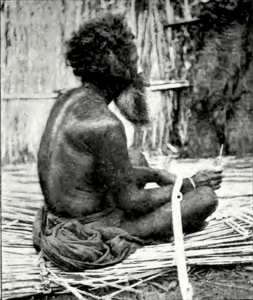
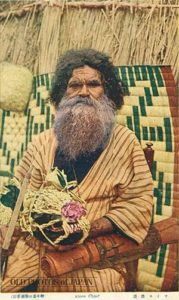
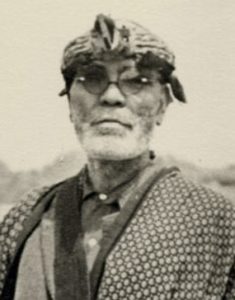
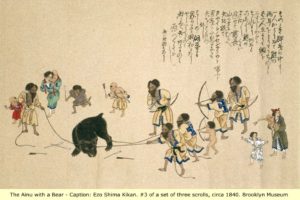
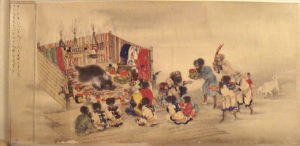
Jomon, Ainu predecessor culture. Reached Japan by at least 30,000 B.C.:
Xia (ca. 2000-1700 B.C.), Shang (1700-1000 B.C.), and Western Zhou (1000-200 B.C.) dynasties, China (east-central region, centered in modern-day Shanxi, Henan, Shandong, and Hebei provinces) (A note on China, since it has not been discussed yet: while the below archaeological evidence, abstract in style, may not conclusively illustrate that the Ancient Chinese were black, the facial and body impressions they give strongly indicate an ethnicity other than mongoloid and are not inconsistent with what might be called black ethnicity. One must also consider that all the surrounding regions – India, Southeast Asia, and Japan – were provably black at that time, as well as the marked affinity in artistic and architectural styles – including highly abstract, fluid depictions of people and animals in jade, fluorite, and other gemstones, and the building of earthen, flat-top pyramids (or trapezoidal tumuli to be more technical) – with works by a variety of Mesoamerican civilizations in the Preclassic and Classic periods, most closely with the black Olmec and Mound Builder or Mississippian civilizations which rose to and remained in power over precisely the same time period (and much later in the case of the Mississippians, who fell outside of the ‘mongoloid alley’ from Arctic Canada to Central Mexico to the Andes and South American interior and were spared absorption and/or displacement). If these dynasties were black, it is safe to conclude that all regions to the south and southwest – i.e. virtually all of China save Manchuria and Inner Mongolia – were also initially black. The Han dynasty (200 B.C.), the namesake for modern Chinese ethnicity, would seem to mark the introduction of non-black peoples into China, with the country remaining fairly heterogeneous in the subsequent centuries but increasingly light-skinned and straight-haired as mongoloid peoples, from the north, northwest, and west, perhaps with Siberian caucasoid and later Turkic admixture, were increasingly absorbed until China, and later Southeast Asia and later and to a lesser extent Polynesia, became predominantly mongoloid, a process that did not approximate its current stage until at least the early 1900s A.D., before which time a large percentage of Chinese were significantly darker skinned. Chinese continue to be considerably darker and more melanin-rich than they appear, but hide it through fanatical sun avoidance and skin-lightening methods spurred by an aggrandizement of light skin tone by its culture, which also exists in once-black Southeast Asia and India. Given the timing of the construction of the Great Wall, whose footprint was complete well before the entry of the Han dynasty, it may well have been originally constructed to keep nomadic, lighter-skinned mongoloid people out of sedentary, agriculturalist, largely black China, and only later to stop the Golden Horde, by which time China was already largely mongoloid. This attempt at a defense against northerners coincides (in broad historical terms) almost exactly with the over-running of Egypt and the Levant by apparently north or northeastern outsiders, and suggests southwest and southeast invasion by light-skinned nomads into Europe and Asia from points in West-Central (caucasoid) and East-Central (mongoloid) Asia, resulting in the displacement of original, sedentary black cultures in both areas. Between 400 B.C. and 400 A.D. Southern Europe (Etruscans (who appear to have been mulatto), Archaic Greeks (“), Minoans (“), Egypt, the Levant, Iran, India, China, Japan (Jomon, Ainu), Southeast Asia, Northern Mexico and Central America, and the Andes (and Micronesia, Polynesia, and New Zealand a few centuries later) all underwent major ethnic transformations that involved black or negroid populations deeply absorbing or being displaced by invading, nomadic or seafaring mongoloid and caucasoid peoples. This suggests that mongoloid and caucasoid people did not exist in many areas of the world, if at all, for much time before this point, or if they did would had to have been confined to Central Asia. The timeline of 400 B.C. is 400 A.D. is 10,000 or more years later than alleged by mainstream history; every one of the aforementioned geo-ethnic transformations, easily chronologically traceable by an honest look at the archaeological record, is utterly left out of that history. In terms of modern Asian ethnogenesis, there are no genetic markers carried by Asians that are not also held by black African people, and the facial features of Africans such as the Khoisan people, resemble modern East Asians. Thus it is possible that what we know today as mongoloid ethnicity may just be the product of ancient intermixture of an invasionary [light-skinned, straight-haired, and definable as ‘white’ due to a genetic mutation for hypo-pigmentation] people of Dravidian ethnicity – offshoots from the majority in the Indian subcontinent – and aboriginal black Asians of Khoisan-like ethnicity, which eliminates the necessity for their having ever been a distinct mongoloid race (or caucasoid, ultimately); see Appendix H for more):
Compare to Mound Builder and Olmec artifacts from North America (see Appendix B for many more examples) (while it’s not relevant to this article on black history, there is no doubt that a group of non-black, non-mongoloid-Indian East Asians (similar or same in appearance to modern East Asians) arrived to the Americas between 900 and 300 B.C.; see Olmec child figurines for some of that evidence. It is not certain whether these people remained separate from the black Olmecs (who both predate and post-date the non-black East Asian group), or perhaps more likely, whether they immediately intermixed and became black-(non-black) [East] ‘Asian’ mulattoes, and the figurines are not self-representation but an homage to their mongoloid Asian partial homeland. While this article is claiming – for the sake of nothing but truth – that the majority of early antiquities do derive from black peoples, by a certain period time, perhaps beginning around 1,000 B.C., non-black groups (e.g. Romans, mid-to-late-stage Greeks, Scythians and Celts, Turks, [later-stage] Arabs and Semites, Han and Yamato, to name only a few) began to spread around the globe and create their own. Additionally, while the Americas remained mostly black until the time of European contact, there is incontrovertible evidence of not only non-black East Asian but also non-black European or Levantine peoples present as a minority group, or minority ethnic contributor (who immediately mixed and melded into the rest of the population) in Mesoamerica starting around 100 A.D. In most places where there were predominantly black civilizations in the Americas and elsewhere, there were non-black members who made contributions, just as non-whites have made many in largely white civilizations.):
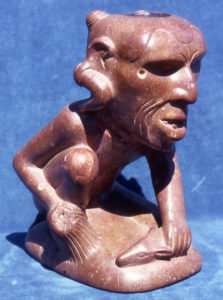
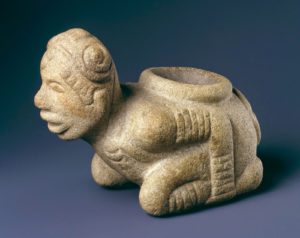
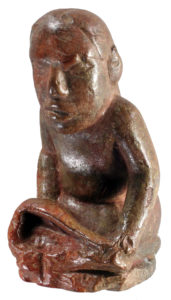
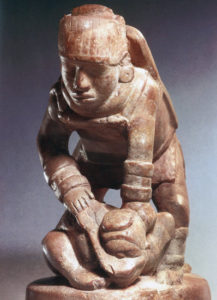
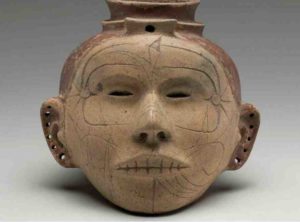

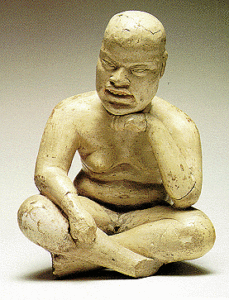
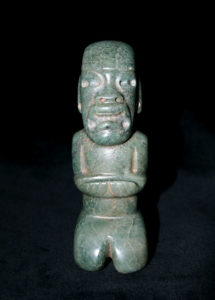
Nakhi figure from Yunnan province:
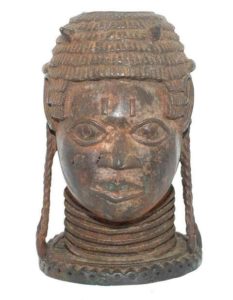
Hongshan figurines, Manchuria (compare to Xia) (no early Korean archaeology has been released):
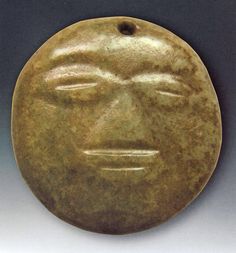
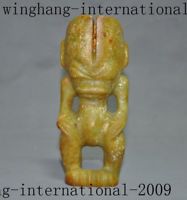

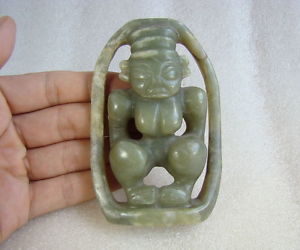
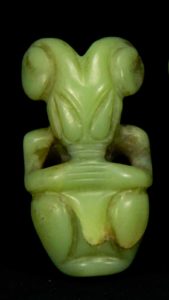
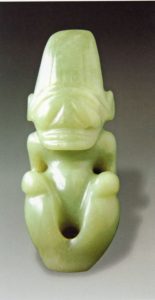
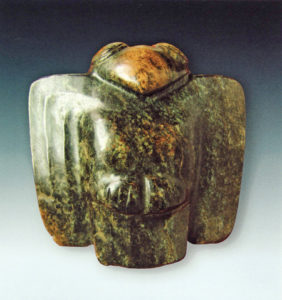
Photos of detainees from the Boxer Rebellion of 1899:
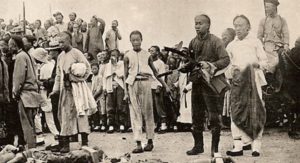
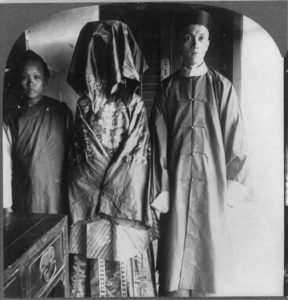
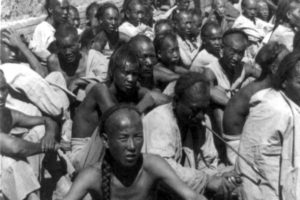
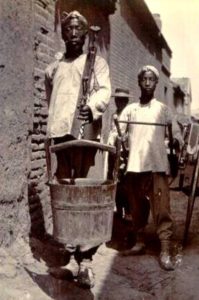
First row: early 20th century Tibet, southwest China, prior to 1950 invasion (third photo is from Tshang nunnery), second row, early 20th century Yunnan province (south-central China):
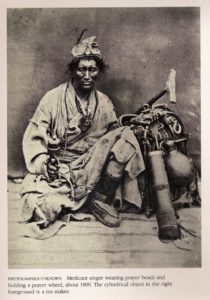
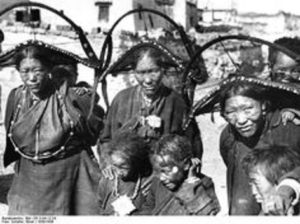
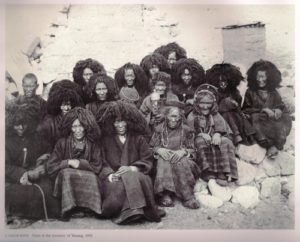
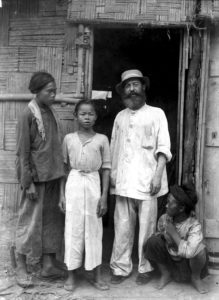
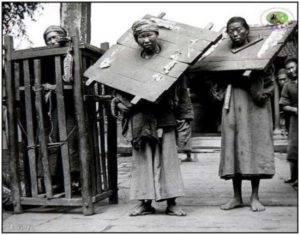
Who were the 60 million who died during Communism?
Photos of Chinese laborers sent abroad, often forcibly:
Image from homepage of Library of Congress meant to represent Chinese laborers:
Extremely rare photos from renowned Scottish photographer John Thomson, taken throughout China in the 1860s and 1870s:
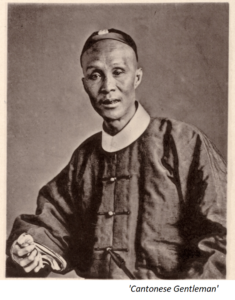
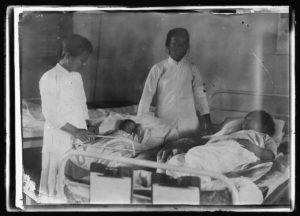

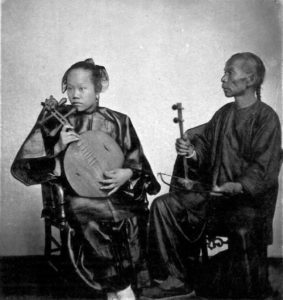
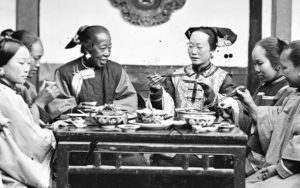
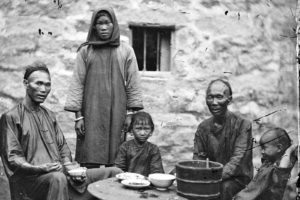
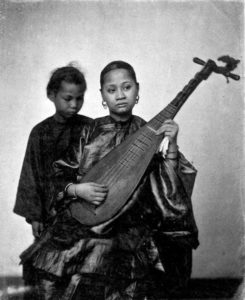

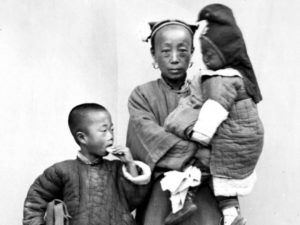
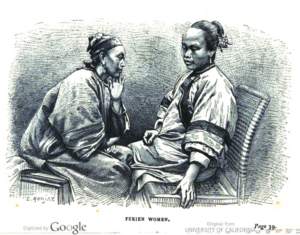
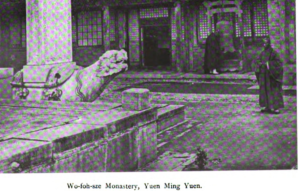
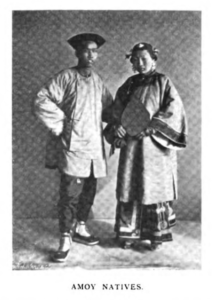
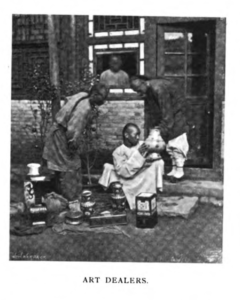
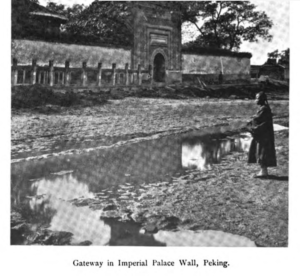

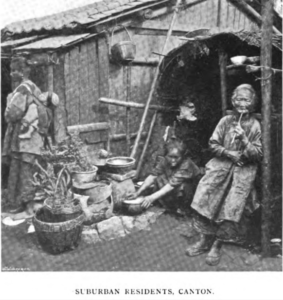
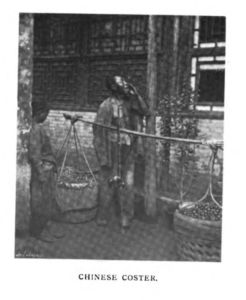
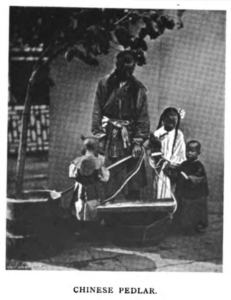
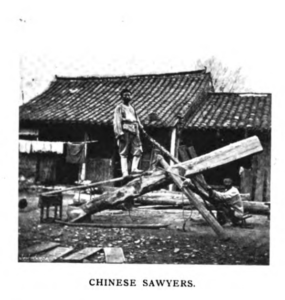
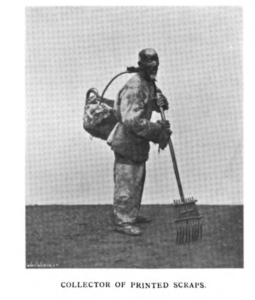
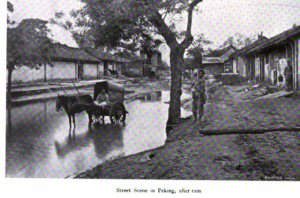
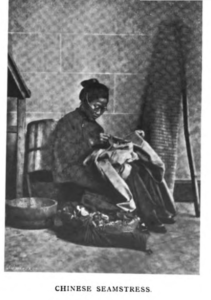
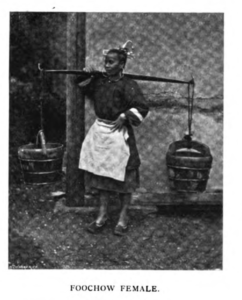
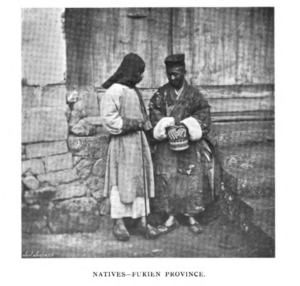
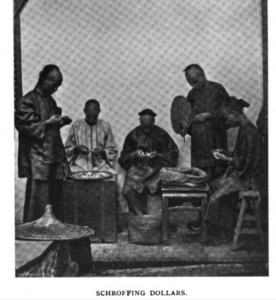
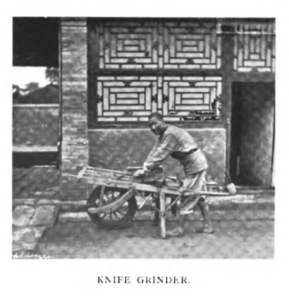

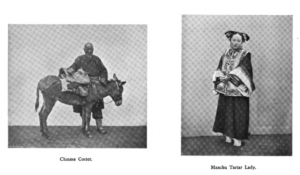
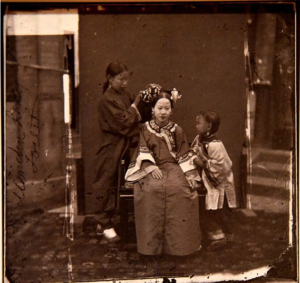

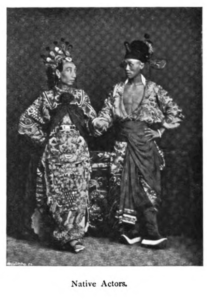
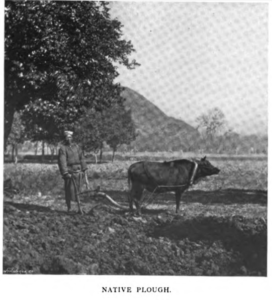
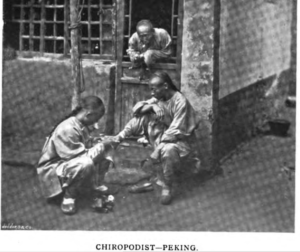
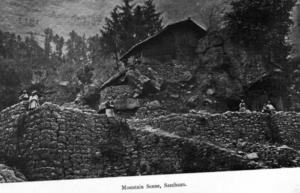
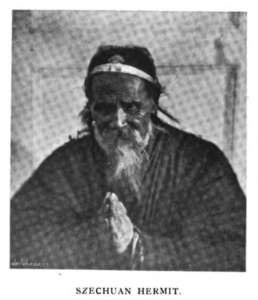
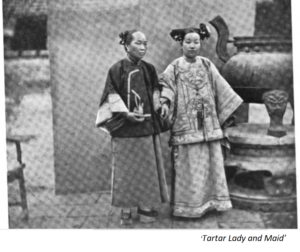
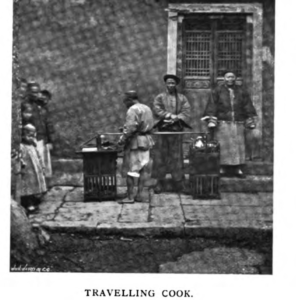
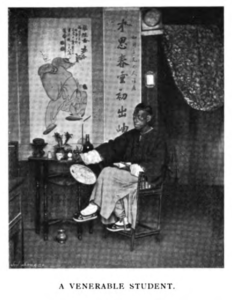
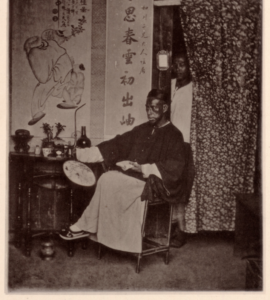
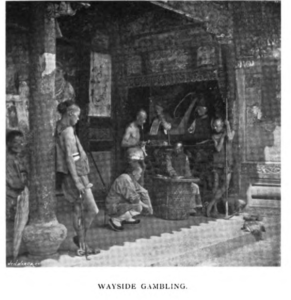
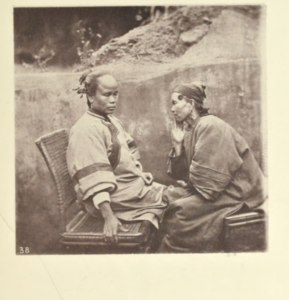
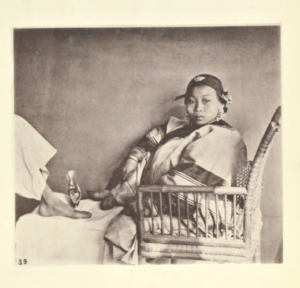
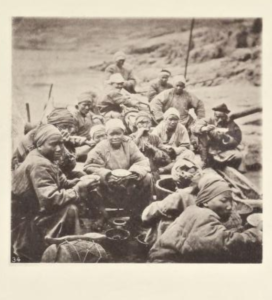
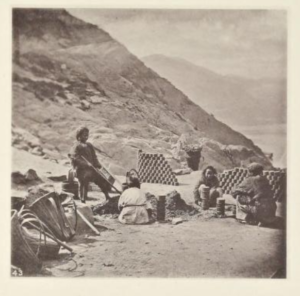
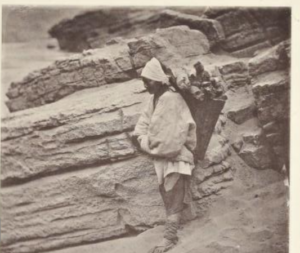
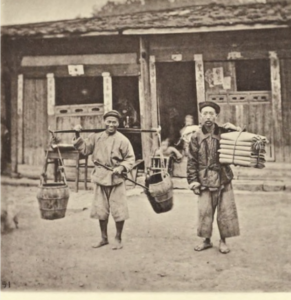
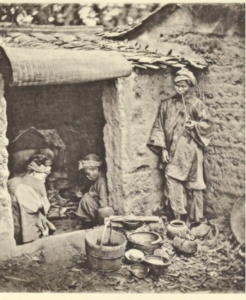
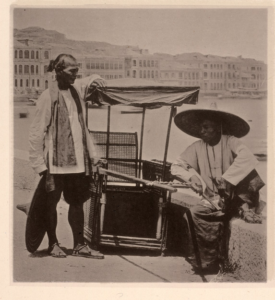
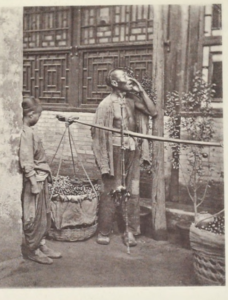
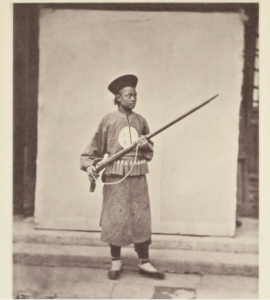
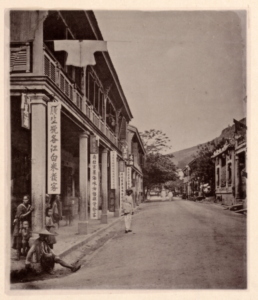
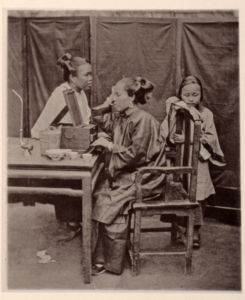
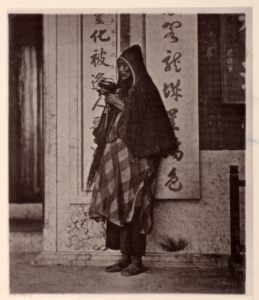
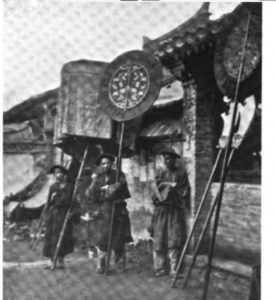
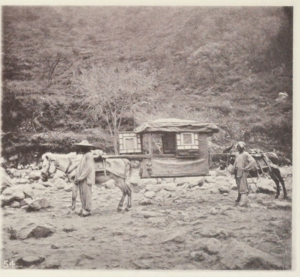
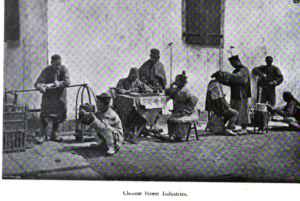
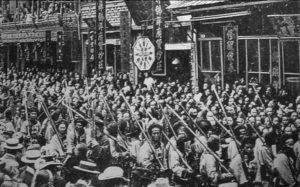
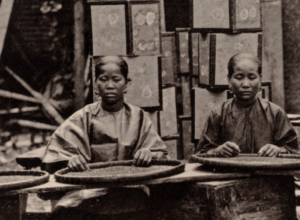
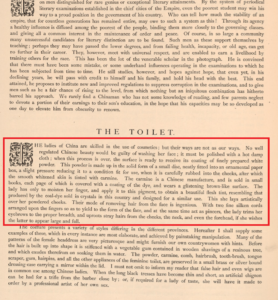

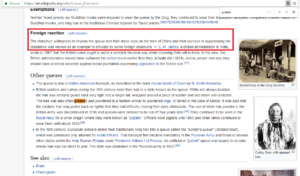
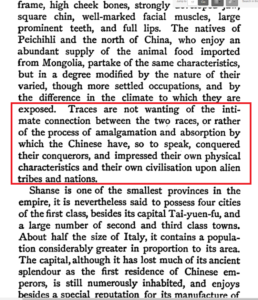
The primary historical definition of China, and its relation to the Qing Dynasty and ‘Grand Tartary:’
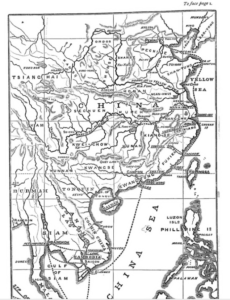
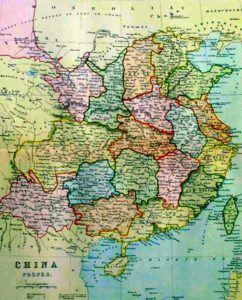
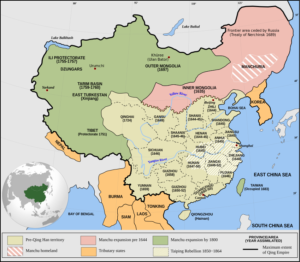
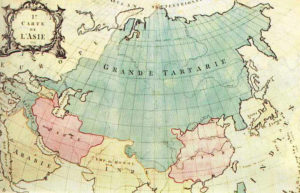
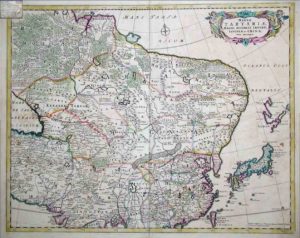
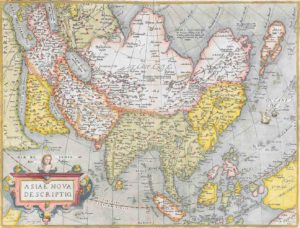
Ground and aerial photos of Chinese pyramids in Xian region (mostly dating from the Hongshan period; see above), few of which have been excavated, and which instead of being investigated are now being planted over with trees; at right, ‘statues of foreign ambassadors, now headless’ from Qianling mausoleum:


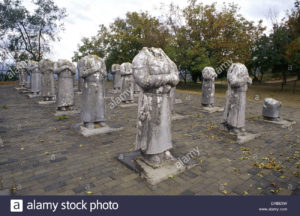



Cham or Champa, Vietnam (up to 1500AD):
Mani, Thailand and Cambodia (up to present day, gradually displaced since about 1500AD):
Funan Kingdom: Burma, Thailand, Cambodia, Malaysia (up to 1000AD) (last three images are Buddha):
Gond, aboriginal people of central India:
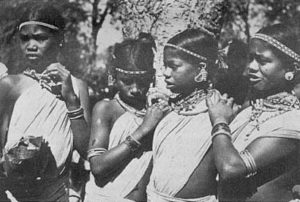

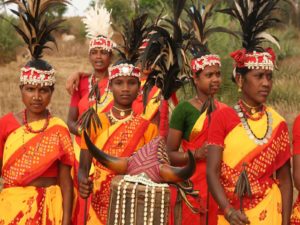
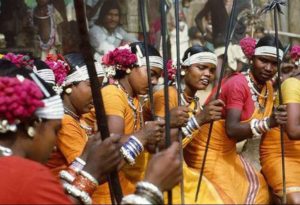
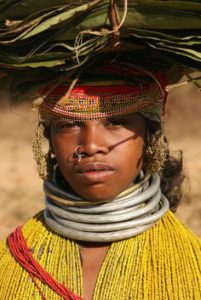
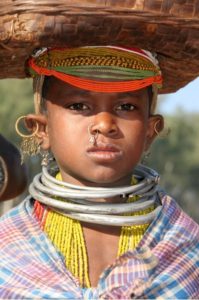
Vedda, aboriginal people of southern India and Sri Lanka (with non-black admixture):
Pakistan (compare fifth to Jomon figures):
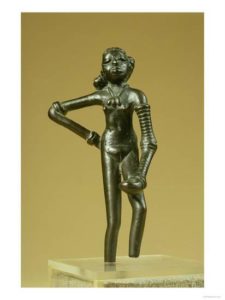

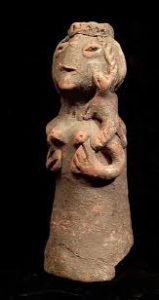
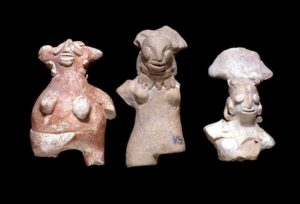
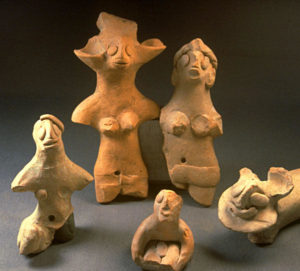
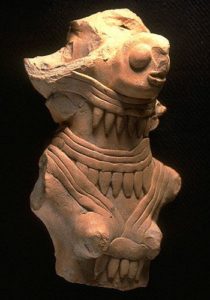
Ancient Elamites, Iran (center, relief of King Artaxerxes III)
Modern Yemeni people (with non-black admixture) (currently subjected to genocide by US and allies):
Akhdam, aboriginal people of Yemen:
Old to Middle Kingdom Egyptians, responsible for the Sphinx, Great Pyramid of Giza, and what are generally considered to be the greatest Egyptian monuments. Black phenotypes continued to appear through the New Kingdom (which showed a pronounced degradation of engineering and architectural prowess) but with less frequency. Row 1 – Great Sphinx, whose erosion patterns at base indicate age of at least 7,000 years; Row 2 – Djoser (first known depiction of a pharaoh; 3rd Dynasty, 2700 B.C.), Khasekem, Huni; Row 3 – Djedefre, Niuserre, Pepy (Old Kingdom); Row 4 – Mentuhotep, Amenhotep III, Tiye (Middle Kingdom); Row 5 – Tiye, Akhenhaten and Nefertiti, Nefertiti (Middle Kingdom); Row 6 – Senusret III (Sesostris), Senusret III, Sahure (New Kingdom); Row 7 – Ahmose II, Taharqa (New Kingdom), Ptolemy II (first pharaoh after Greek conquest of Egypt aka Ptolemaic Egypt, which ended in annexation to the Roman Empire).
Columbus reported to the Spanish crown that he had reached ‘islas de las indias,’ islands of the Indies. Historically, the term India has meant virtually all of Asia, and at that time meant all of South Asia, Southeast Asia, and Oceania (the westernmost portion of which, i.e. Melanesia, was known to Europeans). Melanesia, Indonesia, the Andaman islands, and the southeastern fringe of Southeast Asia were populated primarily by aboriginal black people at the time of Columbus, the same ethnic groups pictured below. Today this area is known as the East Indies (the islands of the Caribbean Basin are known as the West Indies).
Andamanese people, Andaman Islands (indigenous East Indians):
Semang people, Malaysia (indigenous East Indians):
Batek people, Indonesia (indigenous East Indians):
Aeta people, Philippines (indigenous East Indians):
Papuans (non-African, indigenous East Indians, as above) (Indonesia and Papua New Guinea):
Now do you see why Columbus called the black indigenous people he encountered [East] Indians?
Papuan, Indonesian, and Nicobar archaeology (compare to Polynesia, Africa; compare bird figure to Taino):
Australian aborigines:
Tasmanian aborigines (extinct from genocide; the man on bottom right, William Lanney, being the last):
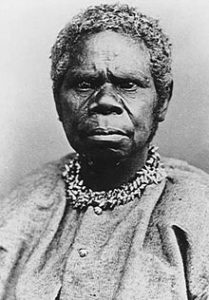
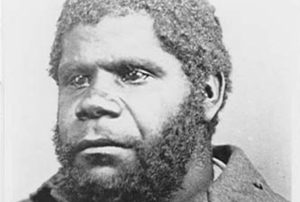
Moriori people, pre-Maori, New Zealand and Chatham Islands (extinct from genocide and absorption) (compare to Polynesian art below):
The ‘last’ of the Moriori people, who make up the indigenous heritage of the group now known as Maori, some with limited foreign admixture:
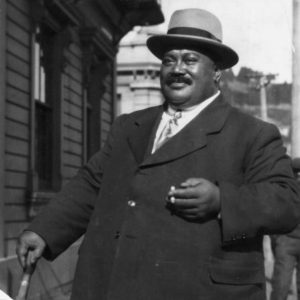

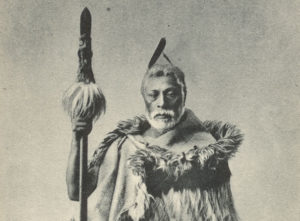
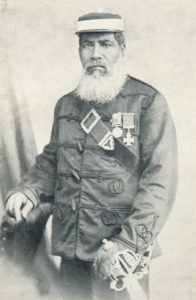
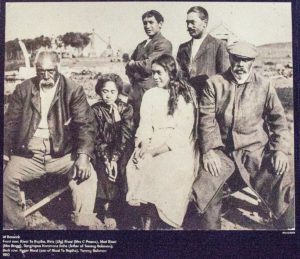
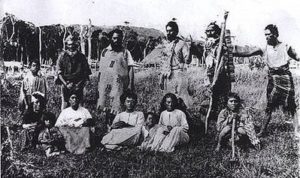
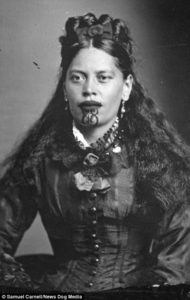
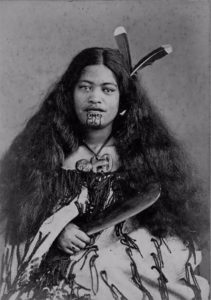
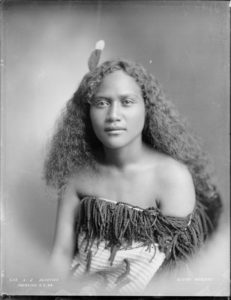
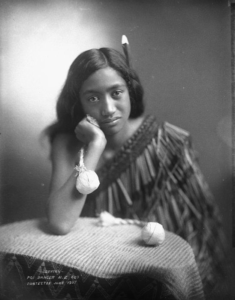
Modern ‘Maori’ people, most of whom are tri-racial and bi-racial people of [black] indigenous Moriori, European, and/or Chinese/East Asian ancestry (compare female chin tattoos with American Yavapai tattooing):

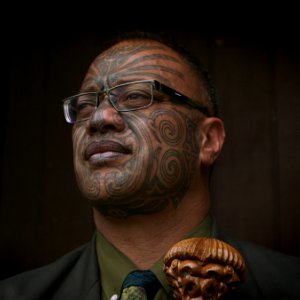
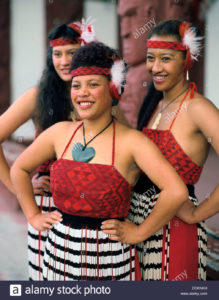
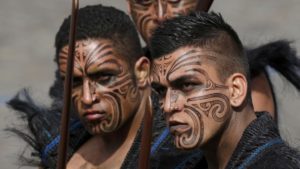

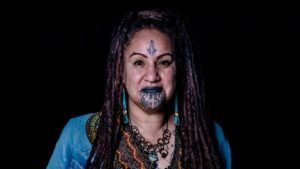

Bunun people, mongoloid-admixed descendants of black aboriginal Taiwanese, the latter of whom are extinct from admixture and genocide:
Fiji (iTaukei) (non-African, indigenous Pacific people):
Vanuatu (South Pacific) (indigenous Pacific people):
New Caledonia (South Pacific) (indigenous Pacific people):
Marshall Islands (Micronesia), Caroline Islands (Micronesia) (from 1836), Tahiti, Marquesas Islands (French Polynesia), Cook Islands; cover page illustration from the 1853 book ‘Journal of a Cruise Among the Islands of the Western Pacific, Including the Feejees and Others [including Tonga, Samoa, Niue] Inhabited by the Polynesian Negro Races;’ Gambier Islands, Austral Islands:
Observe nearly identical numbers in Polynesian and Melanesian languages:
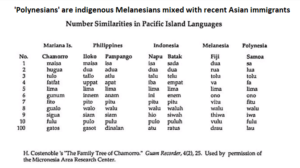
Earlier and modern inhabitants of Nauru and Kiribati (Micronesia), with modern people showing varying degrees of mongoloid admixture from recent Chinese and Filipino immigration:
Earlier Samoans and Tongans (late 19th and early 20th centuries), with less mongoloid admixture than today’s population. Second row: chief of Tutuila island, Samoa (1853); earliest photographed king of Tonga (George Tupou I, same in profile sketch from 1852); Samoan ‘ava ceremony; passage from ‘Journal of a Cruise’
A series of photos of the Tongan royal line, demonstrating the gradual increase of mongoloid admixture from the late-19th century to present; first is George Tupou I, 1797-1893, then George Tupou II, Salote Tupou III, George Tupou IV, George Tupou V, and last is current king George Tupou VI, 1959-):
Hawaiians (the original people, not late-coming Filipino and Japanese transplants; with more recent, photographed subjects perhaps having very limited mongoloid and/or white admixture; Chinese laborers were imported en masse to Polynesia and Hawaii beginning in the late 18th century after discovery of the islands by Captain James Cook; Mexico and Central America also received mass importation of Chinese from the 16th to 20th centuries via the Manila Galleon trade route)
Easter Island (compare pose of reddish figure with Polynesian figures):
(As to the large Moai statues which do not appear black, and are the only non-black archaeological artifacts ever found in all the Pacific islands, there are a few possibilities (including combinations of the four, since there are many Moai sites):
A) being by far the most prominent examples of Pacific archaeology – and all the rest of Pacific archaeology, including the Easter Island figures below, being hidden from public view; if you doubt this, type in ‘Pacific archaeology’ on Google Image and scroll down as long as you wish, hundreds of images down, and you will find nothing but images of larger Moai, no other humanoid figures and none of those that are above or below – as well as the the most important to hide due to the island’s closest proximity to South America, they are forgeries (or disfigurement) based on the black-appearance, far older Moai figures below The facial features are not unlike the admittedly fake ‘Arawak’ figures further down the page. Some of the faces appear to have been carved very recently, particularly the noses, with much more weathered bodies. Others appear older.
B) They are symbolic of visitors or people encountered at some point, represent deities, or are abstract art of some kind and are not representative of the inhabitants.
C) Given the extreme variety of facial features and highest level of genetic diversity among Africans, black Americans, and other people defined as black, they are a stylized or exaggerated depiction of an already rare phenotype, perhaps of an important historical figure or family.
D) They were created by a non-original, mixed-race people who returned there from South America sometime after 200 AD, once non-black peoples had been absorbed into black aboriginal populations in Peru and other parts of Western South America, and then mixed with the aboriginal islanders.
The wooden Rapa Nui figurines, example below, represent a person who has starved to death, while the other pose with a distended stomach presumably represents fullness and prosperity.)
Compare Polynesian, Hawaiian, Moriori (New Zealand), and Easter Island figurines to ancient Dogon archaeology of southwestern Mali (West Africa). The Dogon people possessed broad and highly precise knowledge of astronomy not known or visible to Westerners before the advent of modern telescopes:
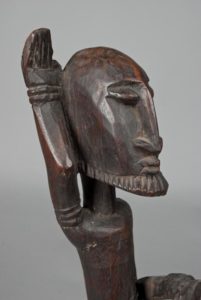
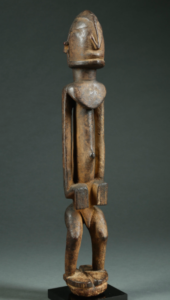
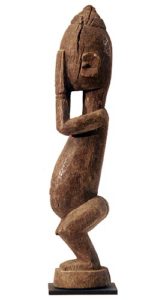
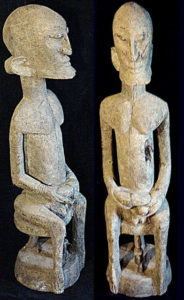
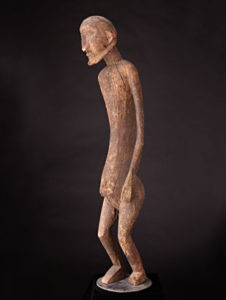
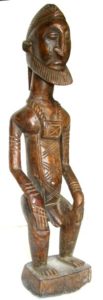

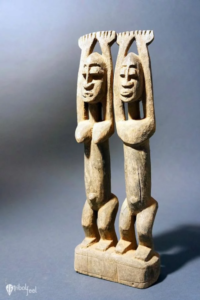
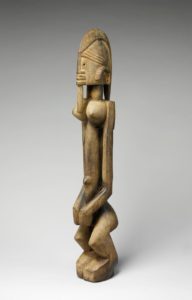
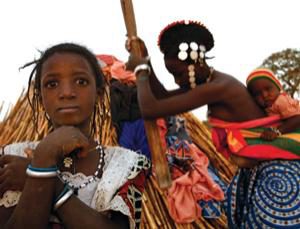
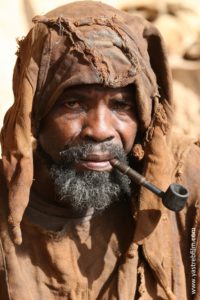
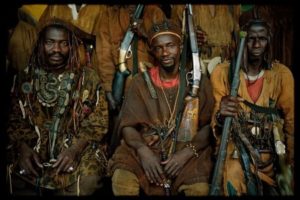
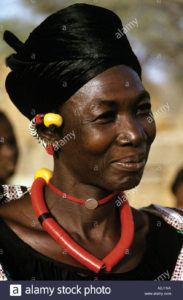
See also: Burkina Faso (Lobi), Ivory Coast (2) (Baule), Ghana, Nigeria, Cameroon, Gabon (3) (Fang), D.R. Congo (6) (Boyo, Hemba, Songye), Angola, Tanzania (2), Madagascar (Sakalava) (compare to Pacific artifacts, including New Zealand and Easter Island) (compare also to Caribbean, Costa Rican, and Peruvian figures below):
Göbekli Tepe, Turkey (previously buried, oldest known site of civilization; 12,500 years old) (compare abstract head depiction to Ethiopian artifacts in third and fourth photos, and Ethiopian man in the following) (next images: compare Göbekli Tepe carvings to aboriginal Australian symbolism):
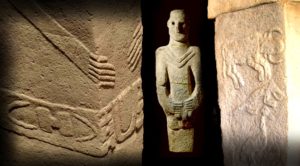
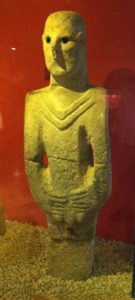
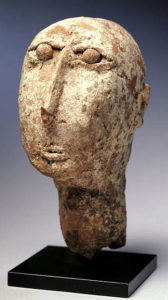

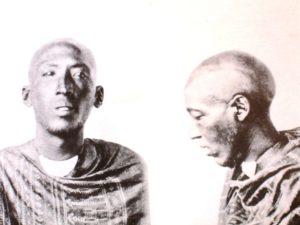
Series of photos illustrating the genetic and phenotypic diversity of Africa. All photo subjects are ‘sub-Saharan Africans’ (though North Africa and the Sahel are still home to diverse black peoples). This is not to suggest that all humans necessarily originated in Africa, but to show that ‘black’ people both inside and outside of Africa, sub-Saharan or otherwise, display a wide variety of features, debunking racialist ‘no true Scotsman’ arguments with regards to blacks and Africans, where black antiquity is robbed from blacks by being called ‘not really black,’ ‘blackish,’ etc.:

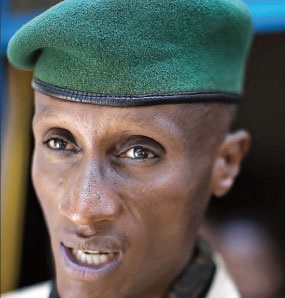

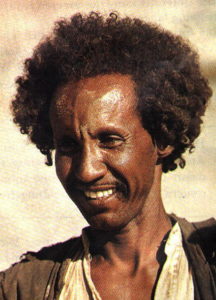
Darker-skinned people today called black discovered and settled every last island in the remotest regions of the Pacific – including Easter Island, which is over 9,000 miles from Southeast Asia, is part of the nation-state of Chile – and about the same distance to its coastal Juan Fernandez Islands as it is to nearby Tuamoto and Pitcairn Islands, and shares the same longitude with Colorado – likely thousands of years ago and perhaps tens of thousands. Is it reasonable to believe they would not have run into the vast American continents at some point, via the Central and Southern Pacific, the Bering Strait, and/or the Kuril-Aleutian island chains from Japan to Alaska (where distances rarely exceed 50 miles)? The answer is absolutely not, but the question is moot as it is exhaustively answered in the next section.
The Polynesians, Micronesians, Maori, and Hawaiians as separate, non-black groups have been invented (yet again, by means of an abstract anthropological theory that has zero archaeological, historical, or even linguistic evidence behind it, and arises from a flawed starting historical premise) to give the impression that black East Indian and Western Pacific peoples were not able to advance eastwards past Melanesia. Polynesia and Micronesia were selected for ‘breed-out’ and ‘containment’ efforts due to their geographical position and much smaller size and population, and New Zealand for its isolation and proximity to Australia.
Appendix B
Over 200 instances (including collage images) of archaeological testimony of black peoples in pre-Columbian Ancient America, including the Caribbean (post-Columbian renditions to follow). Note that while there are some Mayan exhibits presented, nearly all Mayan pieces that show a front-facing, realistic human subject (as opposed to a profile depiction, or abstract art) have either been disfigured (the smashed nose and lips we see in so many Egyptian and Mayan pieces, in spite of other, more protruding details on them being preserved) or destroyed altogether (e.g. at Copan ruins). The following are a small fraction of such pieces still extant, with most monopolized by private collectors or held by institutions but removed from public view. Most of those displayed below were gathered by scholars who were granted special access to view the pieces. However, many are still available to the public, but generally dispersed as single pieces, with questions of their contrast with official history either unacknowledged or left open.
There are other important things to point out with regard to the following. First, they are not entirely representative of the overall body of pre-Columbian art, and have been selected to prove the thesis in this article, that there were people who would today be defined as black in America before Columbus; as many would assume, pieces that do not depict black people have been omitted, and only for the sake of brevity since all of pre-Columbian history cannot be covered in a blog post. In this field one will encounter a wide variety of phenotypes: black American, black African, Plains ‘Native American,’ people similar to [non-black, recognized] indigenous Mexican tribesmen, people similar to modern-day Latin American mestizos (who are said to have tri-racial [non-black] indigenous, [indigenous] black, and white heritage); people similar to Middle Easterners, and a few instances of people of Celtic or European appearance. What is true of black representations is that they A) are by far the oldest, B) are found in by far the widest geographical range, and C) are found in the regions of the Americas with the highest carrying capacity and population density, as well as that D) black populations are larger than any unmixed indigenous group in the Americas today, so to call them the ‘main’ peoples of pre-Columbian Americas would seem to be accurate.
Another important question to address is why so many pieces are from Mexico and Central America. The answer is many-faceted: A) because most of the largest pre-Columbian cities that have been discovered are there (though recall the condition of Machu Picchu (1) (2), Teotihuacan (1) (2) (3) (4) and Göbekli Tepe (1) prior to excavation, places that were not excavated until the 20th centuries, centuries after colonial rule began, and could have remained permanently hidden to the public had there been a political agenda to do so; it is entirely possible there are undiscovered cities underneath landfills or developed or forested hilltops, on protected government property, or in the millions of square miles of seabed that was once above ground, or that cities were destroyed or even buried (as happened with Göbekli Tepe, though it is not known when or by whom, apparently relatively recently based on soil conditions. Tenochtitlan (1), the enormous capital of the Aztec empire, was buried beneath the Spanish colonial city that became Mexico City, and its location was not apparent and not ‘rediscovered’ until the early 20th century, over 400 years after the fact, and no excavation at all took place until 1978) by colonists and Conquistadors; what do you think would have been more important to the Western power structure, a new tourist exhibit glorifying non-whites, or protecting the white takeover of one of the richest territories in the world, by means of preserving a false historical narrative?) B) because it has been the site of the heaviest ethnic intermixture and thus the first layers to be excavated would show not-unequivocally-black peoples, and thus be ‘safe’ to encounter; C) that the nations there are not as tightly controlled by the white-dominated Western power structure and white-centric academic establishments, which have hidden or destroyed many of the pieces from the few excavation sites in the continental US. The biggest reason is that mainstream history holds that there is nothing to excavate virtually anywhere else in the Americas, since only nomadic tribes are said to have lived in those places (in spite of the uncontroversial but rarely acknowledged proof of country-wide road networks, multi-thousand-acre agricultural complexes, and bona fide cities from 10,000 to 100,000 people throughout the continental US) and the few traces they left would not have been concentrated enough to warrant a dig. For this reason very little archaeological excavation has been undertaken in the Eastern US, Caribbean, or Brazil, the places most heavily populated by sedentary black tribes, places which were not subject to absorption of mongoloid migrants as were Mexico and Central America from 200 B.C. around 1400 A.D., at which point intermixture had more or less reached its peak (see Appendix H for maps illustrating this migration path).
Bonampak murals (Mayan), Chiapas Mexico:
Mexico, Guatemala (including Buddha figures), Peru (to be captioned):
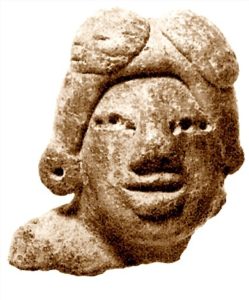
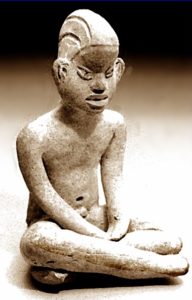
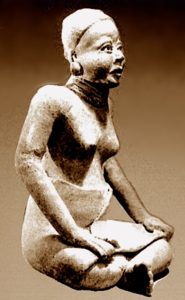
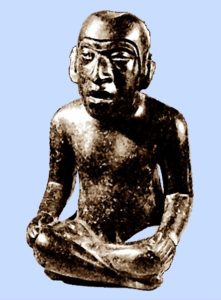
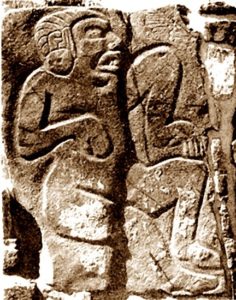

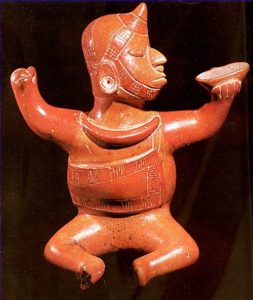
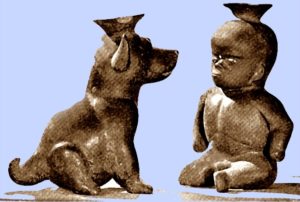
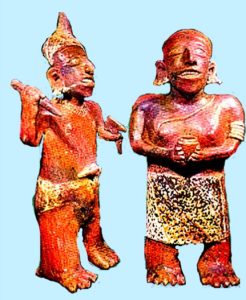
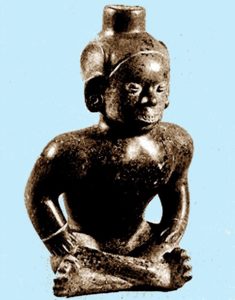
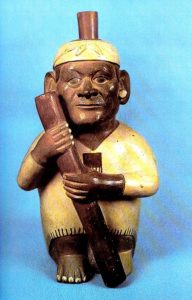
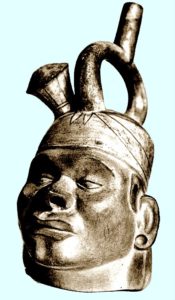
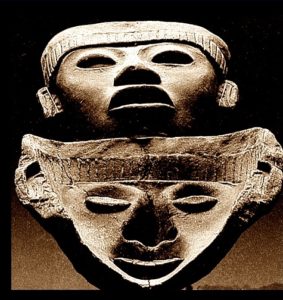
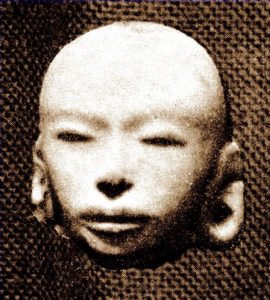
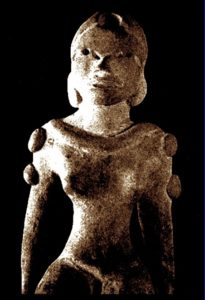
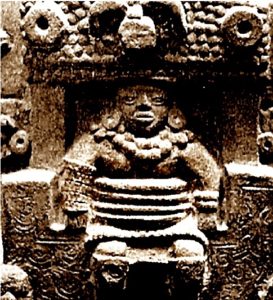
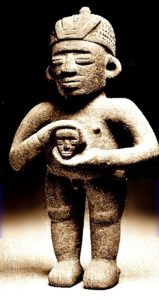
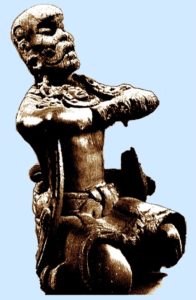
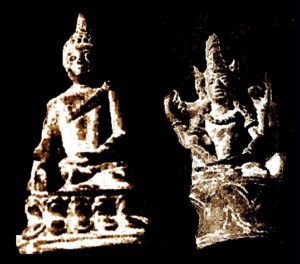
Costa Rica, Colombia, Peru; compare to poses in Appendix A above:
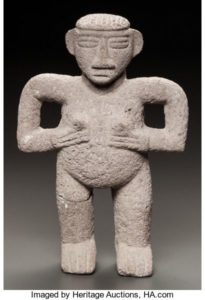
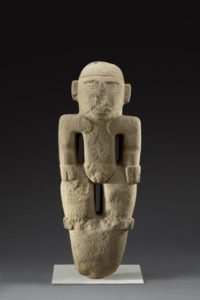
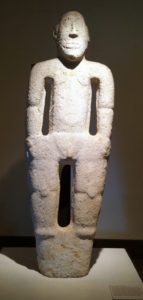
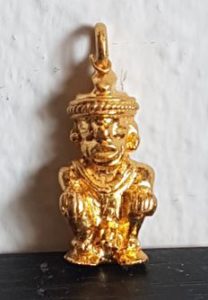
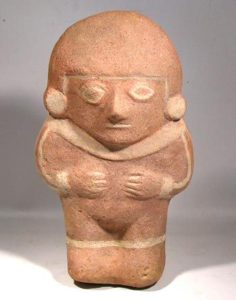
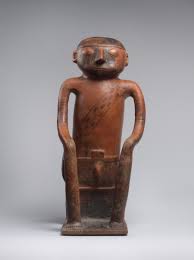

Below is a very small sampling of pre-Columbian Caribbean archaeology (from Island Carib and Taino peoples, including Ciboney and Lucayan), itself a limited field, as the invented, non-existent, purportedly mongoloid ‘Arawak’ were said to leave little behind due to their hunter-gatherer lifestyle; there is exactly zero physical evidence of any kind that the supposed Arawak people ever existed. The Arawak people never existed and were invented to ‘mongolize’ the Caribbean and muddy the anthropological waters. The last image are contemporary sculptures of invented Arawak peoples that were created in the 20th century and artificially aged to look authentic. First row: Lucayan (Taino) (Bahamas); next rows, Taino, Ciboney (throughout Caribbean, including Jamaica); last row, Island Carib (compare Taino figures to those above of Polynesia, New Zealand, Papua-New Guinea, Indonesia, China (Xia), and Africa)
Island Carib:
Statue of Taino warrior from Miranda Marin Botanical Garden, Caguas Puerto Rico:
20th-century ‘Arawak’ fakes in the Caribbean, the former modeled after mongoloid Amazonian peoples (note: these are now uncontroversially acknowledged as modern sculptures, the latter either a drawing or a paper mache, temporary mock-up used for a tabloid article in the 1920s; note also that there are no even allegedly real artifacts of any kind for the invented Arawak people):
Appendix C-1
A sampling of artifacts and skeletal reconstructions from paleolithic Europe and Eurasia:
A) Venus of Willendorf (Austria, 25,000 B.C.)
B) Hamangia figure (Romania, 5,500 B.C.)
C) Venus de Brassempouy (France, ca. 25,000 B.C.)
D) Reconstructions of neolithic Irkutsk people (Siberia)
E) Venus of Grimaldi (Italy, 19,000 B.C.)
F) Ivory figure from Dolni Vestonice site (Czech Republic, 24,000 B.C.)
More recent Vinca archaeology, Southeastern Europe (Balkans, Greece); artifacts range from 4-5,000 B.C. To explain the features, publications have described the quite realistic figures as ‘anthropomorphic’ (i.e. humanoid or human-like) and many have even put forth theories that Vinca culture were space aliens (there are highly viewed YouTube videos speculating that the establishment-paradigm-shattering Easter Island and Polynesian figures above are also extraterrestrials, when they are clearly just stylized depictions of black peoples). Last is from Lengyel culture of the MIddle and Upper Danube region (Hungary, Austria, Germany, Czech Republic):
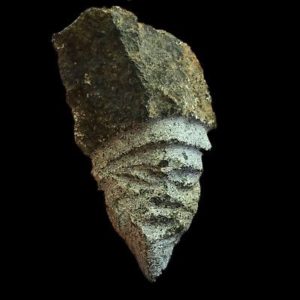
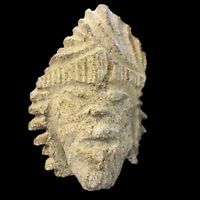
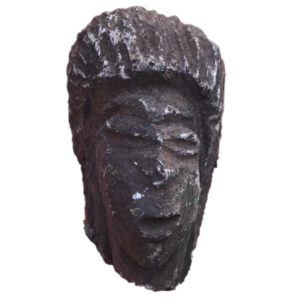
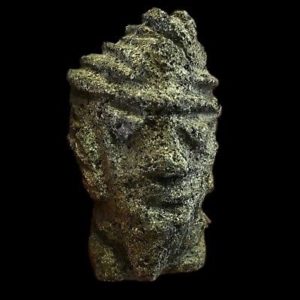

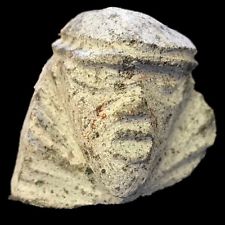
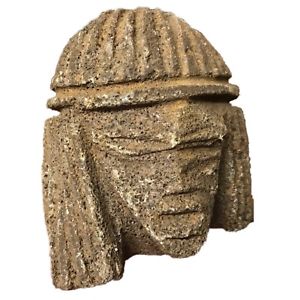
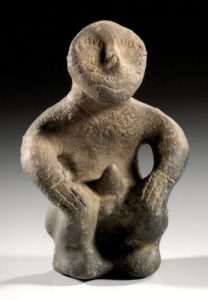
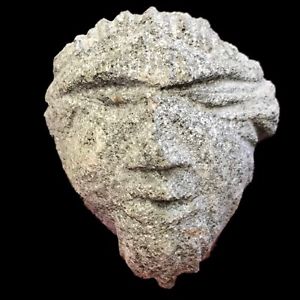
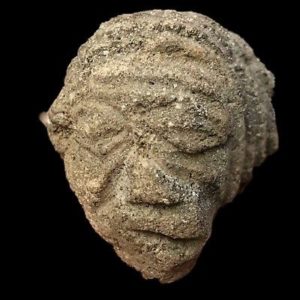
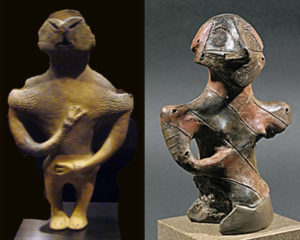
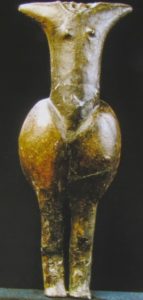
Early ‘Scythian’ archaeology in central and eastern Ukraine, claimed to be from the Yamna cultural period, the alleged point of origin for whites (which should appear European according to mainstream anthropology) (compare poses to figures in Appendix B). Last figure is from Cucuteni-Trypillia period in western Ukraine:
First two: ‘Siberian Venus’ figures from Irkutsk Russia (near Lake Baikal). The caption from one website reads “Most interesting are the hats and hairstyles. There are fur ‘helmets’ – [meaning a hat that covers the head and shoulders].” (brackets not mine). Next are Okunev figurines from central and southern Siberia: Krasnoyarsk Krai and Khakassia regions of Russia. Last are figures from the Mal’ta Buret site on Lake Baikal and Belaya River site (western Siberia) respectively. Note that the Mal’ta-Buret and Okunev cultures encompass parts of Buryatia and the Altai Mountains, suggesting that the indigenous Buryat and Oirat people (see below) were not the first peoples and migrated from a neighboring region, which based on the few gaps in the archaeological record would appear to be what is now southeastern Kazakhstan (see bisected circle in map in next section):
First figure is of Yarmukian culture (Israel, Lebanon, Syria), 4-5,000 B.C. Next are Early Bronze Anatolian (Turkey), 2,500 B.C. and neolithic pieces from Köşk Höyük site in Turkey (ca. 5,000 B.C.). Last is from Shengavit site in Armenia (compare pose to New Zealand, Polynesia, Africa):
Appendix C-2: An Aside on ‘White History’
A discussion of the Kalash, Khowar, Pashtun peoples of the Khyber-Pakhtunkhwa and Gilgit-Baltistan regions of northern Pakistan and the Jammu and Kashmir region of northern India; Nuristani and Hunzakut people of northeast Afghanistan as the originators of ‘white’ ethnicities:
In the case of the Kalash, the existence of people who are as white as they come in Pakistan has been explained away in a manner similar to the escaped and shipwrecked slave stories, where ‘legend has it’ that Alexander the Great’s armies must have impregnated local women during the Greek invasion of the area in 330 B.C., when Alexander and his soldiers were likely of light or medium olive or mulatto tone (not the white appearance conveyed by Renaissance-era forgeries; more on this above), when no such outcome has provably occurred anywhere else in the world, when the language of the people below is Indo-European (to be exact, Indo-Aryan, a sub-group of Indo-Iranian) but bears no notable relation to Hellenic languages, and when one white, foreign father does not produce the results below after 2,000 years of intermixture with locals who were presumably darker skinned – unless they weren’t. Neither does their polytheistic, animist religion – still held by the Kalash but abandoned by other white groups who converted to Islam in the 19th century – bear any relation to Ancient Greek religion. Worst of all for the theory, Alexander’s empire only controlled the area for eight years, ceding it to Indian ruler Chandragupta Maurya in 322 B.C.. Like much of what is detailed above, it’s an insultingly ridiculous theory, and that it has stood at all is a testament to the strain whites will make in order to perpetuate a false narrative of world history. Non-tabloid sources, aware of the theory’s absurdity and of the commonness of white ethnicity in the country and surrounding region, describe the Kalash as an indigenous people of Afghanistan. If Alexander’s troops had any contact with the Kalash, and there is no specific evidence they did, it would have been as a brief, negligibly small ‘breeding event’ involving darker Greeks with lighter indigenous Kalash; though likely not Alexander himself, who appears to have been primarily homosexual. However tiny a contribution in one’s heritage an important historical figure has made or is said to have made, perhaps only comprising a thousandth or ten thousandth or less of the person’s or people’s heritage – it tends to be greatly exaggerated and pushed to the forefront.
Such tales have thankfully not been applied to the Nuristani, Hunzakut, or Khowar peoples of Pakistan and Afghanistan, who display phenotypes every bit as white as the Kalash, and whose similarity in dress and culture (which strongly recalls many forms of Ancient European, non-Greek dress) would make non-relation inconceivable. Aside from the Alexander canard, no explanation for their appearance has been formulated. The universality of black ethnicity in the rest of the world coupled with the existence of these peoples – who are surrounded on all sides by ‘less white’ people in Tajikistan, Kyrgyzstan, Uzbekistan, and Iran – suggests that A) the region, mapped below, is the homeland or point of origin of whites, B) that whites did not develop light skin, hair, and eyes from climatic evolutionary reasons, and C) that a white ‘Indo-European’ or Yamna diaspora from this isolated mountain region (at the northeast end of the Indus River Valley) into the Pontic steppes just north of the Caucasus range from 3,300 B.C. to 2,600 B.C., where they thrived as Scythian semi-nomadic pastoralists aided further by use of domesticated horses in that region, represented the first step of whites into Europe and the wider world.
These below would be the people who chose to stay. That the Balts, who in many cases resemble the mostly Baltistani people below (contemporary Baltis are known to be heavily admixed with darker Dardic peoples, the groups below being the lightest of the Dards, and thus were likely once of similar appearance to these lightest Dards) more than do other European ethnicities (though other European features – Germanic, Slavic aka Balto-Slavic, Celtic, Italic, Magyar, Sami, and Anglo-Saxon – are also recalled), are some of the earliest known Europeans, and that their Baltic languages are Europe’s oldest (Lithuanian is closely related to Sanskrit, an Indo-Aryan language, as are the Indo-Aryan languages of the below groups), can hardly be dismissed as coincidence. In viewing ancient Baltic art, homes, and historical sites, there might be said to be a sense of ‘ancient-ness’ and ‘root-ness’ not experienced in other parts of Europe. An affinity of Dardic dress with the traditional dress of former-Yugoslavians, who inhabit the land once known as Dardania, named for the Dardani people of Scythian-Sarmatian-Thracian heritage, is also noted below. In light of everything else presented in this article, no other white-origin theory seems plausible. Rather than a white or Aryan invasion into India, a ruse to facilitate European takeover of South and Southeast Asia, it is far more likely that whites made their way out.
Kalash (Baltistan and Khyber-Pakhtunkhwa regions of Pakistan):
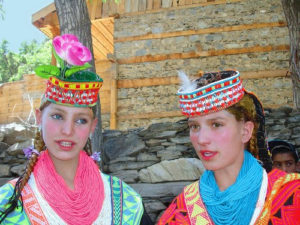
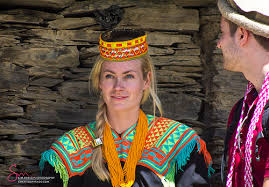

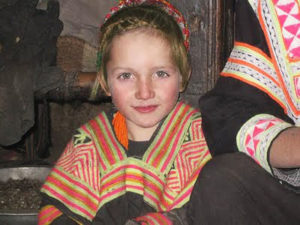
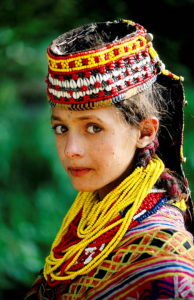

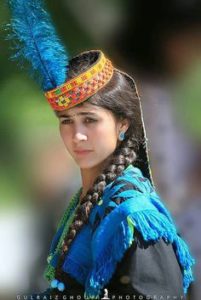


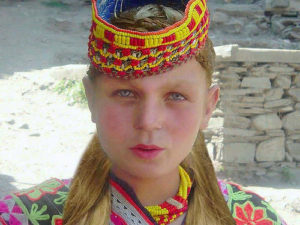

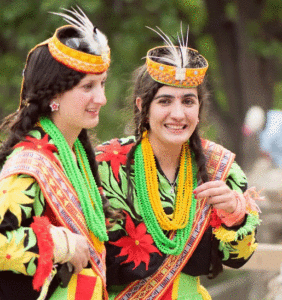
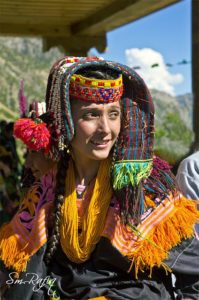
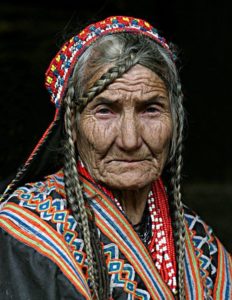
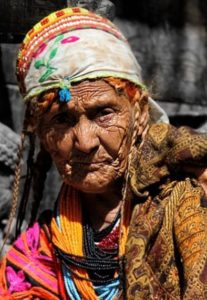
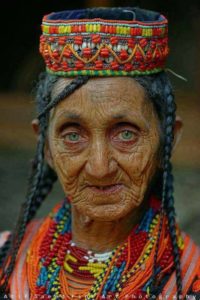
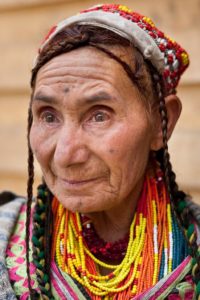
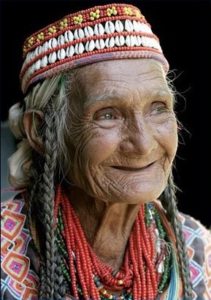
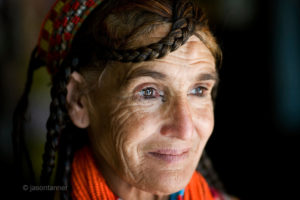
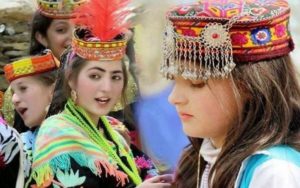
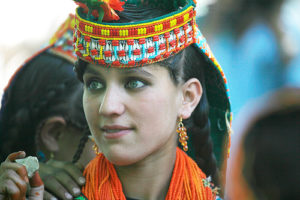
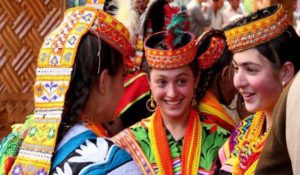

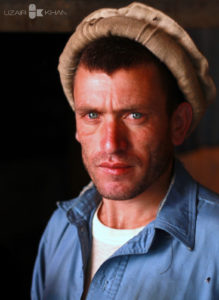

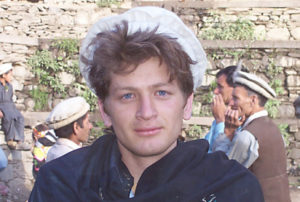


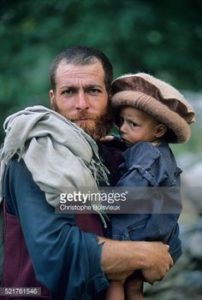


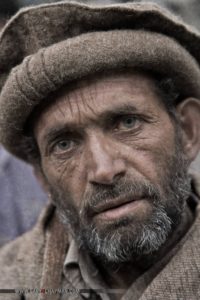

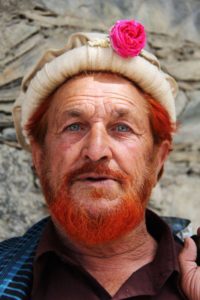

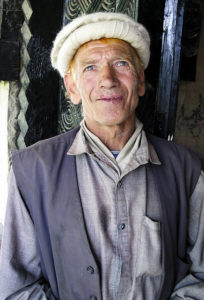
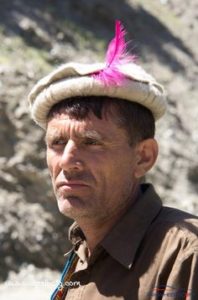
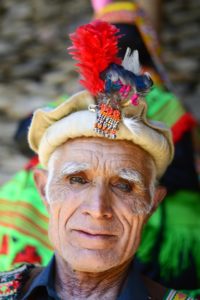
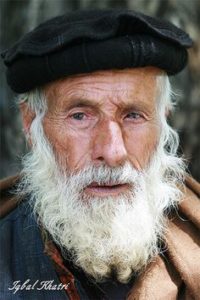

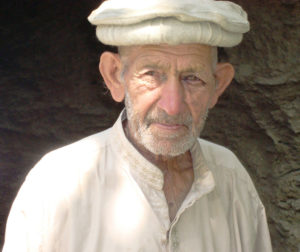
Chitrali aka Khowar (Baltistan and Khyber Pakhtunkhwa regions of Pakistan):
Hunzakut (Gilgit-Baltistan region of Pakistan):


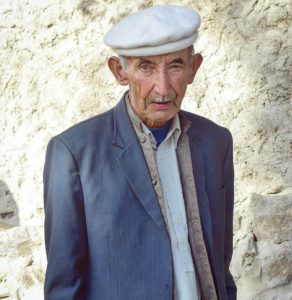
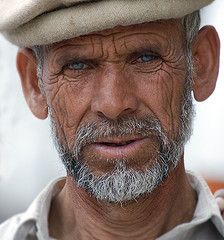
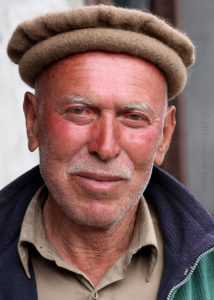
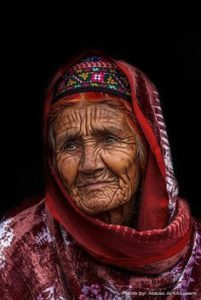
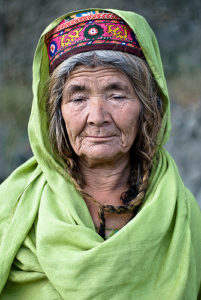
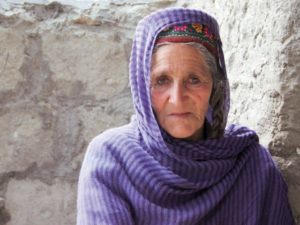
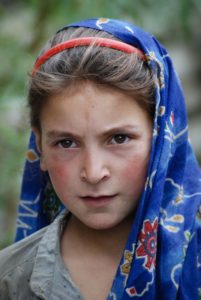


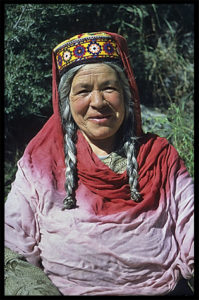

Nuristani (far Northeastern Afghanistan, near border with Gilgit-Baltistan aka Dardistan region of Pakistan):


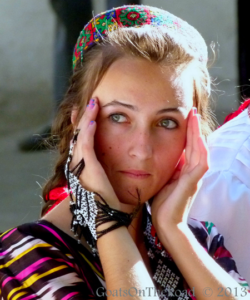

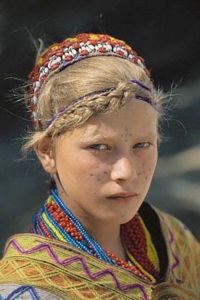
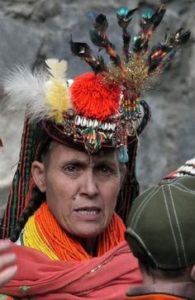


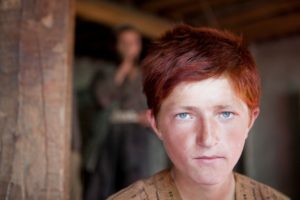


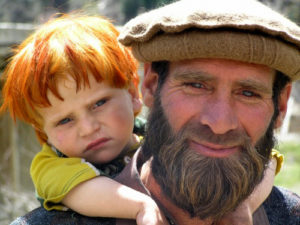


Baltic traditional costumes (Lithuanian, Latvian pictured) (Baltic dress is characteristic of most ancient European dress):
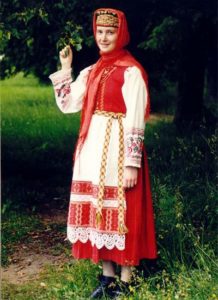
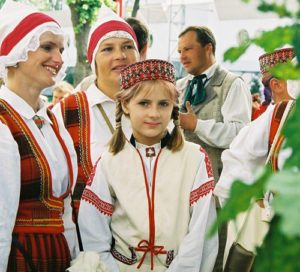
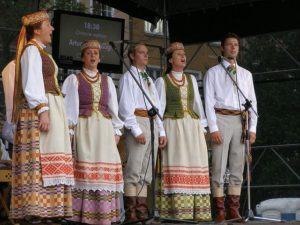
Maps showing probable point of origin for whites (the convergence of Hindu-Kush and Himalayan mountains, in and around modern-day Gilgit-Baltistan Pakistan and Jammu and Kashmir India), as well as probable point of initial settlement for ‘mongoloid’ or ‘Asian’ peoples, in and around the Altai Mountains of far eastern Kazakhstan, western Mongolia, and south-central Siberia, who probably arose from intermixture with whites with light-skin genes in Kazakhstan. The appearance of both groups in all other areas of the world would arise from invasion and/or migration in recent millennia, not climatically triggered evolution. The bisected circle demonstrates site where Asian ethnicity was born and split off. These intermixed people migrated into the Near East, parts of Eastern Europe, and throughout Siberia, likely around 4-4,500 years ago. Like in Europe and the Middle East, intermixture with blacks who resided in all surrounding undoubtedly occurred in East Asia. The ultimate origin of light-skinned peoples is probably the straight-haired Dravidian peoples of India, who have melanated skin, eyes, and hair (and thus would have to be defined as black, though their contemporary descendants have varying degrees of white admixture) but exhibit similar and same facial features and hair type.
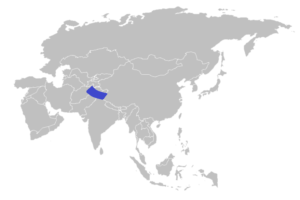
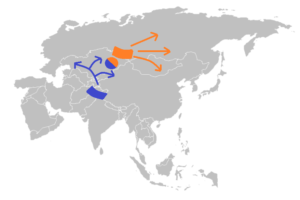
“We wuz Hindu-Kush/Himalayan animist pastoralists with highly survivable SLC24A5 mutations…?”
Buryat, Kalmyk or Oirat, and Uriankhai people, indigenous Altaic [Turkic] peoples now hailing from the Altai Mountains and Lake Baikal regions of far western Mongolia, far eastern Kazakhstan, and southern Siberia:

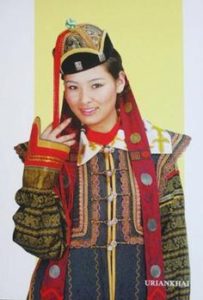
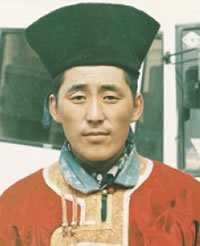
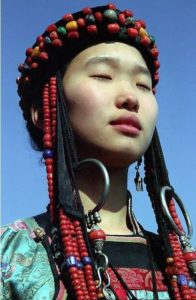
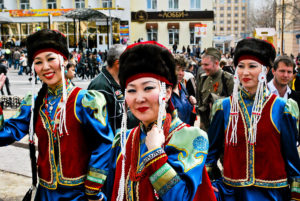

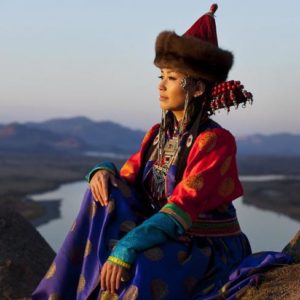

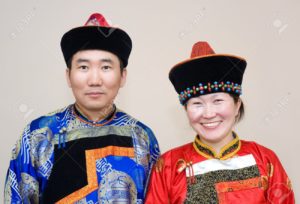
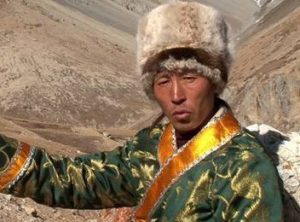
(see Appendix A above for much more on China and East Asia)
Indigenous, likely ‘bridge’ groups in eastern Kazakhstan and far western China, probably the point of origin for Turkic peoples of ‘whiter’ appearance:
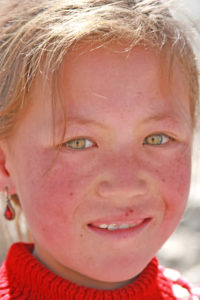





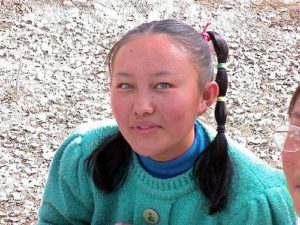
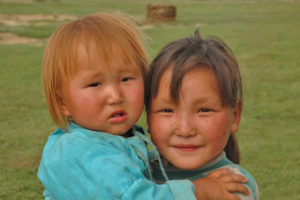
Appendix D
A socio-cultural comparison between modern-day black Americans, black Indian tribes, Pacific and African black peoples, ancient indigenous Siberian mongoloid peoples, and mongoloid indigenous Americans, which shows strong similarities between the former three, and few commonalities between them and the latter two groups.
Most pre-colonial black sub-Saharan Africans and black Pacific islanders: large-scale, sedentary urban society, large-scale permanent agricultural economy, relatively vertical social hierarchy, chiefdom with powerful leader, built mounds to avoid flood damage and for ceremonial purposes.
Mississippians (aka Mound Builders, Yuchi, Guale, Yamasee), Olmec, Mayan, Teotihuacano, Totonac, Zapotec (plus Powhatan, Timucua, Apalachee, Calusa, Carolina & Eastern Algonquian, many others): large-scale, sedentary urban society, large-scale permanent agricultural economy, relatively vertical social hierarchy, chiefdoms with powerful leaders, built mounds to avoid flood damage and built mounds and pyramids for ceremonial purposes, depicted ‘black’ features in figurines and other artifacts. ‘Mysterious disappearance’ coincided exactly with discovery of New World by Europeans and rise of chattel slavery in the Americas.
Modern black Americans: Currently live in greatest concentration in areas previously inhabited by black tribes, resemble figurines by made by pre-Columbian Americans, match description by early explorers as well as early colonial (15th to 18th century) depictions of indigenous Americans, built mounds on slave plantations to protect property from flood damage. May have adapted to slavery better than nomadic Indians would since the lifestyle approximated their existing agricultural life, though obviously it was far more brutal and unjust.
‘Native Americans’ (i.e. non-black indigenous peoples): e.g. Sioux, Apache, Navajo, Blackfoot, Inuit: Decentralized, small village-based society generally with non-permanent structures including tipis, nomadic or semi-nomadic hunter-gatherer economy sometimes with small-scale agriculture, less autocratic chief with council-based political system, relatively egalitarian social system, did not build mounds or pyramids, generally did not depict selves in archaeological artifacts.
Indigenous mongoloid Siberians: Chukchi, Koryaks, Kereks, Khanty, Nenets, etc.: Decentralized, small village-based society generally with non-permanent structures including tipis, nomadic or semi-nomadic hunter-gatherer economy sometimes with small-scale agriculture, relatively egalitarian social system less autocratic chief with council-based political system, did not build mounds or pyramids, generally did not depict selves in archaeological artifacts, physically resemble the group known as Native Americans.
Appendix E
(The following 70+ exhibits constitute a very small percentage of existing evidence known to me. As with the archaeological exhibits above, the number of potential exhibits is well into the thousands; the reason is because that’s actually what happened.)
Examples of written descriptions by explorers and early European visitors to the Americas of its native peoples, as well as sculpture and illustrations.
Giovanni da Verrazzano, letter to King Francis I on his encounter with native people at what is now Indian Beach North Carolina (part of a coastal voyage from Narragansett Bay Rhode Island to the Georgia Sea Islands), 1524:
‘Son di colore neri non molto dagli Etiopi difformi, i capelli neri e folti non molto lunghi, e’ quali legano insieme dirieto alla testa in forma di una piccola coda . . . sono bene proporzionati, di mezza statura e più presto a noi eccedano in nel petto ampli, nelle braccia disposte le gambe l’altro del corpo bene composti . . . nel viso tendano in larghezza; non però tutti, che a molti vedemo il viso profilato, gli occhi neri e grandi, la guadatura fissa . . .di ingegno acuti, e agili e grandissimi corridori.’
‘They are black in color, not unlike Ethiopians, and their hair is black and bushy, not very long, tied behind the head in a small tail. They are well proportioned, of medium stature, a little taller than we are, with broad chests, strong arms, and other parts of the body well composed. They tend to be broad in the face, but not all, for we saw many with angular faces. They have big black eyes, and an attentive and open look. They possess acute intelligence and are agile and excellent runners.’
John Smith, ‘The Generall Historie of New England, Virginia & the Summer Isles’ (1624):
“At last they brought him to Meronocomo, where was Powhatan their Emperor. . .two days after, Powhatan. . .caused Capt. Smith to be brought forth to a great house in the woods, and there upon a mat by the fire to be left alone. . .then Powhatan, more like a devill than a man, with some two hundred more as blacke as himselfe, came unto him and told him now they were friends, and presently he should go to James towne, to send him two great gunnes, and a gryndstone, for which he would give him the County of Capahowosick, and forever esteeme him as his sonne Nantaquod.”
Early colonial works from Spain and Portugal are replete with references to negroes unequivocally as natives (i.e. to describe a chief or tribe). For example, the letters of Manuel da Nóbrega describe an Indian chief known as ‘El Grillo’ as ‘un negro muy grave’ (a fearsome negro). In another letter from August 5, 1549, he describes the Bahia Brazil mission subjects (a euphemism for slaves, as they were kept forcibly) as negroes, well before African slavery allegedly began in the region (the first supposedly African slaves in Brazil were for sugar cultivation on the Northeast coast ‘once the native Tupi people [who were black] deteriorated’ [i.e. were enslaved], beginning around 1550. Conventional history holds that the southern part of the country did not have contact with ‘Africans’ until the 1600s):
‘Estão estes Negros muy espantados de nossos oficios divinos. Estão na igreja, sem lhes ninguém insinuar, mais devotos que os nossos christãos.’ (‘These Negroes are amazed by our divine ministry. They’re in church without anyone persuading them, more devoted than our own Christians.’) Another passage from August 10, 1549, also Brazil, reads: ‘Nesta terra há um grande peccado, que hé terem os homens quasi todos suas negras por mancebias.’ (‘In this land there is a great sin, that almost all the men are taking black women as common-law wives.’) In other passages the same people are referred to interchangeably as ‘indio/a’ (Indian).
(There are thousands of documented cases of indigenous Americans being described as black, moor, and negro, including many hundreds alone from historian Jack Forbes’ above-discussed book ‘Africans and Native Americans.’)
Jean Baptiste Léonard Durand (1742-1812), director of the Senegal Company – which traded mainly raw materials, not slaves, with Europe, in exchange for finished goods – authored his famous memoirs ‘A Voyage to Senegal.’ There is not a single description of slave-trading in the 13-page chapter devoted to Goree Island, where he was stationed, only two references to slaves as spoils of intra-African warfare at an inland site more than 175 miles away from Goree, and the keeping of individual household slaves on Goree and in Senegal at large. In fact, the only descriptive mentions of slave-trading in the book concern transactions in Africa, for large-scale African plantations and installations for the extraction of hardwood timber, gold, dyes, and ivory, among other resources):
“I shall add another reflection, of public utility. Blacks are a kind of men destined by nature to inhabit Africa and America; she has created them for burning regions; let us, therefore, take care not to oppose her views, or overthrow the barriers which she has established; but let us preserve their races in their natural purity, and not permit the Negroes to inhabit Europe. “
A sampling of illustrations from the John Carter Brown Library at Brown University, one of the largest repositories of images from the early colonial period.
(left to right)
A) ‘Portrait of Father Jean Baptiste Labat. Also includes a native American wearing feathered garments who holds the portrait.’ (Andre Bouys, 1742)
B) ‘Indians offer their hands to Christopher Columbus’ / L’ammiraglio dell’ Indie (The Admiral of the Indians) (Francesco Pitteri, 1751)
C) ‘Sir Walter Raleigh takes the City of St. Joseph (Trinidad) and sets five Caciques (Caribbean Indian chiefs) who were chain’d together at Liberty.’ (J. Newbery, 1760)
D) ‘The Author revenges the Death of his (Caribbean) Indian Wife by killing Two of the Three Indians that attack’d them.’ (W.R. Chetwood, 1766)
E) ‘A Man and Woman of the Island of St. John in their best Habits.’ Library description: ‘Black [or native American] man and woman wearing robes or cloaks.’ (George Roberts, 1726)
F) ‘Angel shows machines to native Americans’ (Guillaume Raynal, 1775)
G) ‘Life of Father Antonio Vieira of the Society of Jesus,’ depicting Vieira with Indians at a Brazilian mission. (Andre de Barros, 1742)
H) ‘Native Americans,’ from German work translated ‘The political Catholic passenger, passing through all the high courts, republics, rulers, and lands of the whole world.’ (Johann Joseph Pock, 1722)
I) ‘A View of the Pearl-Fishery.’ Library description: Native Americans or blacks [slaves] dive and collect pearl oysters from boats or canoes. In the background, a group of native Americans offer pearls and oysters to Europeans.’ Depicted are Guaiqueríes Indians from Margerita Island, Venezuela. (John Hamilton Moore, 1785)
J) ‘The Indian Queen.’ Museum description: ‘Portrait of Anne Bracegirdle, whole-length, in the role of Semernia, the Indian Queen . . . two black boys to left, both wearing headdresses of feathers and feathers around their waists, one holding her train’ (William Vincent 1790) (from The British Museum, London)
K) Reproduction of Cornelis Visscher’s ‘The Black Archer.’ Museum description: ‘A young Moor, half-length, holding a bow and arrow, facing right and looking back over his shoulder to left.’ Caption: ”Thus Arm’d, the Indian with his Dart & Bow / Pursues with eager Eye, his Woodland Foe.” (published by George Pulley, 1750s; also from British Museum). (original here; Dutch caption replaces Indian with Moor; see above on the interchangeability of Moor and [American] Indian)
L) ‘The Hibernian Attempt.’ Library of Congress description reads: ‘George III sitting on a throne . . . on the left, an African wearing a feathered headdress and holding a striped flag representing America flees with the other half of George’s crown, and on the right, an Irishman is sitting on and facing the rear of a bull, he is holding [an Irish] flag (described as ‘a flag’) and, with a hooked stick, is reaching for the half-crown George is wearing.’ (printed in ‘The Ramblers’ magazine, London, 1785)
A slightly but notably different description from the British Museum, which also holds a copy:
“From the ‘Rambler’s Magazine’. George III, seated on the throne, holds a sceptre; on his head is half a crown, he points to America, a negro wearing a feathered head-dress who waves a striped flag and is carrying off (left) the other half of his crown. Pitt stands complacently on the king’s right; between and behind them is Thurlow. In front of the throne (right) is a snorting bull (John Bull) ridden by an Irishman who twists its tail and goads it with the shaft of an Irish flag.” (see Appendix H below for map illustrating extent of British colonization ca. 1785)
Series of prints from the book ‘De Nieuwe en Onbekende Weereld’ (1671), the full title translating to “The New and Unknown World: or Description of America and the Southland, Containing the Origin of the Americans and South-landers, remarkable voyages thither, Quality of the Shores, Islands, Cities, Fortresses, Towns, Temples, Mountains, Sources, Rivers, Houses, the nature of Beasts, Trees, Plants and foreign Crops, Religion and Manners, Miraculous Occurrences, Old and New Wars: Adorned with Illustrations drawn from the life in America, and described by Arnoldus Montanus.” The later English edition by John Ogilsby is titled ‘America: Being the Latest, and Most Accurate Description of the New World.’ Original copies of these can be had for $60,000 and up.
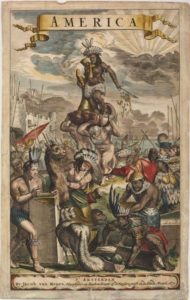
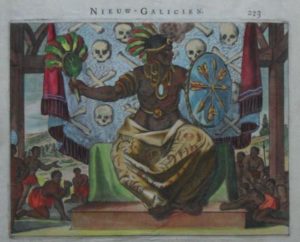
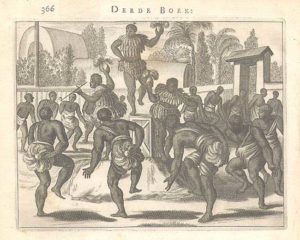
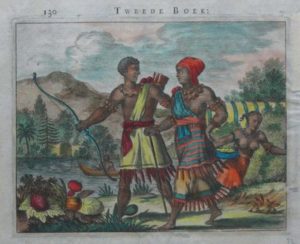
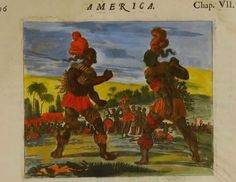
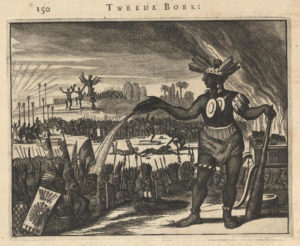
A series of paintings by Italian artist Agostino Brunias, who lived in the Caribbean (Dominica, St. Vincent, Barbados) for over 25 years, from 1770 to 1796: A: ‘Free Natives of Dominica,’ B: Caribbean Indian Women in an Interior,’ C & D: ‘Native Family of St. Vincent,’ E & F: ‘West Indian Scene’ (worn on sash of Toussaint L’Ouverture; L’Ouverture’s associate and co-founder of the Haitian Republic, Jean-Jacques Dessalines, allegedly African, named the country Haiti, the Taino word for high mountains)
G) ‘Dancing West Indian Queen’ (Johann Christoph Weigel, 1703)
H) ‘A West Indian King’ (Johann Christoph Weigel, 1703)
I) Barbados Penny (1788), part of the first coinage issued on the island. Features a native black man, apparently a cacique, or chief, in feathered headdress, with ‘I Serve’ written below. On the reverse side is the pineapple, which had been introduced to the Caribbean by South American tribes long before Columbus, and was cultivated there by the native peoples.
A) ‘Male and female savages of Tierra del Fuego,’ from ‘Universal System of Natural History’ (1794)
B) Depiction of ‘Fuegian[s], a Yapoo Takeenica.’ From ‘Narrative of the surveying voyages of H.M.S. Adventure and Beagle’ Vol 2. (Philip Parker King, 1839)
C) ‘Yahua Indians, or Bush Negroes [from Northeastern Peru],’ 1890 (Robert Brown, Cassell & Co.)
A) ‘Deputation of Indians from the Chippewa Tribes to the President of Upper Canada, Sir Frederic Robinson’ (1815)
B) ‘Deputation of Indians from the Mississippi Tribes to the Governor General of British North America, Sir George Prevost’ (1814)
C) ‘New Voyages in North America,’ by Louis Armand, baron de Lahontan (1666‒1716), a French military officer who fought against Iroquois tribes in modern-day Ontario and Michigan, as well as in other campaigns in Illinois and Newfoundland
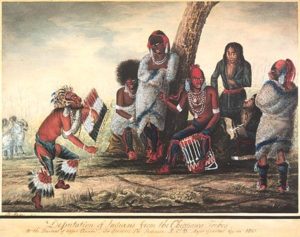
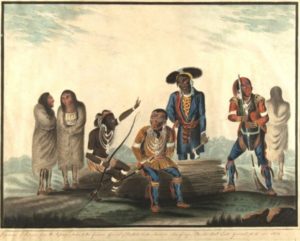
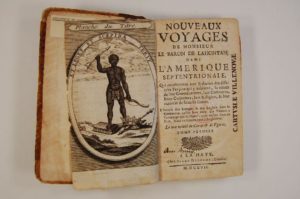
A) ‘June 26th, 1579 ceremony of Sir Francis Drake being crowned with headdress by California Indians’ (J. Meurs, 1671)
B) ‘Indians of the Bay Area of San Francisco, California’ (Louis Choris, 1816)
C) ‘Indians Hunting in Bay of San Francisco, California’ (Jean Augustin Franquelin, 1822)
D) ‘Ohlone people performing a ceremonial dance at Mission San Jose’ (Jose Cardero, 1816)
E) ‘Ohlone Indian’ (Luis Choris, 1822)
F) Modern Vanuatan indigenous people (Banks Islands)
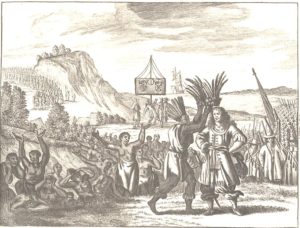
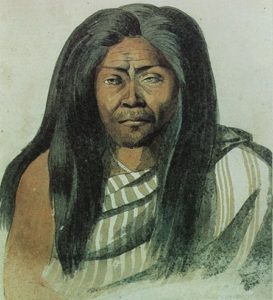
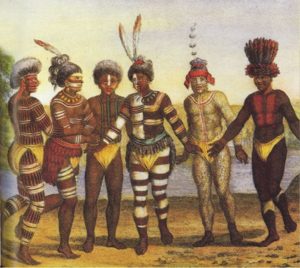
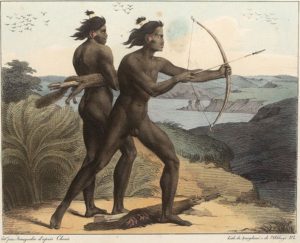
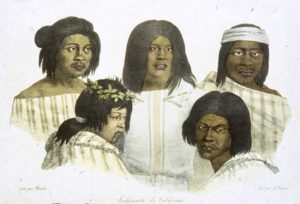
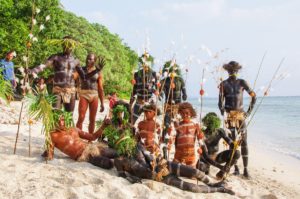
A) Mid-18th century Virginia tobacco ad
B) Cigar store Indian, 1790
C) 18th century Virginia tobacco ad
D) Cigar store Indian, 1870, description reads ‘it does not depict the typical Plains Indian, but rather an Indian of the Powhatan and Pocahantas period’
E) ‘Negro,’ painting of native Peruvian by Baltazar Compañón, Bishop of Trujillo Peru.
F) Figure from Museum De Moriaan (Morian [meaning Moors’] Museum), Gouda Netherlands (its original name, later changed to ‘National Pharmacy Museum,’ now merged with other collections as Gouda Museum, the Morian portion of which primarily features pipes produced in the city to smoke newly introduced American tobacco.
G) Cigar store Indian by William Rush of Philadelphia (ca. 1790), sold for $66,000 at auction (see rear view)
H) Cigar store Indian, provenance unknown (see more)
I) ‘Tinker figurine of wood representing a standing Indian, possibly Powhatan’ (ca. 1750)
J) British Museum description: ‘Tobacco paper; a native American, holding a tankard and long pipe, leaning against sheaves in front of a barrel, a slave gathering sheaves (presumably of tobacco leaves)’ (mid-18th century)
K) ‘Native Temple of Virginia Indians’ (John Ogilby, 1671)
L) Bromley’s tobacco label (ca. 1760)
M) Paper mache cigar store Indian (ca. 1900). The description reads ‘ They appeared in front of tobacco shops, usually over doorways, and were called Black Boys or Virginians . . . Many of these figures, whether they be crafted in wood or later composite, were destroyed due to their now un-politically correct nature and today they prove scarce.’
N) ‘Tobacco Plantation’ (Richard Holmes Laurie, 1823)
O) Title page from The Federalist (1788) i.e. the Federalist Papers (Arents Collection, NY Public Library)
(Note: It was stated above that the seldom viewed images and descriptions in Appendix E are representative of the wider body of same from early colonial history and are not anomalies. Regarding tobacco in particular, there are no images of non-black Indians associated with the tobacco industry in Virginia and elsewhere prior to the late 19th century: most blacks are depicted as natives, i.e. are in native American, non-African dress, and all natives depicted are black.)

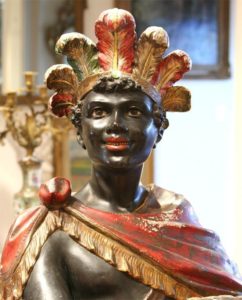
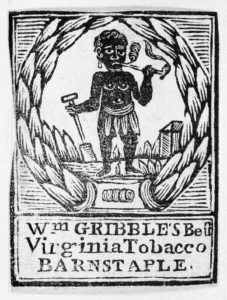
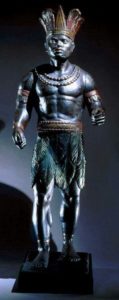
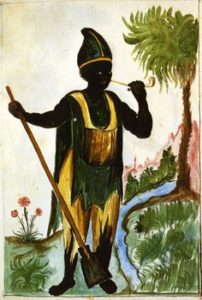
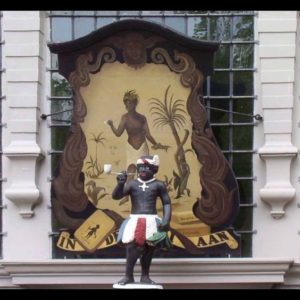
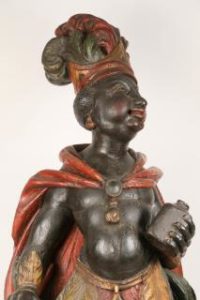
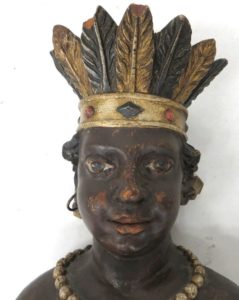

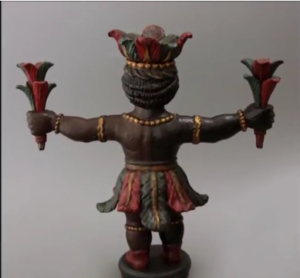
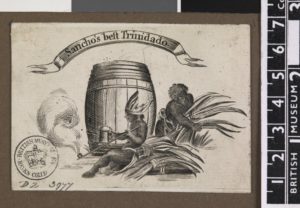
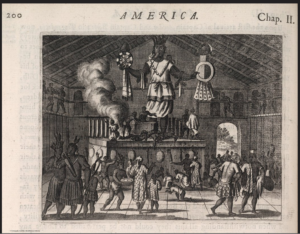
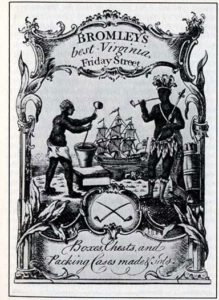
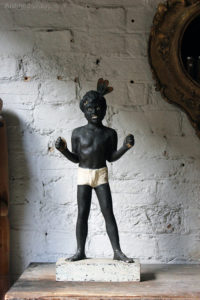
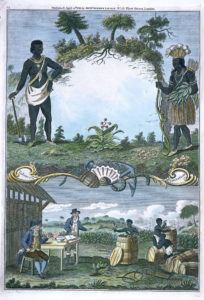
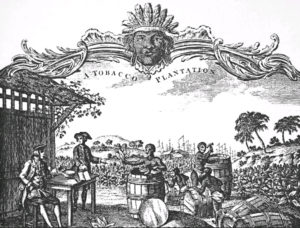
A series of ‘Four Continents’ aka ‘Erdteilallegorien’ (Allegories) artwork from 17th and 18th century churches of the Holy Roman Empire, of which there are hundreds of examples throughout Central Europe and Italy. In all instances either America is depicted as a black person, or all four continents are white:
A) Racial poster showing ‘Australoid: American.’ Today, Australoid is generally defined as black people in Asia and Oceania. The Southeast Asiatic and Oceanic black people in Appendix A would all be considered of Australoid race
B) ‘Four Quarters of the Globe’ Chelsea porcelain figurines, 1758. Sold at auction by Christie’s for £122,000 (203,000 USD at the time). The description reads, ‘America as a blackamoor, wearing a feathered headdress . . . quiver suspended from his right shoulder on a turquoise strap, standing before a brown and black mottled crocodile curled about a tree-stump, two arrows between his feet . . . Africa as a blackamoor in elephant headdress’
C) ‘Allegory of America’ engraving (Giovanni Volpato, 1780s)
D) ‘The Church Receives Subjects from Asia, Africa, and America’ (Wolfgang Schwendimann, 1726). John Carter Brown Library states ‘A woman . . . receives Africans and/or native Americans wearing feathered headdresses and garments.’
E, F, G) ‘An Emblem of America’ (1798) (image G with bobcat sash)
H) Lefèvre-Utile ‘Amerique’ biscuit box, 1846
I) Close-up of fresco, representing Europe and America; from Umratshausen church, Rosenheim Germany (1749). Description reads, ‘the four continents are gathered in worship.’
J) Personification of America, Holy Ghost Hospital Church (Heilig-Geist-Spitalkirche), Füssen Germany
K) Frontispiece from [Sir Walter] ‘Raleigh’s History of England’ (drawing by S. Wale, 1746). Description from the British Museum reads: “Four male figures representing the continents of Asia, to left, Africa, India (see below for the geo-historical context of ‘India’) and America to right laying gifts at the feet of Britannia who sits enthroned.”
L) Mascaron on exterior of the National Museum of the American Indian, New York City
M) Mascaron ‘Evocation de l’Amerique’ (Evocation of America), Allée Brancas, Nantes France
N) ‘Timucuan Village,’ painting on ceiling of US Capitol building (compare double chest plate with Moor carvings below, and with Montanus illustration above)
O, Q, R, S) Mascarons from Strasbourg France; ‘Amerique’ from ‘Les quatre parties del monde’
T) 1909 Thanksgiving postcard, M.W. Taggart Co. ; 1910 edition, feathers removed
U) 1909 Thanksgiving postcard, ‘B65’ design 930
V) B) ‘Easy Negro’ plaque, with Florida Indian headdress (1853): ‘Me’s de boy of all de nation, Me no like to work in de Plantation. Me radder sit wid friend and have a joke, And have a pipe and have a smoke.‘
W, X) Tobacco ads, early 20th and 19th centuries
Y) ‘The French Treaty Reviewed,’ E. Macklew (1787); reads ‘They have no right to send us to Africa.’
Z) ‘Ten Little Niggers’ figurine, later Ten Little Indians
AA) ‘Outing’ magazine, January 1897 issue
AB) Testimony of South Carolina cotton planter Harry Hammond to Congress, 1901, describing Yamasee Indians, formerly Guale (see Gullah), one of the larger Mississippian or Mound Builder tribes who were the predominant group in the Southeast and Midwest at the time of European contact several centuries prior
AC) “The gruesome attack of the Indians on the English, in “Carolina, West Indies,” on 19 April 1715, and some days after, in which action the barbarians tortured many men” (Yamasee War of South Carolina) (Peter Schenk, 1915)
AD)
AE) Negro Law of South Carolina (1848), declaring that ‘the race of slave Indians. . .is extinct’ since the last act was passed in 1740; in other words, black natives had by this time been stripped of Indian identity and become labeled as genericized negroes
Well known statue of Balthasar Permoser (1651-1732) ‘Moor with Emerald Cluster’ (1724). The description reads ‘ . . . the man in dark brown lacquered pearwood [presenting] the Colombian Emerald level, is not a resident of Africa but an Indian. The body tattoos, as well as the precious necklace and bracelets, jewelry chest, the feathered crown, the loincloth and the footwear have represented him as a a Native of Florida.’ Included are other ‘moor’ sculptures by Permoser. These are reflective of countless other depictions of American natives by a wide variety of artists from the 15th to 18th centuries. The straight- and braided-haired, relatively long-faced, lighter-skinned visage we associate with Indians today was foreign to this period, and non-black depictions seldom appear until the mid-to-late 19th century, and never before the 18th century, more than 200 years after European contact.
Santería (‘Afro-Cuban’ religion) god Chango Macho aka Shango, ‘African’ spirit of fire, thunder, and lightning (compare dress to Native Floridian above, to Timucuan Village carving from US Capitol dome (also a Floridian), and to numerous illustrations above. With vast evidence establishing pre-Columbian contact with and permanent migration from West Africans, voodoo and Santería appear to be products of African cultural transmission or influence in the Americas, or vice versa; the dress remains distinctly American, suggesting ultimate American origins:
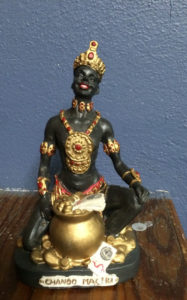
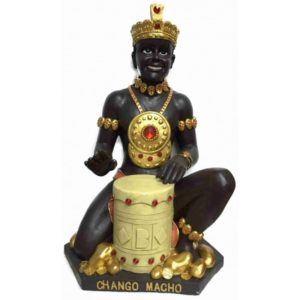
Appendix F
(below is a small sampling that will be added as research continues and time allows)
Examples of little-displayed propaganda, both contemporary and historical, intended to separate black Americans from their indigenous heritage, including cases of ‘revelation of the method,’ a common technique where the perpetrators of a crime or deception reveal the truth of their completed machinations to the victim, or announce them ahead of time, often through the entertainment industry, in order to both display their power and psychologically paralyze the victim. In some cases an attempt by an insider to convey a message to the public without violating his agreements might be confused for this technique. Well known propaganda ploys like Roots and the Back to Africa movement have not been included since most are familiar with their nature.
Below are minstrel songs from the 19th and early 20th centuries. The main recurring theme that can be observed, aside from the obvious – the general ridicule of black Americans – is the parodic attack on black claims to aboriginal identity, the reasons for which would be obvious for the reader of this post. A number of films also took aim at this. Another theme is the ridicule or ‘scandalization’ of relationships between black men and ‘Native American’ women (i.e. native women who were either of less-black phenotype and did not receive negro classification, were born of free women of color and were thus free themselves, or were of less-black, more-‘mongoloid’ Indian tribes of the Plains and Southwest). A relationship between a black man and a non- or less-black native women would reverse the long-running project of Africanization of native black Americans and the dispossession of blacks of eastern US lands. Children of such unions might appear blacker than their mothers (a trend amplified by the genetic dominance of melanated skin, generally have) but be given full rights as children of free mothers, when the goal of the establishment was a maximally light-skinned economically and politically enfranchised class, and maximally dark, small, and eventually extinct disenfranchised class. This reversal of ‘progress’ combined with the threat of male reconstitution of aboriginal identity was unacceptable. While black native/non-black-native relationships were already a felony, propaganda increased social pressure against them.
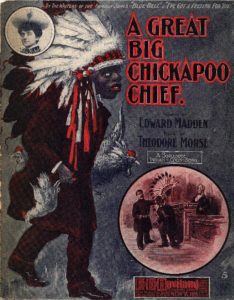
‘A Great Big Chickapoo Chief: A Burlesque Indian-Coon Song’ (1904)
Verse: In Montana wild and wooly lived a foxy coon
He dressed up just like a Indian on a night in June
When the silv’ry moon was peeping, silently this coon was creeping
to a chicken coop nearby. Suddenly he heard a cry
Down the farmers came a sweeping, soon they had the chieftain weeping
Landed him in jail, and there they heard him wail:
Chorus: I ain’t no chicken thief, I’m a great big heap Chickapoo chief
In me you see the king of my race- my Indian name is ‘Rain-in-the-Face’
When I found that bird he was sure enough dead
I was going to pluck the feathers just to wear them on my head
Don’t be absurd, can’t you take my word? I’m a great big Chickapoo chief.
Verse: To the court next morn they bro’t him, famous Indian chief
Told the Judge just how they caught him, common chicken thief
Said the Judge, ‘make your story shorter, bring a sponge and pail of water
Wash the mighty chieftain’s face. Lord to think of such disgrace’
There he stood the colored preacher, most distinct in every feature
Judge gave him ten years, as he yelled out thro’ his tears: (Chorus)
Songs like ‘Every Race Has a Flag but the Coon,’ created a vacuum into which a false African identity could be fabricated and clung to by blacks desperate for a ‘flag’ of their own. It was held up by Marcus Garvey and his Back to Africa movement as a call to action. The evidence above shows that much of the world had already symbologized black Americans’ claim to America (and in some examples its flag), a right that was gradually stripped by the white colonial and American establishments.
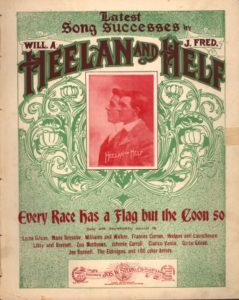
The leader of the Blackville Club arose last Labor night
And said, “When we were on parade today
I really felt so much ashamed, I wished I could turn white
‘Cause all the white folks march’d with banners gay
Just at de stand de German band
They waved their flag and played ‘De Wacht am Rhine’
The Scotch Brigade each man arrayed
In new plaid dresses marched to ‘Auld Lang Syne’
Even Spaniards and Swedes, folks of all kinds and creeds
Had their banner except de coon alone
Ev’ry nation can brag ‘bout some kind of a flag
Why can’t we get an emblem of our own?”
For Ireland has her Harp and Shamrock
England floats her Lion bold
Even China waves a Dragon
Germany an Eagle gold
Bonny Scotland loves a Thistle
Turkey has her Crescent Moon
And what won’t Yankees do for their Red, White and Blue
Every race has a flag but the coon
He says, “Now I’ll suggest a flag that ought to win a prize
Just take a flannel shirt and paint it red
They draw a chicken on it with two poker dice for eyes
An’ have it wavin’ razors ‘round its head
To make it quaint, you’ve got to paint
A possum with a pork chop in his teeth
To give it tone, a big hambone
You sketch upon a banjo underneath
And be sure not to skip just a policy slip
Have it marked 4-11-44
Then them Irish and Dutch, they can’t guy us so much
We should have had this emblem long before
Re: ‘revelation of the method,’ a clip from the film ‘Ghost Dog: The Way of the Samurai:’
In the same vein, an episode of Sanford and Sons ‘Lamont Goes African,’ (3:35-7:55, with key line around 7:20; note that what is today St. Louis was the site of Cahokia, the ‘capital’ of the black Mound Builder or Mississippian civilization and the largest archaeological site in North America. Many scholars have estimated a population of over 100,000 including surrounding residential areas. See also 11:52-12:05. In Memphis is Chucalissa, a 160-acre archaeological site of another Mississsippian city. Nearby is the Memphis neighborhood Orange Mound, which has been described as the first black neighborhood built by black people, and was ‘the largest concentration of black Americans after Harlem’ in the 1970s, and today is 95% black. Orange Mound was originally the site of a plantation, doubtless another case of a white-co-opted agricultural installation, in this case an outlying part of the Chucalissa city complex; Mississippian cities were ringed broadly by farms; see also 12:33-12:53):
Appendix G
The ‘appeal to authority’ section. While I like to focus almost exclusively on primary source evidence that, if real, cannot be misinterpreted or intentionally misrepresented by the analyst, the following will demonstrate that the conclusions reached here have also been held by those at the highest levels of (establishment) academia, included primarily to reassure those who defer to ‘the experts’ regardless of the weight of primary sources.
Constantine Rafinesque, ‘The Primitive Black Nations of America’ (1832); Rafinesque was a famous French-Turkish polymath who spent most of his life in the US studying Ancient America:
“To many, this fact of old black nations of America will be new, yet it is an important feature of American history. I will here merely enumerate the black tribes of which I have found evident remains in North and South America . . . [describes twelve post-Columbian groups, including in Louisiana, Florida, and North Carolina] . . . The origins and annals of the black nations, and of the American nations, were two subjects quite obscure and neglected, or the least known, of the history of mankind. Nobody has undertaken, as yet, the history of the Negro nations: a labor so difficult and luckless as to be despised.”
Jean-François-Albert du Pouget, Marquis de Nadaillac, French paleontologist and anthropologist, from ‘Pre-Historic America’ (1885):
“The physical characteristics of the American aborigines are generally admitted to point toward affinities with people belonging to the Pacific region rather than with those bordering the opposite coasts of the Atlantic basin. The nomads and fishermen of Siberia are more like hyperboreans [those living in the far north of the Americas, relative to the single landmass, e.g. the northern Plains, Subarctic, and Arctic peoples, who were largely of mongoloid ethnicity] than any existing European people, and certain features [also found in the Americas] recall the Melanesian inhabitants of Pacific islands rather than the African negro races.” (see Appendix A for photos of Melanesians in Fiji, Vanuatu, New Caledonia, and Papua New Guinea) [note: if the author is asserting that the majority of non-far-northern American aborigines were of mongoloid phenotype, more comparable to Eastern Siberian and Kamchatkan indigenes (e.g. Chukchi, Koryaks) than Europeans, why would he then choose Melanesians (from Greek mélas ‘black’ and nesos ‘islands,’ a term coined in 1832 once the displacement and absorption of black aboriginal people in Micronesia and Polynesia by mainland-Asian mongoloid peoples neared its completion, and that distinction was needed), which at that time would be the ‘blackest’ of all middle- and lower-latitude Pacific peoples, to illustrate his point with respect to non-northerners, rather than ‘second wave’ mongoloid Polynesians who had occupied many Pacific islands by then, or the second-wave, Han-derived peoples of Indonesia and Southeast Asia? His choice makes it abundantly clear that the American aborigines generally being black is a foregone conclusion, and the author is comparing them to Pacific aboriginal blacks and African blacks, black Americans generally bearing a closer resemblance to [non-mongoloid-admixed] Pacific blacks, particularly in terms of hair type and facial features; see also the above racial poster in Appendix E.]
Carlos Cuervo Marquez, ethnologist, botanist, military general, historian; from ‘Estudios Arquelogicos Y Etnograficos, Vol I’ (1920):
“The Negro type is seen in the most ancient Mexican sculpture. The Negroes figure frequently in the most remote traditions of some American pueblos . . . it is to this race doubtlessly belongs the most ancient skeletons, distinct from the red American race, which have been found in various places from Bolivia to Mexico . . . It is likely that, we repeat, America was a negro continent.”
Vicente Riva Palacios, Mexican politician, journalist, and historian; from ‘Mexico, a traves de los Siglos’ Volume 1 (1887):
“It is indisputable that in very ancient times, the negroes occupied Mexico. They brought their own religious cults and ideals.”
Alexander von Wuthenau, German ethnologist and art historian, from ‘Unexpected Faces in Ancient America’ (1975):
“The startling fact is that in all parts of Mexico, archaeological pieces representing negro or negroid people have been found, especially in archaic or pre-Classic sites.”
Nicolás León, physician and archaeologist, from ‘Compendio de Historia General de México’ (1901):
“The almost total extinction of the negroes during the time of the Spanish conquest and the memories of them in the most ancient traditions lead us to believe that the negroes were the first inhabitants of Mexico.”
Barnard Shipp, from ‘The History of Hernando de Soto and Florida; or, Record of the events of fifty-six years, from 1512-1568’ (1881)
“During the three days that the Spaniards recruited themselves, they saw on the last day about noon, coming from a place full of reeds, seven boats which advanced towards them. There was, in the first, a very large and black Indian of an aspect very different from those who inhabit the interior of the country. The barbarians of the coast are black in this manner, because the sun is there warmer than elsewhere, and because they are continually in the water, which is salt. . .the Indian placed himself on the prow of the vessel, and in a voice full of haughtiness told the Spaniards, according to what the interpreter asserted, that they were robbers; what did they seek upon the coast; and that they should leave it in haste, by one of the mouths of the Chucagua [Mississippi River], otherwise he would burn their brigantines and put them all to a miserable death. This barbarian, without waiting for an answer, returned to whence he had come.”
(see Appendix B for an explanation for the disproportionate focus on Mexico with regards to black American archaeology and thus literature and commentary on black pre-Columbian groups)
Appendix H
Map demonstrating the highly limited extent of colonial development by the turn of the 19th century, a time when most people might envision the eastern half of the nation more or less established. While areas far beyond had been penetrated by soldiers and traders and many natives had been conquered and enslaved, these places were still essentially beyond the frontier, and would provide much of what would become the black American population, as rapid westward expansion occurred in the subsequent decades. Of particular note are areas that would become Georgia, Tennessee, Alabama, and Mississippi, which would supply the bulk of the new, later-alleged-to-be-African slave plantation labor in the coming decades, as planters, who in many cases simply took over existing indigenous non-slave-driven farming complexes and the road networks between them, built the Deep South cotton economy. Note: red refers only to British colonization. Spanish missions in the Southeastern US outside of Florida (e.g. Santa Elena, Fort San Juan) are not marked, as their activities in the region began to give way to the British by this time.
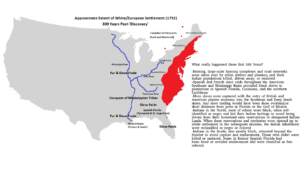
A map demonstrating the uneven pattern of federal tribal recognition. Yellow indicates federal recognition only, orange state and federal (state recognition is typically only sought when federal cannot be), red state recognition only, and grey no recognition, with the number being that of federally recognized tribes. Note that there are ZERO recognized state- or federally recognized tribes in most states of the Mississippi, Ohio, and Tennessee River valleys, highly fertile and climatically agreeable areas of the nation that were not settled by colonists until well into the 19th century and were the homeland of the black, agriculturalist Mississippian or Mound Builder civilization (who were conquered and enslaved by early colonial powers), nor are there any in Hawaii or Caribbean and other Pacific territories, which were home to black aboriginal peoples. (An objection would be that many of the tribes in those river valleys had already been forcibly relocated to Oklahoma. That’s true, but the handful of tribes from each of the states in question, typically numbering in the hundreds or low thousands today in Oklahoma, could never have accounted for more than a tiny fraction of the entire Indian population of the region – which they were as ethnic minorities among much larger black tribes, most of which can be identified but are classed as ‘extinct as tribe.’ These peoples are variously minority mongoloid groups of the East, or people with small amounts of aboriginal heritage who have been ‘bleached’ or ethnically intermixed beyond recognition, like most self-identified Indians who currently live in the East.) Note also that the Southeast and Mid-Atlantic regions, where most indigenous peoples were black, demonstrate a struggle for federal recognition. The harshest and least hospitable areas where nomadic mongoloid tribes lived have far higher incidence of recognition, while the most productive and forgiving regions capable of supporting the largest populations (which they did: the ancestors of the 47 million black Americans, not the 5 million non-black natives) yield lowest recognition. Only 48 of 566 federally recognized tribes (8.4%) are from the Eastern US (i.e. east of the Mississippi), and only 10 of 566 (1.7%) are in the Southeast and Mid-Atlantic states, the heartland of black tribes, while 485 of 566 (85.7%) are from Alaska, the Plains, and the Southwest, the heartland of (largely) non-black, mongoloid tribes. This is only a paradox if you are unaware of the history laid out in this post. The second map shows the primary territories of major black aboriginal groups in what is today the US at the time of European contact, or the closest approximation in terms of modern-day US states, with the numbers again indicating the number of federally recognized tribes in those states, generally zero or one. Black peoples were by no means limited to these areas (and lived across the entire contiguous US, in what is every state today), but were the large majority there, especially in the Southeast and mid-Atlantic states, and coastal New England. The third is a map showing distribution of the black American population in 1850, meant to overlay with the second.
An ‘infographic’ summarizing black American history before and since European contact:
Wider-scale versions of the above showing all of the Americas:
A) Simplistic illustration showing predominantly black and mongoloid areas, not accounting for co-existence and intermixture of black and mongoloid groups in many regions (blue indicates black peoples, orange is mongoloid). (Reference is made to changes in the archaeological record substantiating the maps. Because the mainstream history narrative would make them fruitless, no digs in orange areas north of the Rio Grande (Great Plains, Subarctic) have occurred. It’s possible mongoloid peoples were in these areas well prior to 250 A.D., but there is no archaeological evidence to support this. In Mesoamerica (Mexico, Central America) though, all extant archaeological objects depict unequivocally black peoples until the late Preclassic and early Classic periods (0 A.D. to 250 A.D.; dating methods are imprecise), then from that time until about 750 A.D. pieces from that region become increasingly mongoloid in appearance, clearly suggesting absorption by mongoloid peoples from the north which eventually terminated in a mixed-race people, with migration ceasing – due to a stability in phenotypes depicted – by 750 A.D. to 1000 A.D. Given that there were no sea or land barriers, it seems unlikely that mongoloid people would have obstained from contact with southern regions for much time before they emerged in Mesoamerica between 0 A.D. to 250 A.D. Descriptions of peoples in western North America prior to Columbus suggest that black peoples came from both a South Pacific sea route and a North Pacific route (as well as from West Africa by 1,000 B.C.), and were already in all areas of the continents. Descriptions from far northern North America (of dark, heavily bearded men with thick hair) suggest that it was Ainu and Jomon-related black peoples who were present, and not Siberian mongoloid peoples. Considering this, the dozens of pre-Clovis sites, the absence of mongoloid-depicting pieces (i.e. Siberians, not East Asians) anywhere in the Americas before 0 A.D., and the global ethnic shift that occurred between roughly 400 B.C. and 400 A.D. (in West, South, and Southeast Asia, Polynesia and New Zealand, the Levant and North Africa, etc.), it seems most likely that no ice-bridge migration of mongoloid peoples occurred, and Ainu or Jomon-related peoples from modern-day Japan, Sakhalin, and Kamchatka crossed by sea thousands of years ago by way of the Aleutian islands, with a second wave of nomadic Siberians arriving by sea much more recently. After a short period of settlement in the Arctic and Subarctic, those who did not remain took the path of least resistance southwards, mostly avoiding sedentary agriculturalist blacks on the west coast and eastern half of the modern-day US and Canada in favor of sparsely populated areas in the Subarctic, Plains, and Southwest – which were better suited for nomadism and presented less competition for resources – then migrating into Mexico and Central America, with some groups moving on to the Amazon and along the Andes into Patagonia. As stated above, these peoples were absorbed into the black Teotihuacano (pre-Aztec), early Mayan, and early Inca civilizations (who were already highly advanced and perhaps had already civilizationally peaked) they encountered along the way, leading to the ‘extinction’ of ‘pure’ blacks in Mesoamerica, though these people remained in areas to the east and west of this ‘mongoloid alley.’)
B) Another version showing geo-historical stages of European contact
A series of maps demonstrating ethnic composition over [estimated] time. Background color indicates predominant or only ethnicity. Straight lines indicate co-existence, dots indicate admixture and/or racial isolates. Blue = black, red = white, orange = mongoloid aka Asian, purple = white/black mixed race, yellow = mongoloid/white mixed race (could also be understood as ‘original mongoloid,’ as distinguished from Han and their predecessors; American mongoloid people thus might have been marked in yellow instead of orange), maroon = black/mongoloid mixed race. (In Latin America, maroon should be understood as a mix of white, mongoloid, and black, with some instances of relative ‘purity,’ at least phenotypically). Note late arrival of mongoloid and white peoples to their current countries of residence, and the difference between maps G and H. The potential arrival of whites to Greece, Anatolia, the Levant and North Africa around 1,200 B.C. may coincide with the Bronze Age Collapse and ‘invader hypothesis’ for the Carpatho-Danubian and Southern European origin of the Sea Peoples. An example of an event in the collapse would be the destruction of Tel Hazor, where invaders disfigured ancient Egyptian and Canaanite statues by smashing the noses. Map B demonstrates migration of tiny light-skinned contingent from northern India or Pakistan (in the vicinity of Jammu and Kashmir region, part of the Indus River Valley) to Central Asian steppes. There is a rather compelling case that these people largely descended from aboriginal Dravidians (a black, Australoid people who predominantly had straight hair) that were afflicted with type 2 albinism (i.e. a less severe condition involving hypopigmentation rather than non-pigmentation), or possibly some form of type 3 (a still milder variant that is currently acknowledged mainly in people of color) or yet unrecognized type and regained skin pigment and thus enhanced their survivability through evolutionary adaptation, or perhaps more likely, just by intermixing with known but now ‘extinct’ (i.e., from white admixture) aboriginal black Europeans after the former arrived to wooded and cloudier Europe from the less forgiving Central Asian landscapes to which they first migrated, though some remained and have thrived in Dardistan to this day, if the compelling Dardic-origin theory outlined above be true. I haven’t done enough study to fully endorse this ‘adapted albino’ thesis yet: while it is theoretically consistent (1, 2, 3, 4, 5, 6, 7, 8, 9) where other explanations decreasingly are (key points on p. 8-9) (1, 2, 3, 4, 5), no historical proof (e.g histories, memoirs, folklore, cultural memories, etc.) for an ultimate black Dravidian origin exists to my knowledge (though given who is controlling academia and the flow of almost all information, this may not mean so much), and it would have apparently been so long ago that none may ever emerge, one way or the other. There are also factors not satisfied by the Dravidian hypothesis, such as the superior weight-lifting strength of Caucasian males, evidenced by domination of all strongman and powerlifting sports (97-99% of elite competitors, a comparable dominance to blacks in elite sprinting) which may be linked to Neanderthals, Cro-Magnons, and/or an unknown group. Personally, I don’t accept the Dravidian albino hypothesis and believe it is fundamentally wrong, though – in terms of white origins in the Indian subcontinent or thereabouts rather than in Caucasia – it may have some proximity to the truth. . Regardless of the explanation for the genesis of white people, the evidence suggests that they ‘came out of nowhere’ or from a very small area in a world that was predominantly settled and populated by black peoples.
Who would become mongoloid peoples are supposed to have split off from this group and migrated east sometime between 3,000 and 2,000 B.C., perhaps first mixing with aboriginal blacks of Khoisan-like phenotype, and later with a wider phenotypical variety of groups in Southeast Asia. These maps propose that mongoloid indigenous peoples did not arrive to the Americas until after 3,000 B.C., and that it was Ainu-related seafaring groups who took the Northern Pacific-rim route first (though South Pacific or aboriginal American groups had already spread throughout both continents far earlier). While it’s possible they arrived earlier than 4-5,000 years ago, no archaeological artifacts depict them, no historical record (including oral records that deal with at least somewhat provably real events) speaks of them, and no skeletal remains document their presence before that time, unlike black peoples.
A) 5,000 B.C. (all peoples are ‘black,’ i.e. they would fall under today’s broadest definition: they would have 1) widely varying tones of melanated or relatively dark skin, from, say, light tan to very dark brown, 2) widely varying facial features, including facial features highly similar to those of contemporary whites – which can today be observed in southern India and East Africa – as well as to those of modern-day ‘Asians’ or ‘mongoloid’ people, and of course, as demonstrated, similar to or same as those of people who today fall under the narrower definitions of black, who were apparently the majority; and 3) would generally have kinky and wavy hair, though a minority globally would have relatively straight hair; this would include people comparable in appearance to modern-era Dravidian people, a higher percentage of whom had straight hair than did other black peoples. In other words, there is no evidence of pale-skinned peoples prior to this point, while evidence of ‘black’ phenotypes abound, two facts that run strongly counter to ‘mainstream’ [or establishment] evolutionary-anthropological theories and timelines.)
B) 3,000 B.C. C) 2,000 B.C., D) 1,000 B.C., E) 0 AD, F) 500 AD, G) 1500 AD, H) 1900 AD
Compare to the prevailing model from anthropologist Carleton S. Coon, where blue represents mongoloid race, and green Caucasian (this model assumes no change in ethnicity for at least tens of thousands of years):
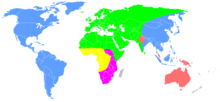
Another perspective, displaying an estimated chronology of contact, absorption, and displacement on a single map:
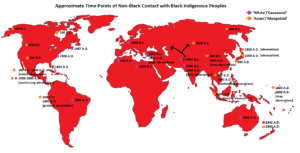
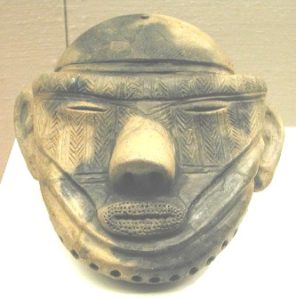
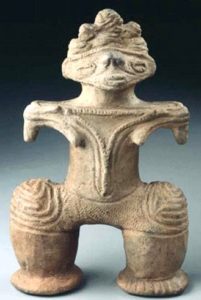
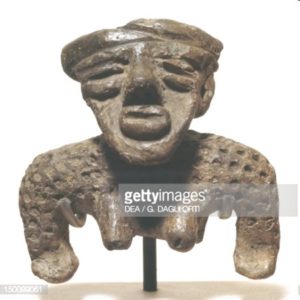
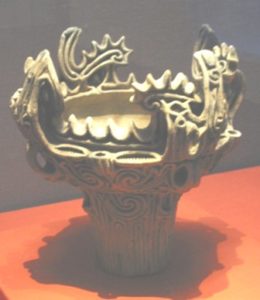
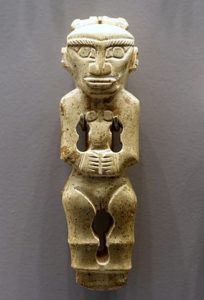

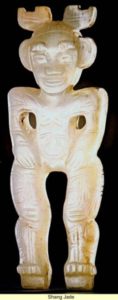
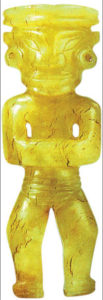
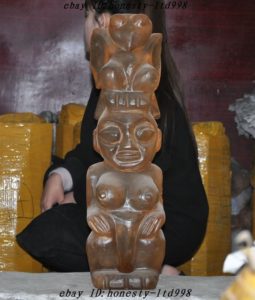
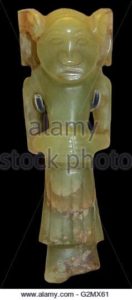
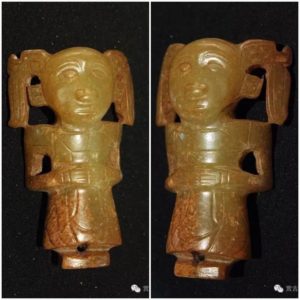
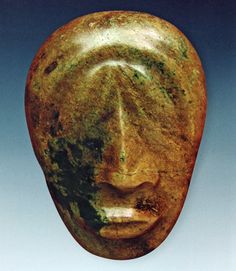
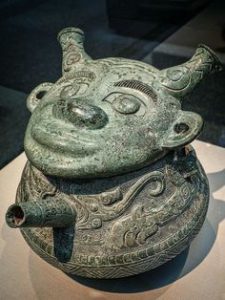
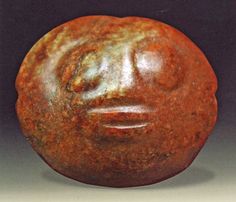
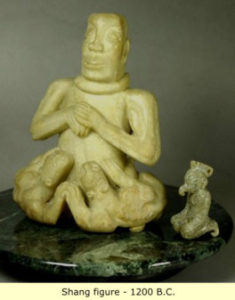
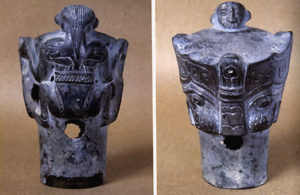
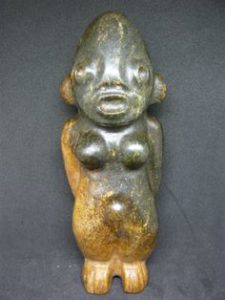
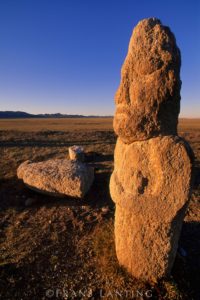
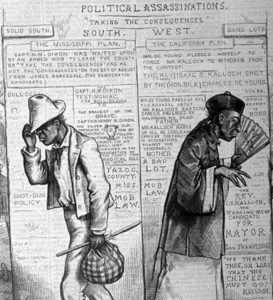
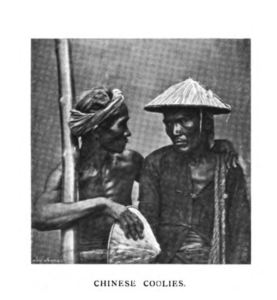
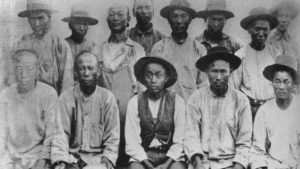
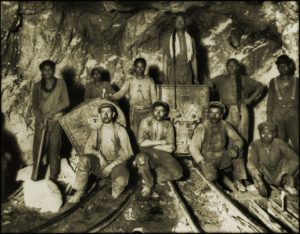
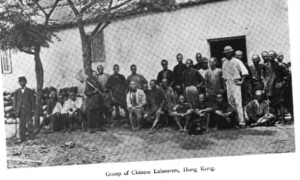
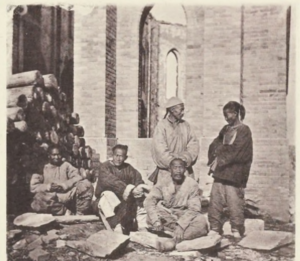
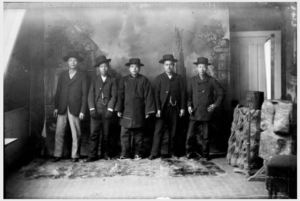
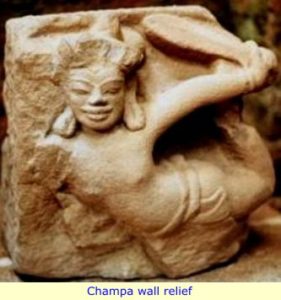
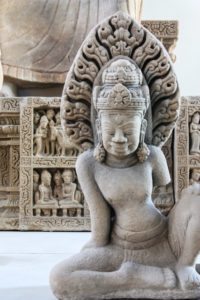
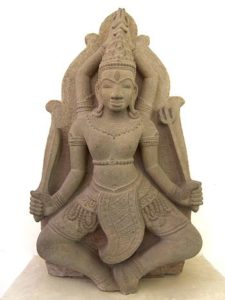
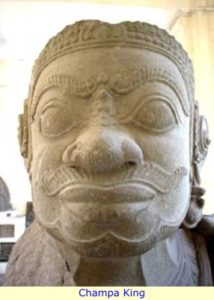
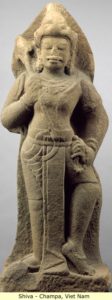
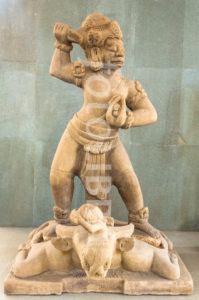
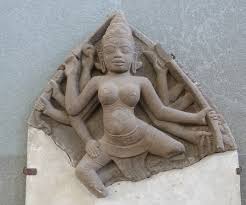
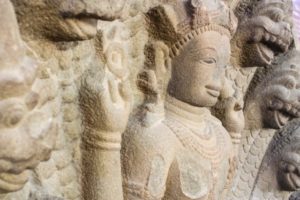
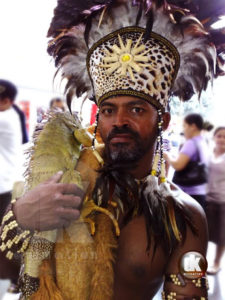
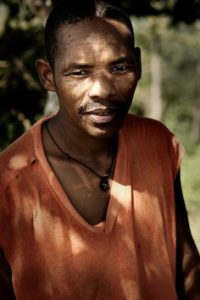
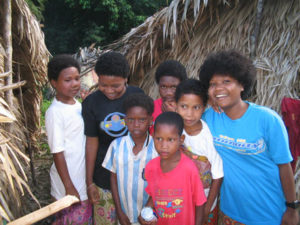
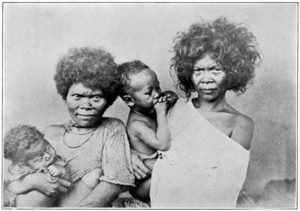

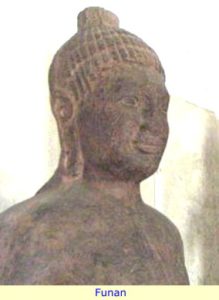
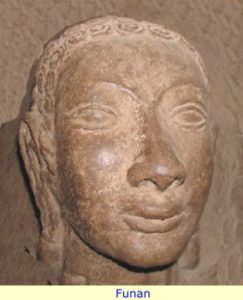


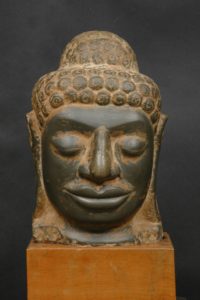
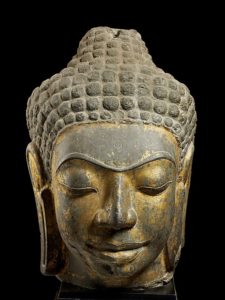
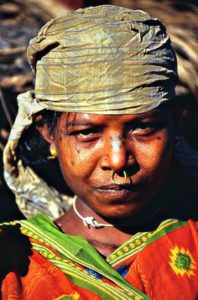
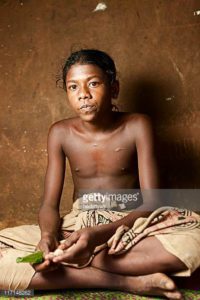
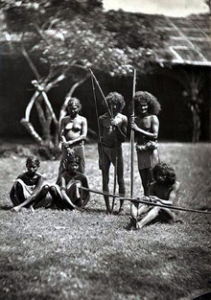

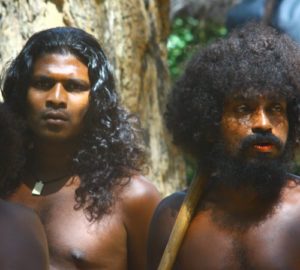
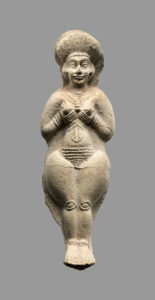
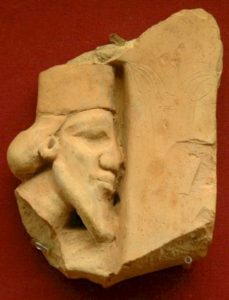
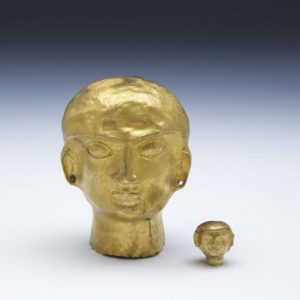
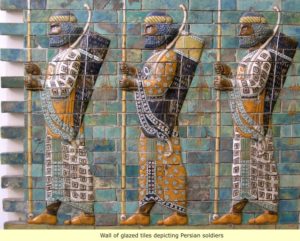
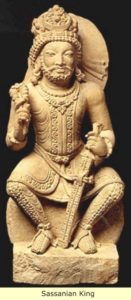
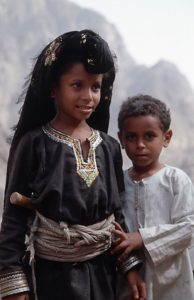







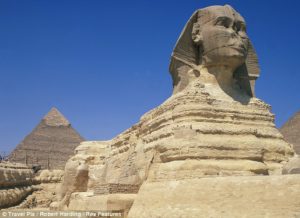
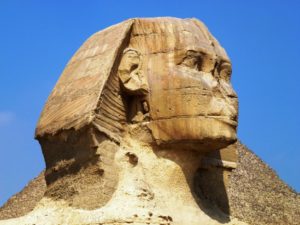
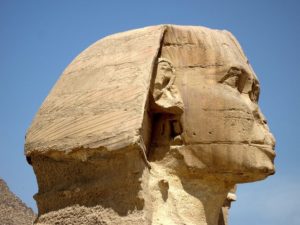
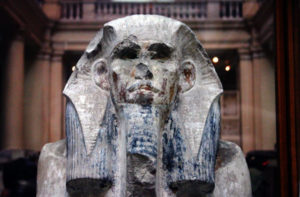
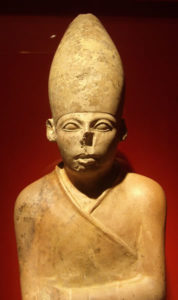
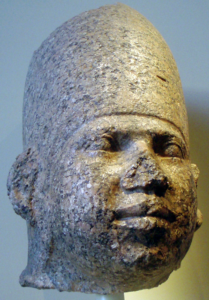
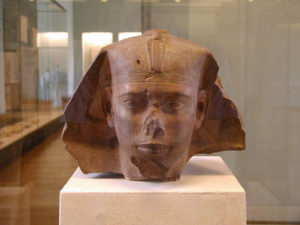
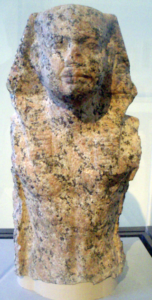
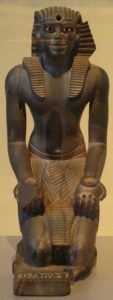
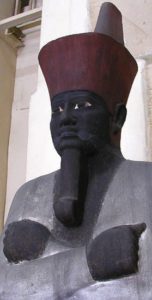
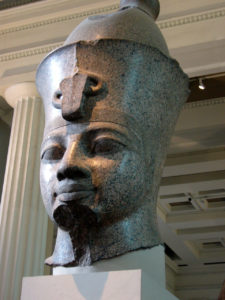
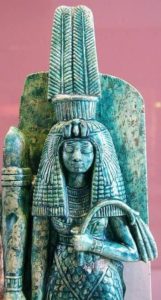
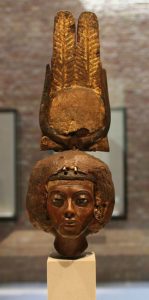
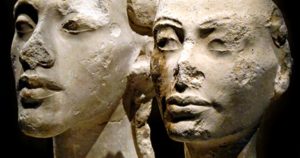
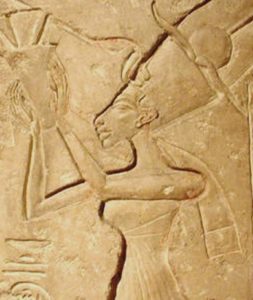
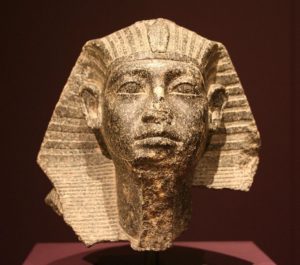
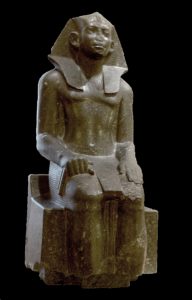
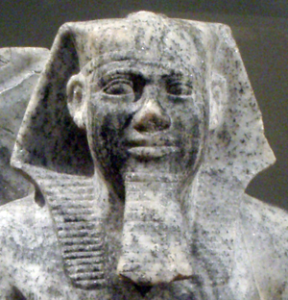
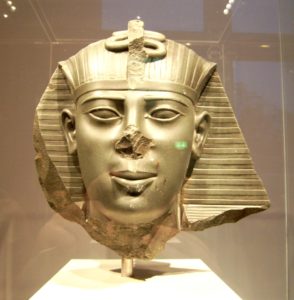
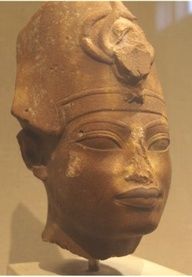
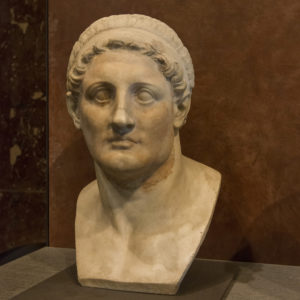
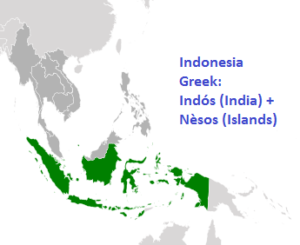
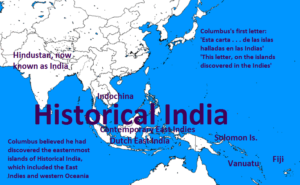
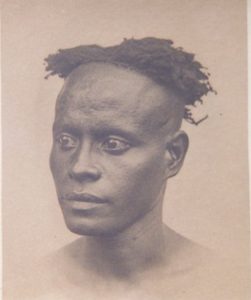
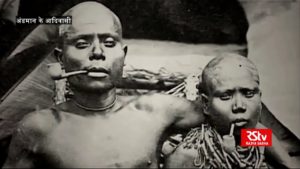
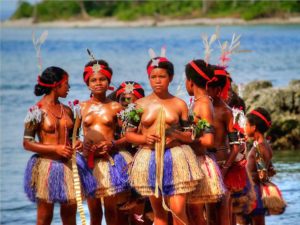

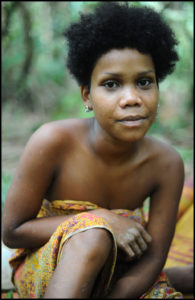
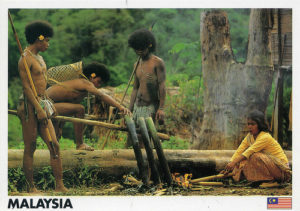
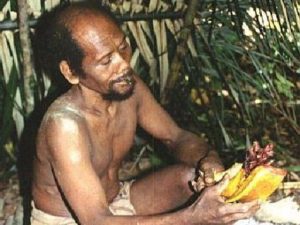

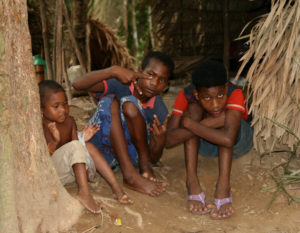
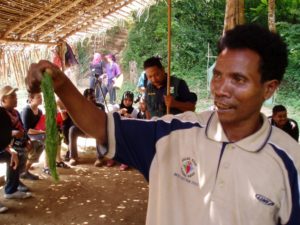
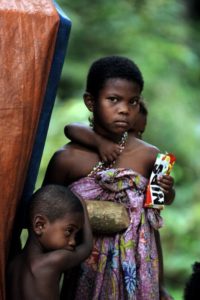

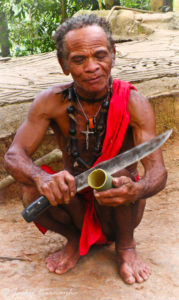
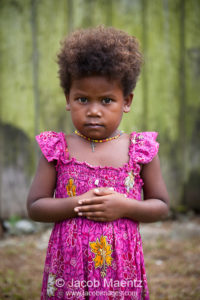
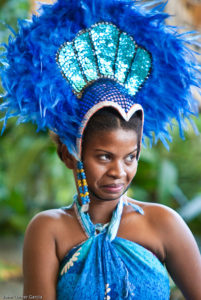
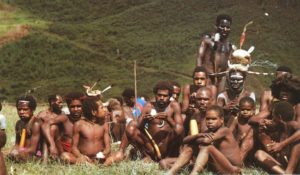

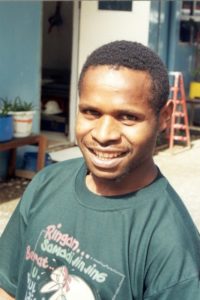
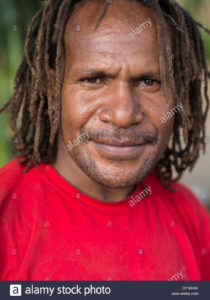
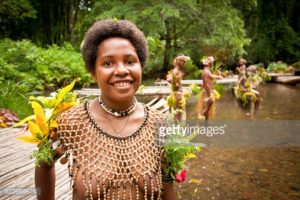

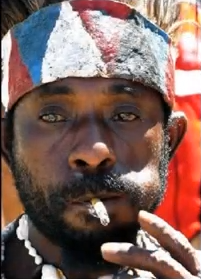
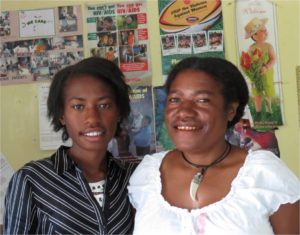
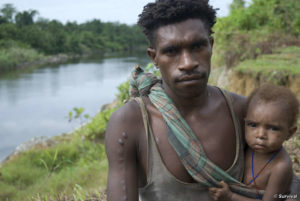
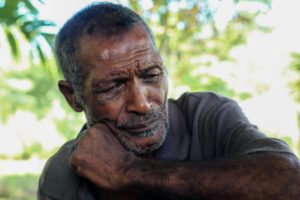

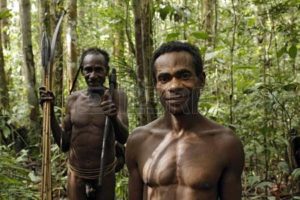

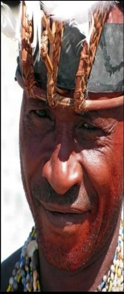
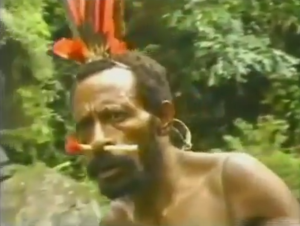
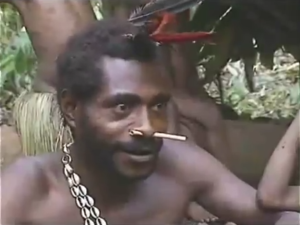
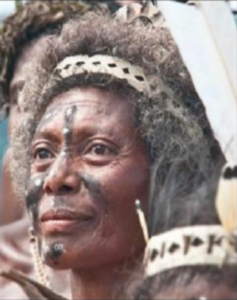

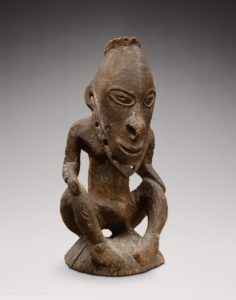
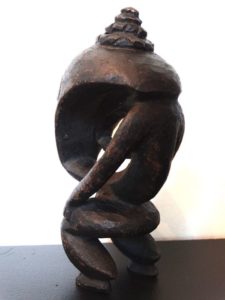
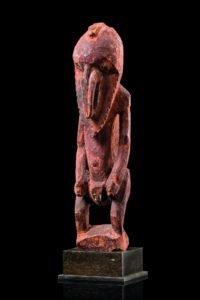
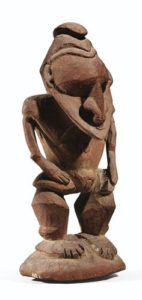
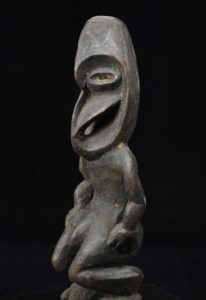
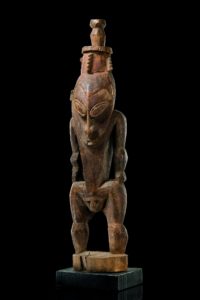
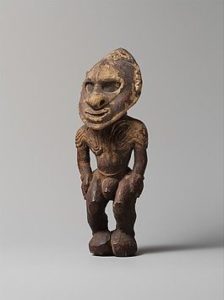
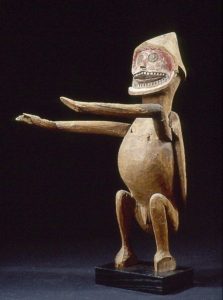
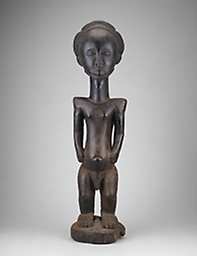
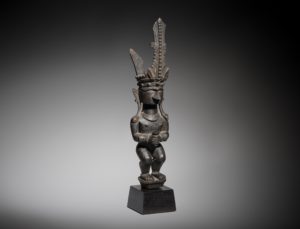
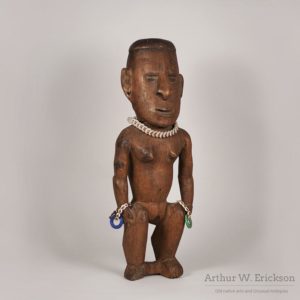
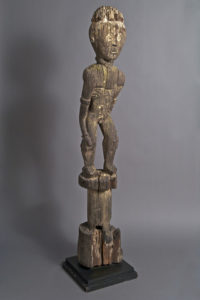
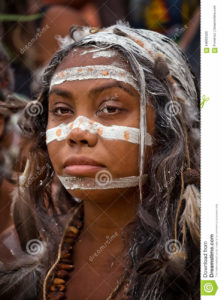
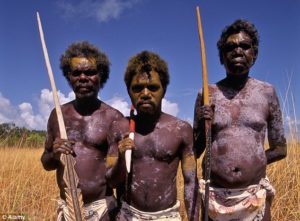
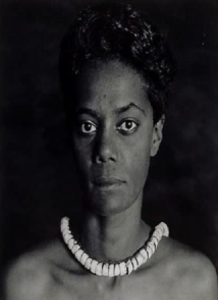

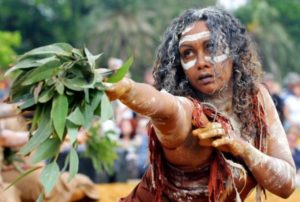
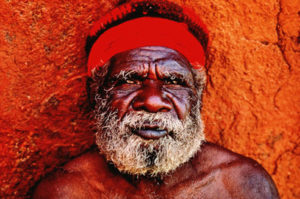
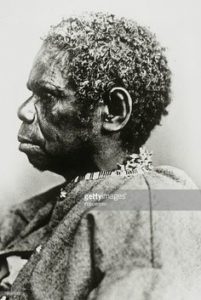
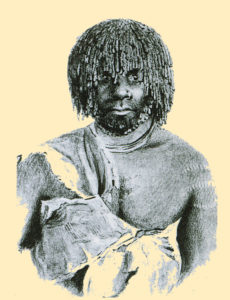
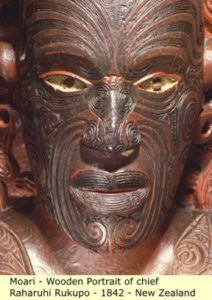

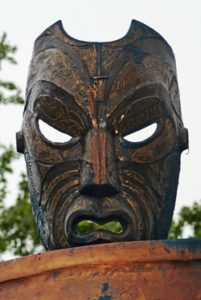
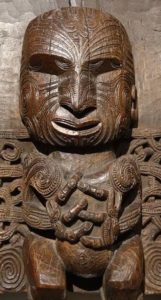
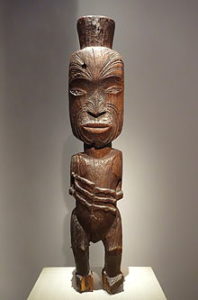
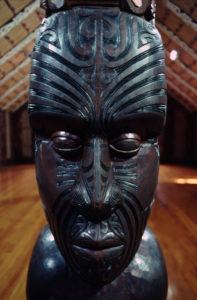
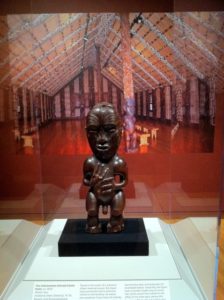
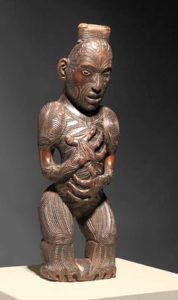
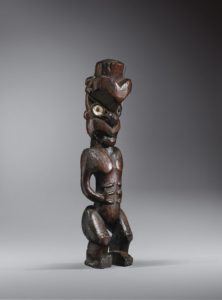
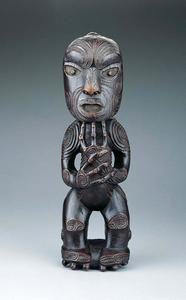
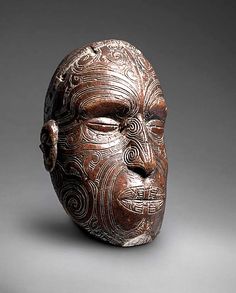
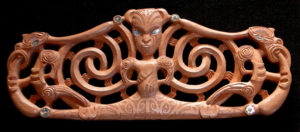
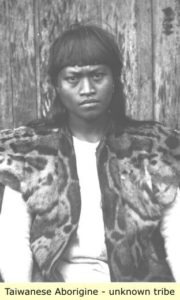
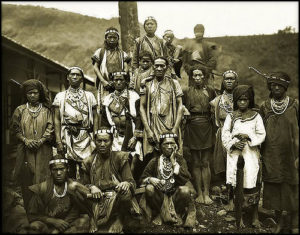
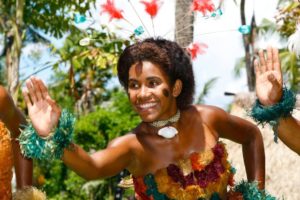
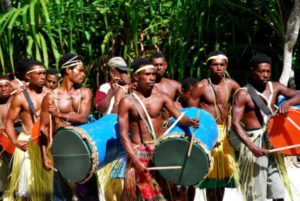
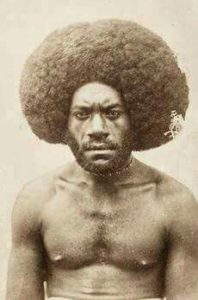
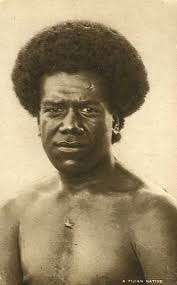
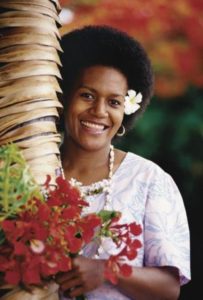
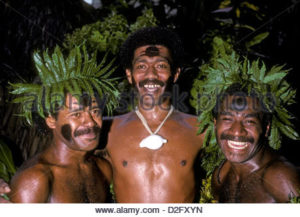

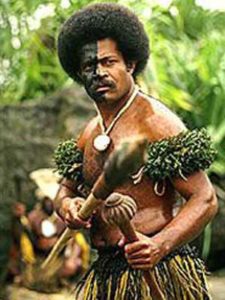


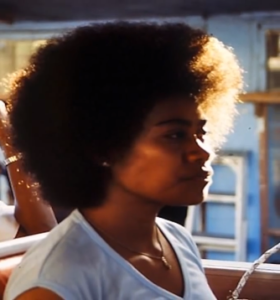
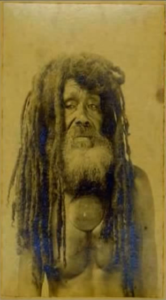
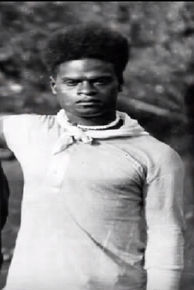
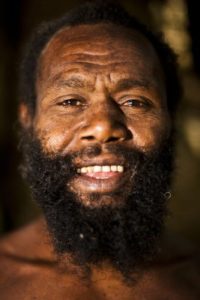
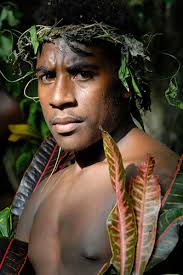



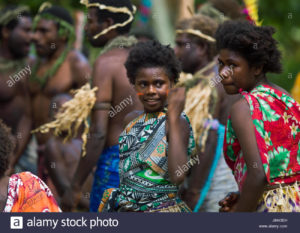
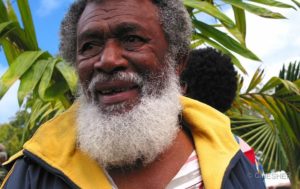

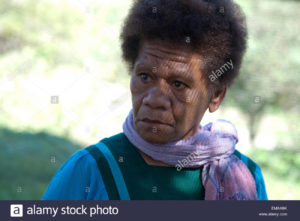

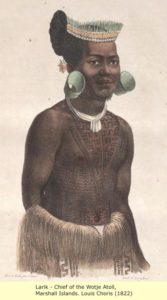
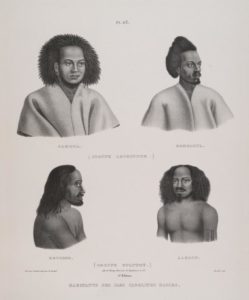
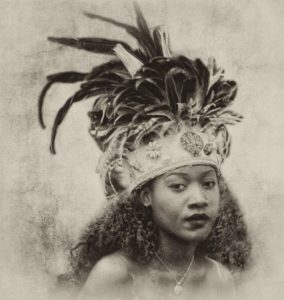
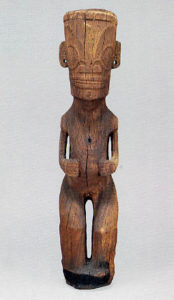
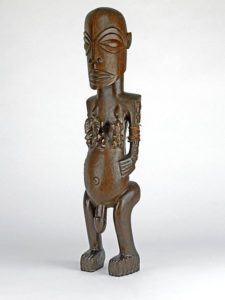
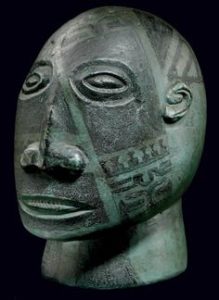
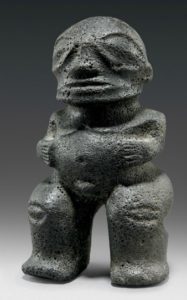
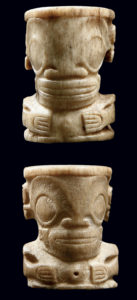
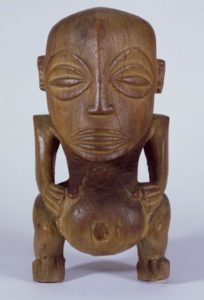
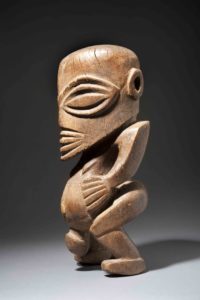
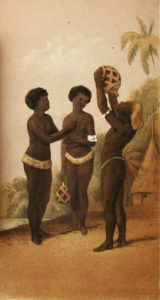
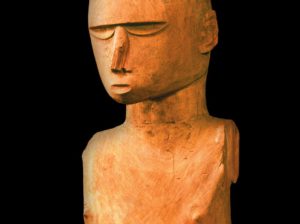
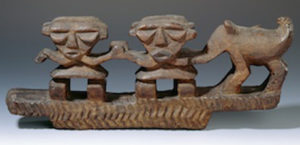
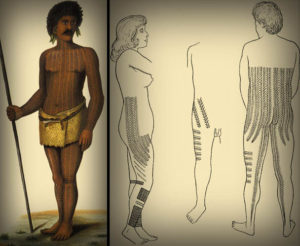
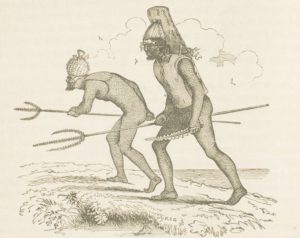
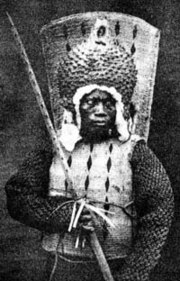
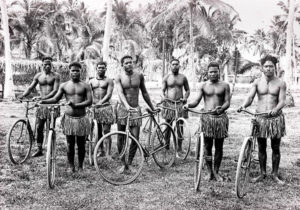
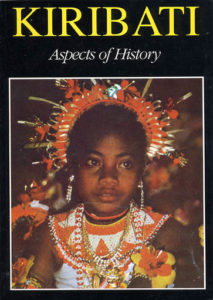



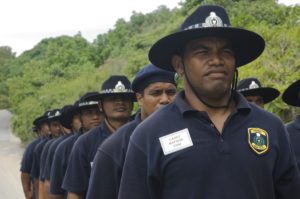
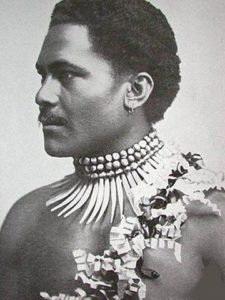
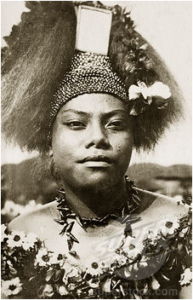
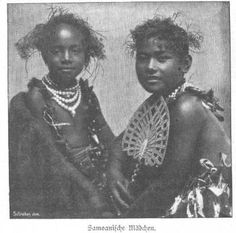
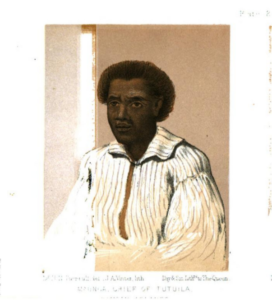
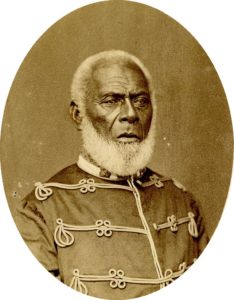
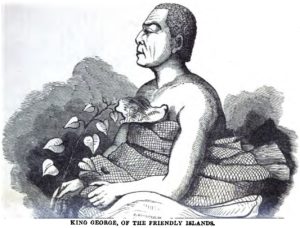
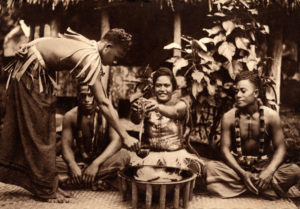

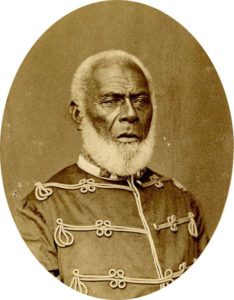
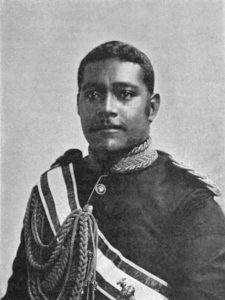
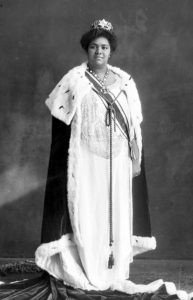
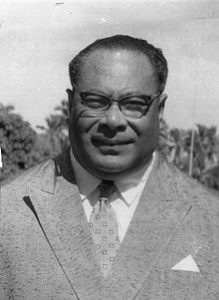


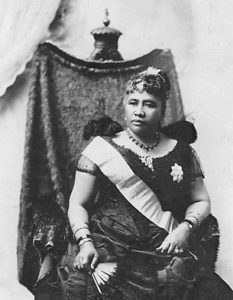
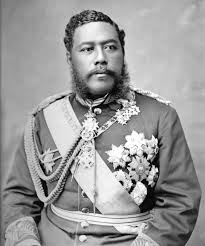
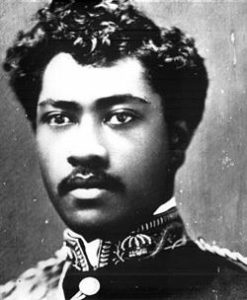
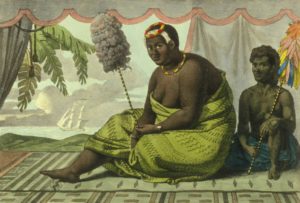
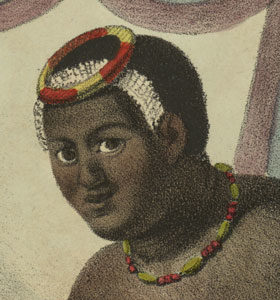
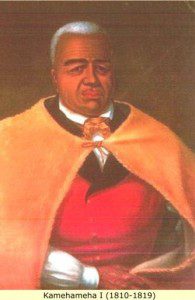
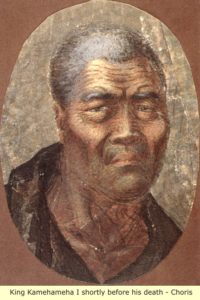
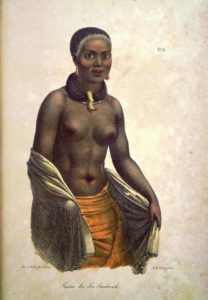
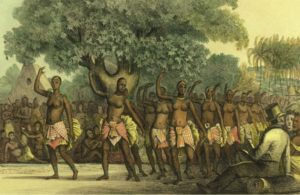
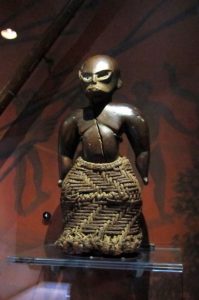
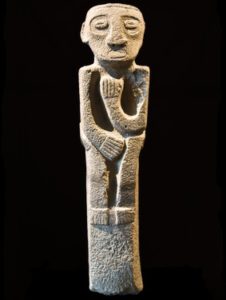
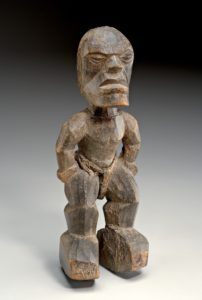
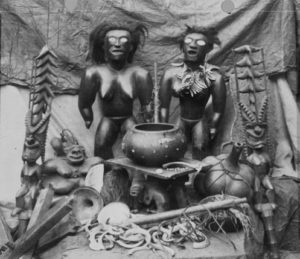
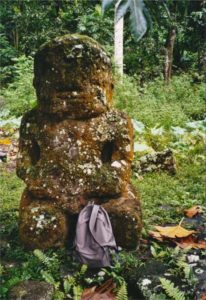
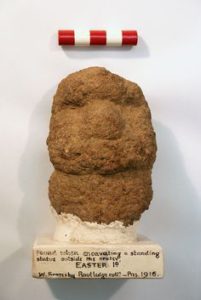
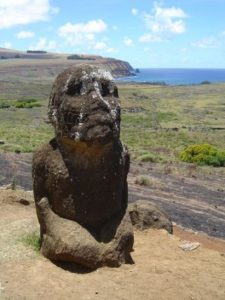
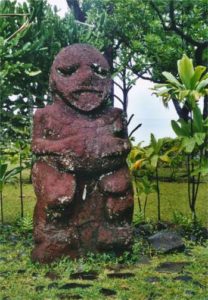
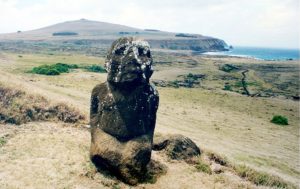
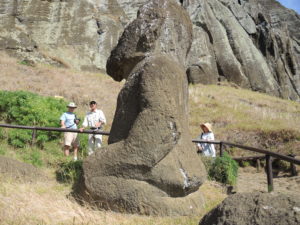
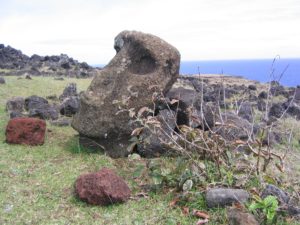
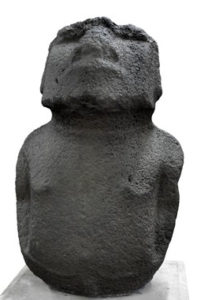
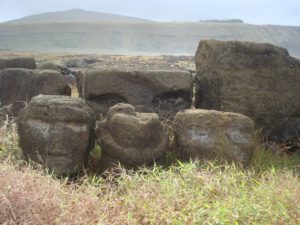
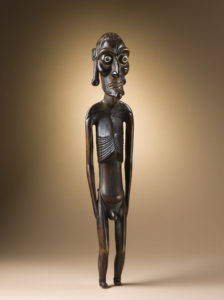
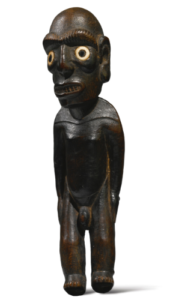
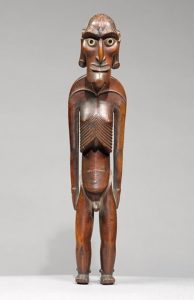
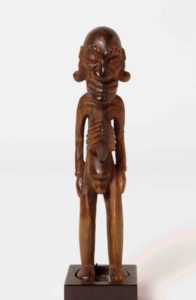
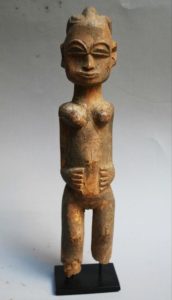
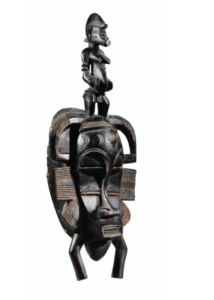
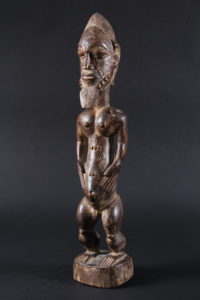
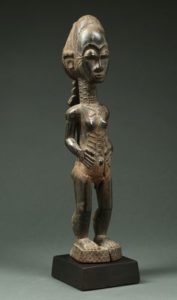
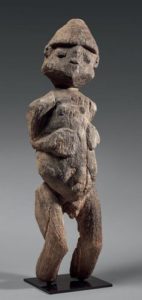
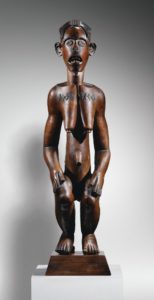
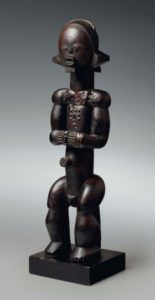
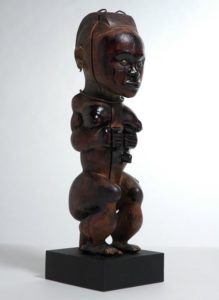
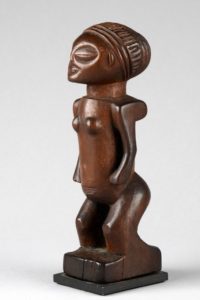
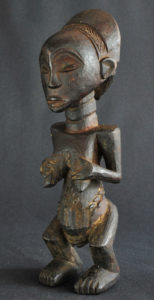
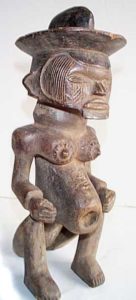
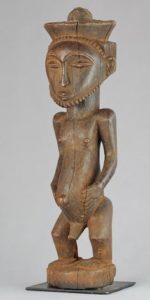
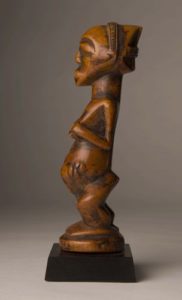
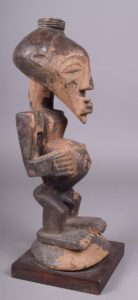
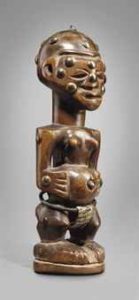
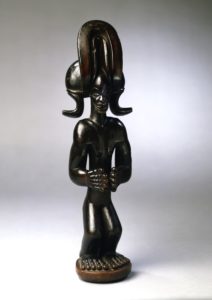
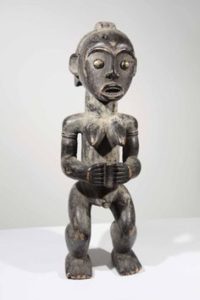
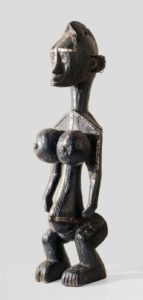
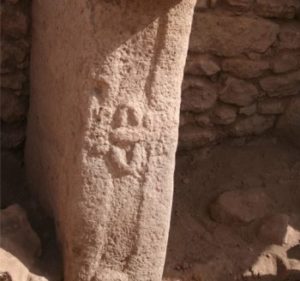
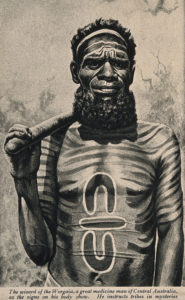
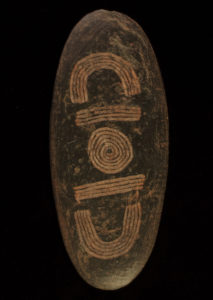
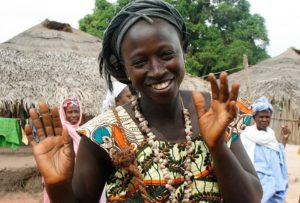

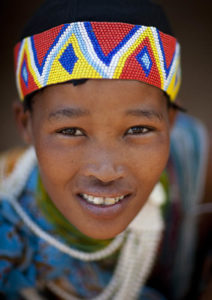



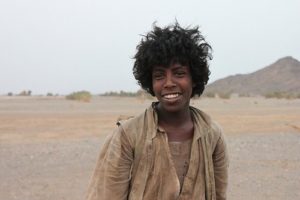

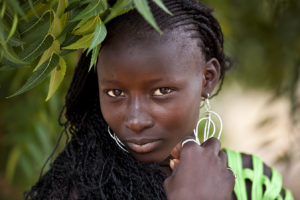
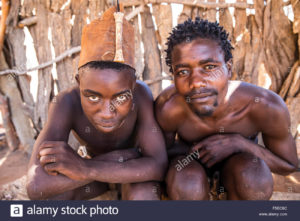
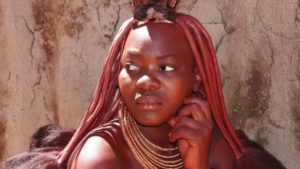
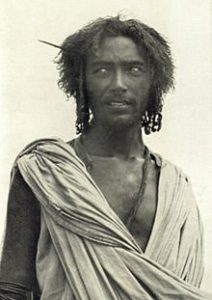

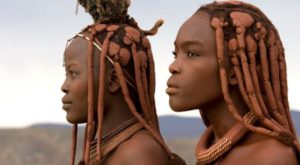
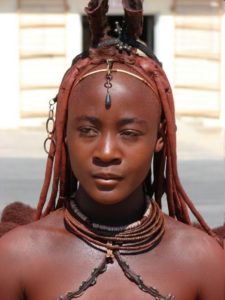
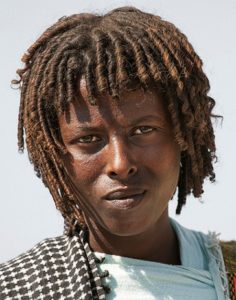
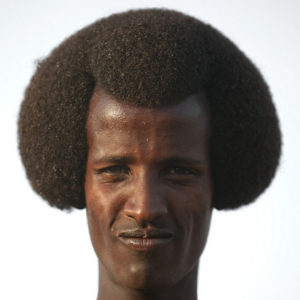

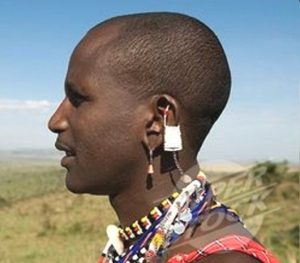
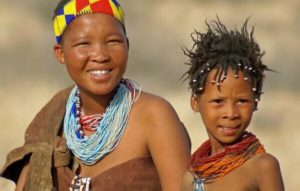
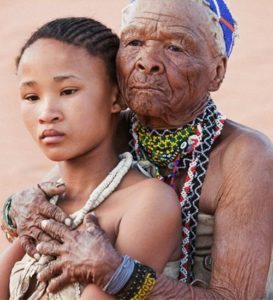

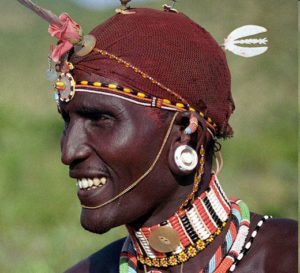
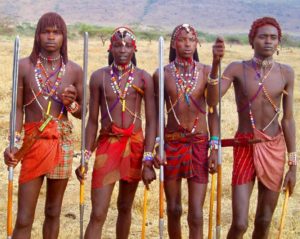
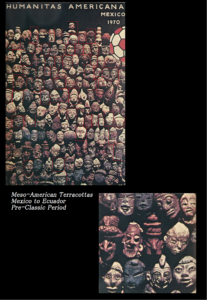
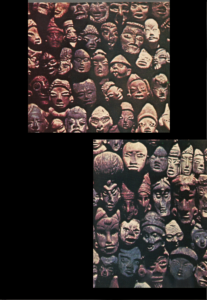
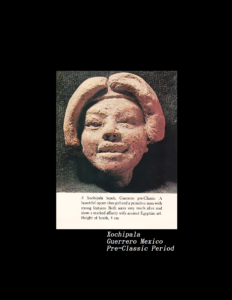
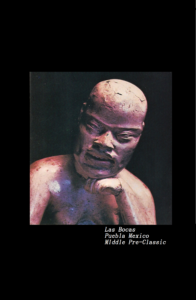
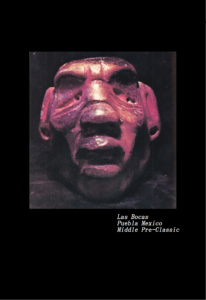
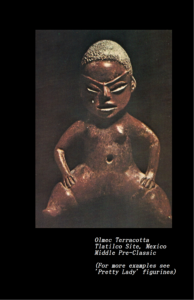
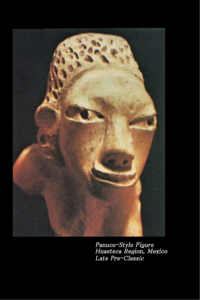
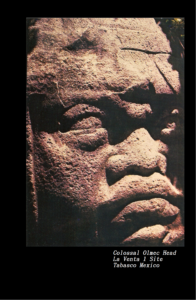

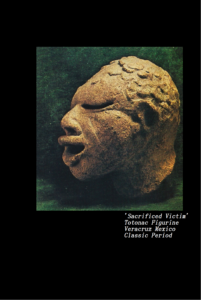
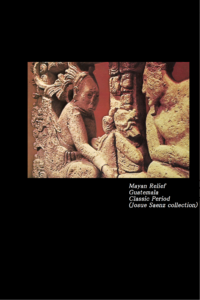
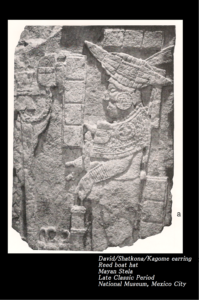
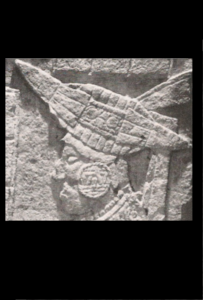
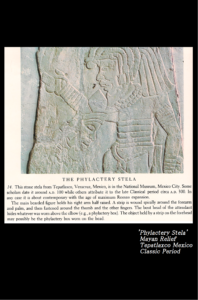
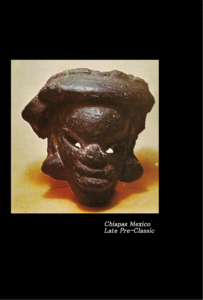
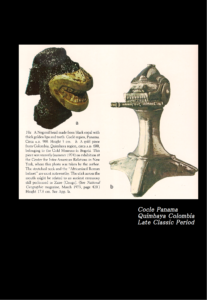
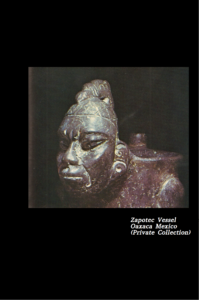
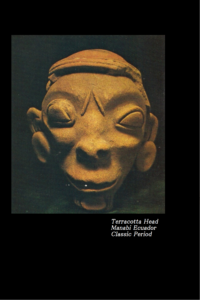
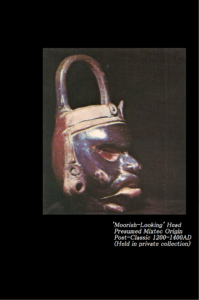
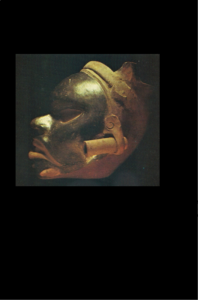
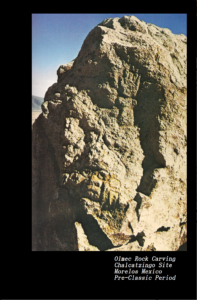
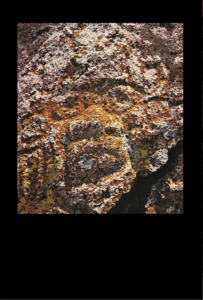
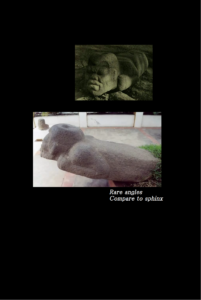
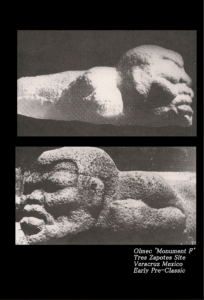
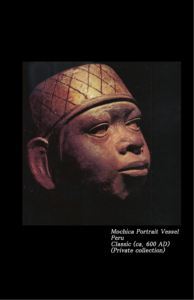
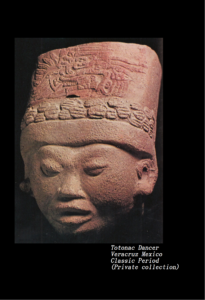
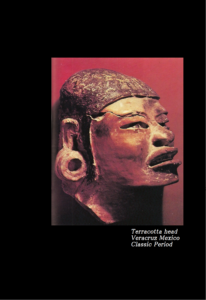
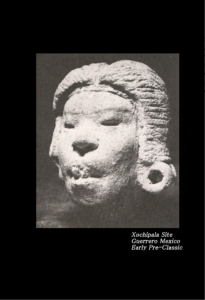
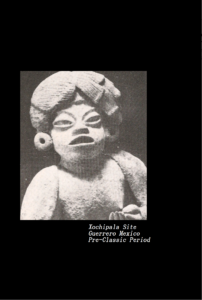
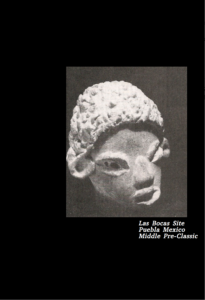
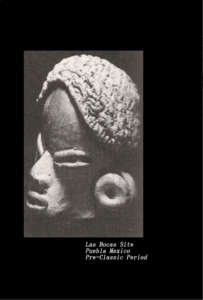

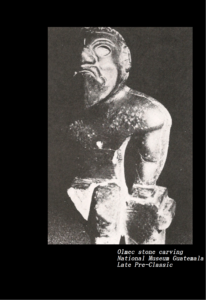
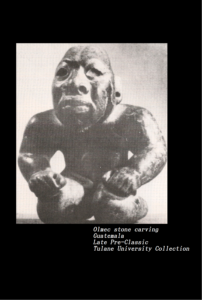
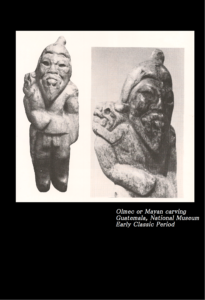
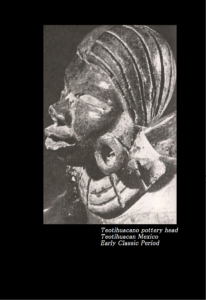
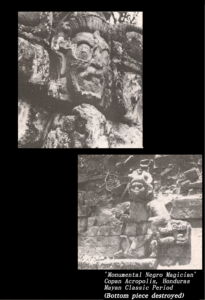
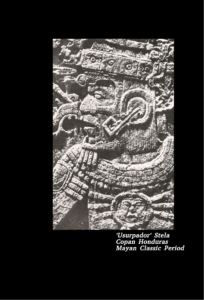
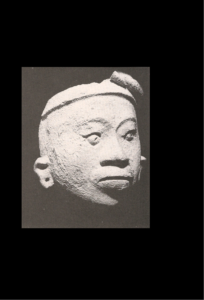
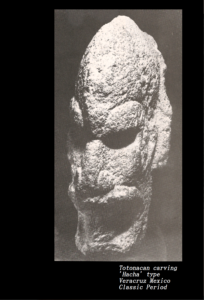
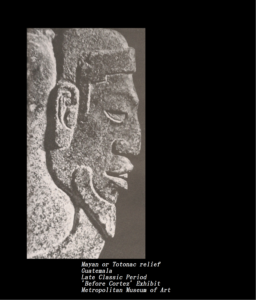
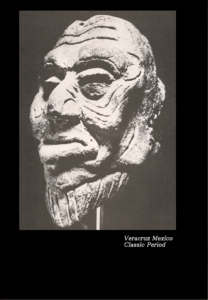
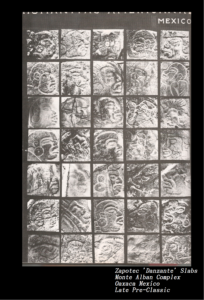
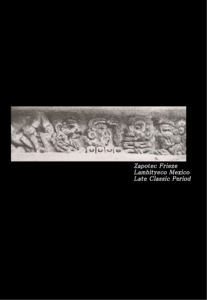
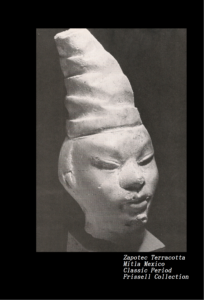
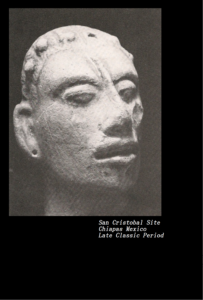
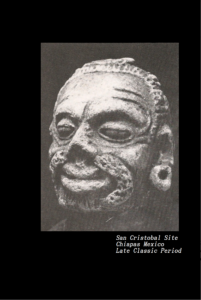
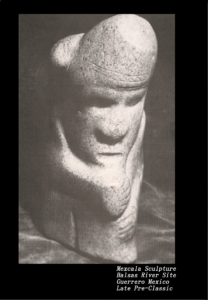
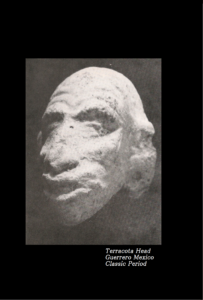
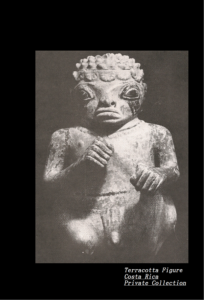
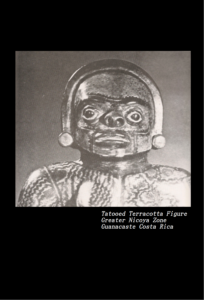
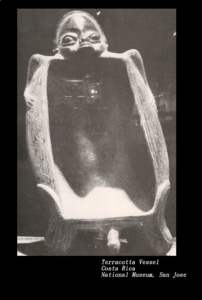
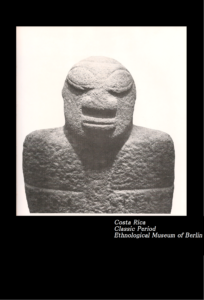
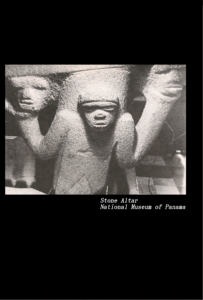
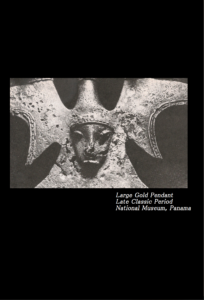
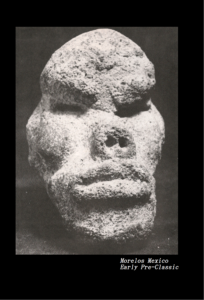
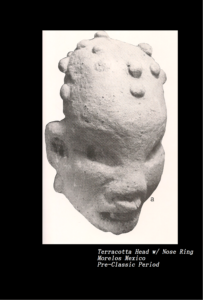
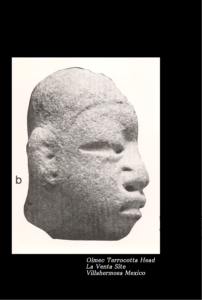
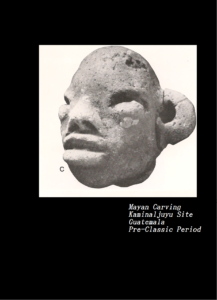
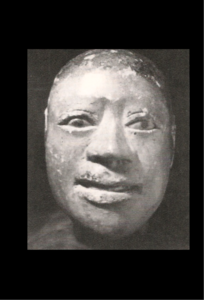
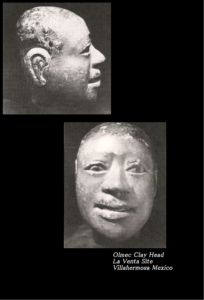
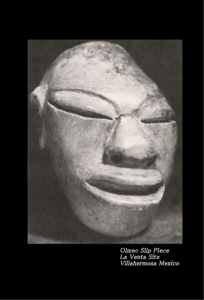
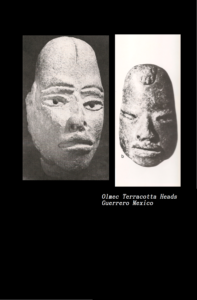
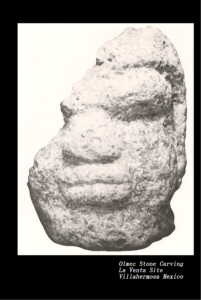
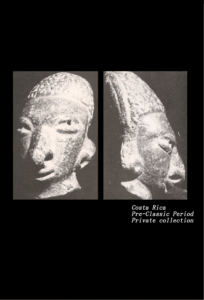
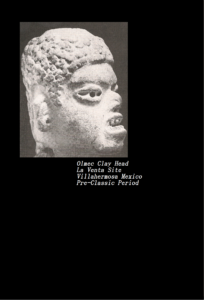
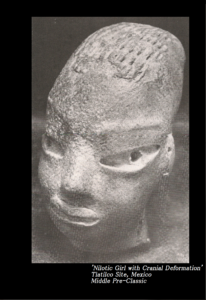
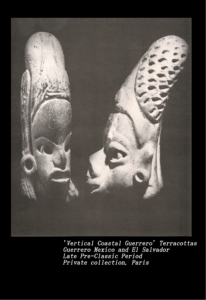
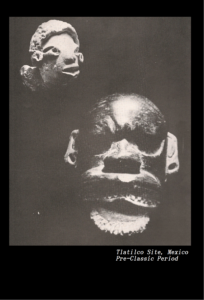
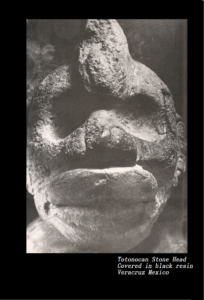
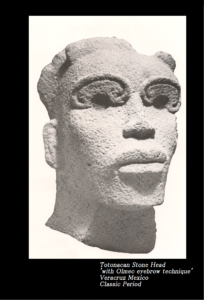
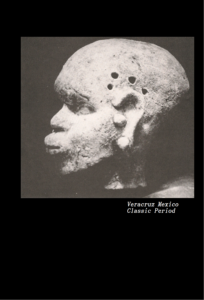
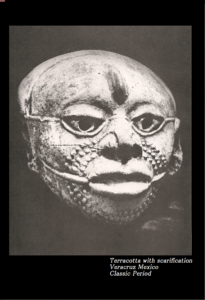
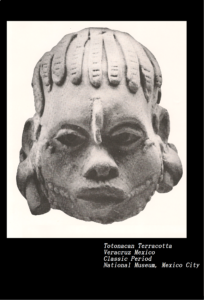
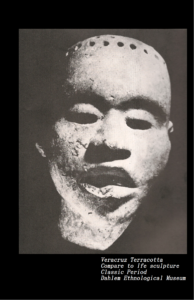
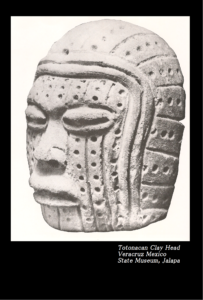
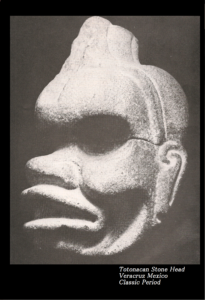
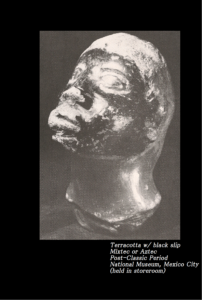
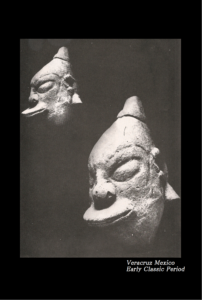
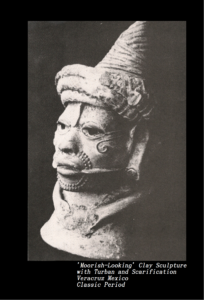
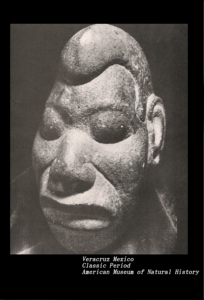
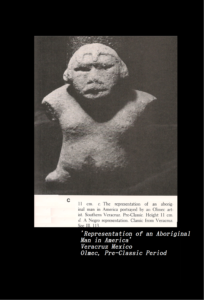
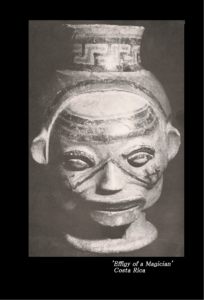
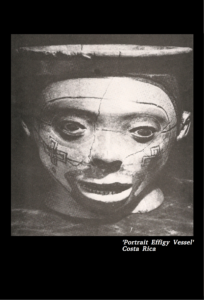
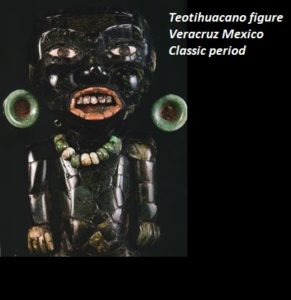
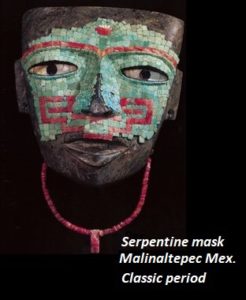
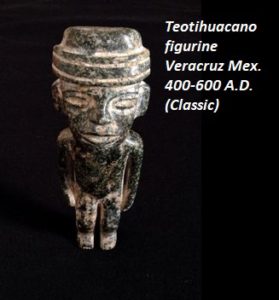
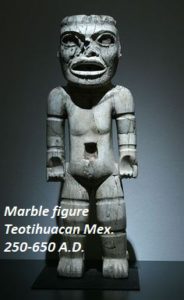
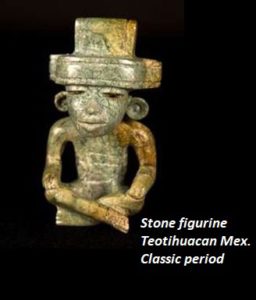
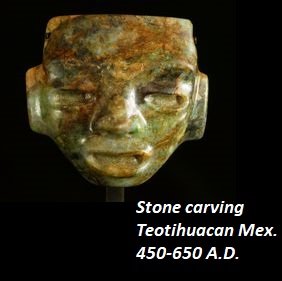
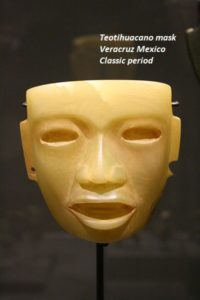
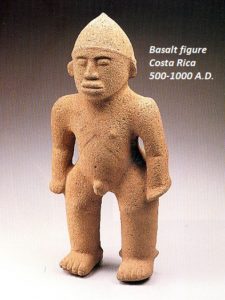
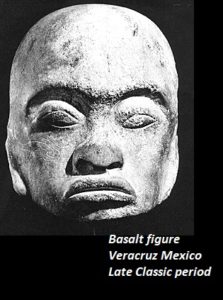
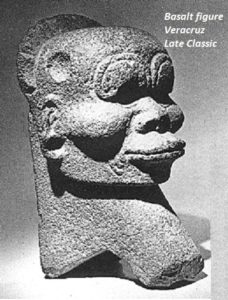
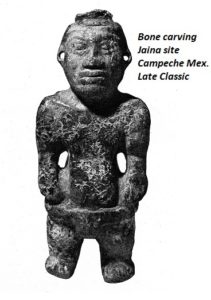
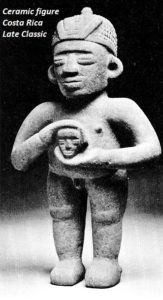
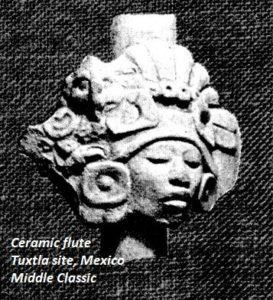
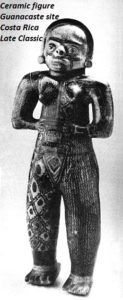
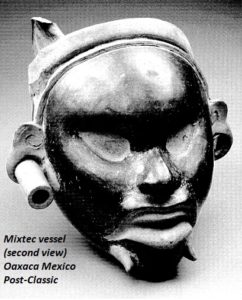
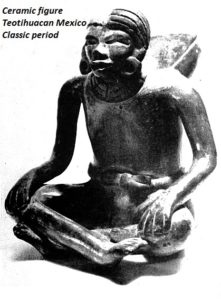
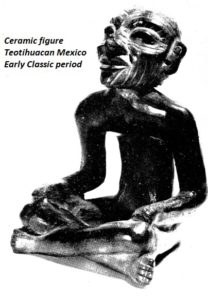
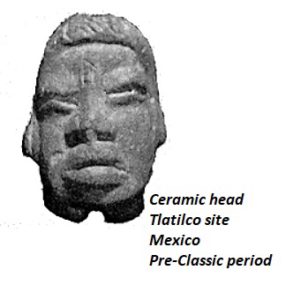
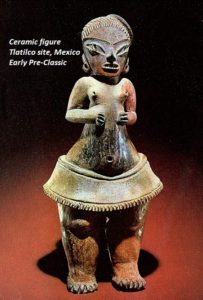
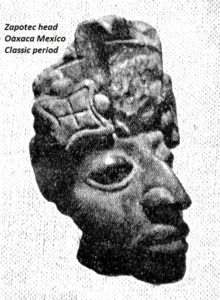
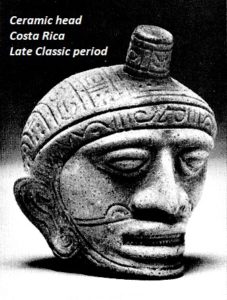
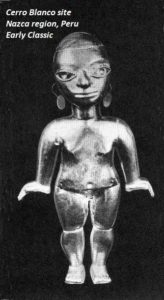
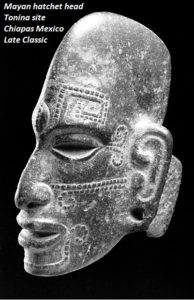
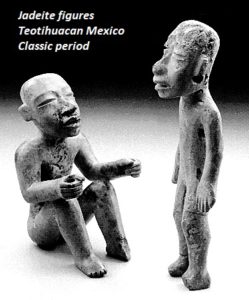
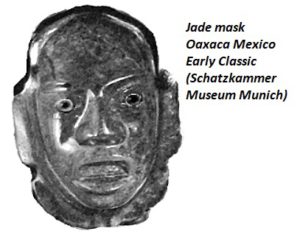
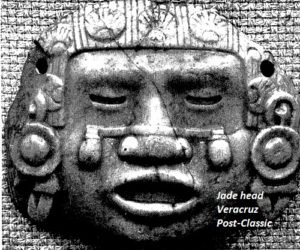
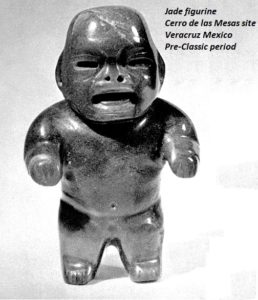
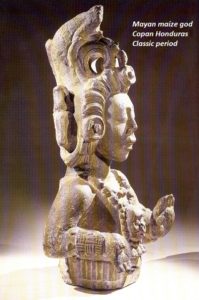
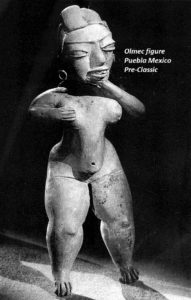
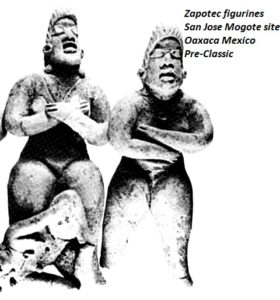
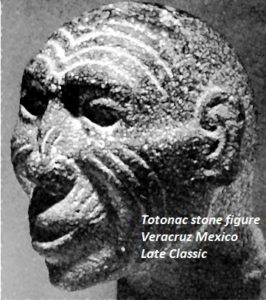
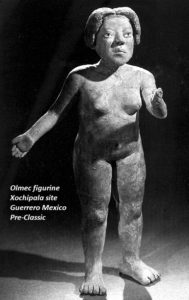
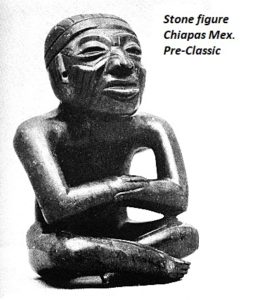
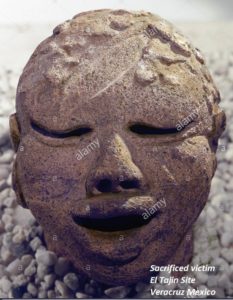
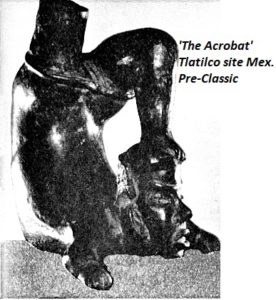
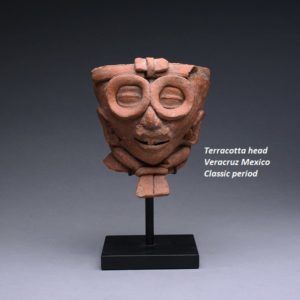
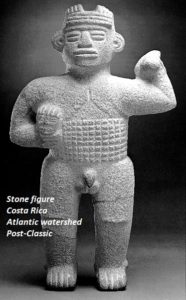
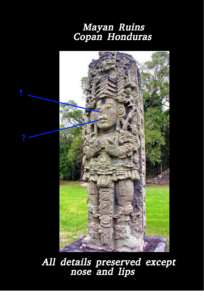
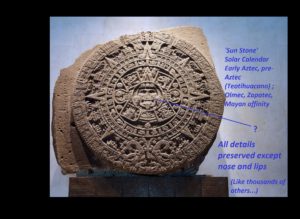
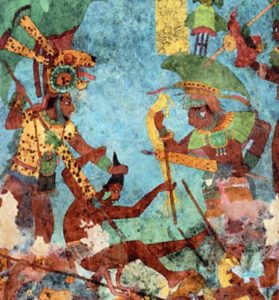
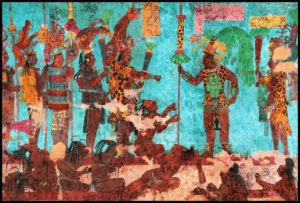
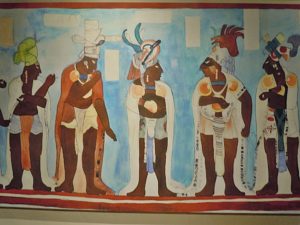
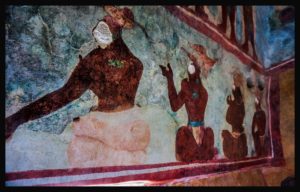
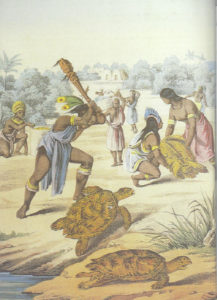
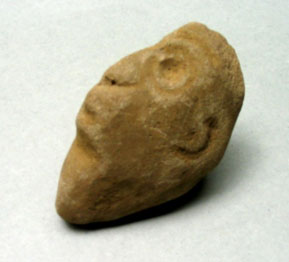
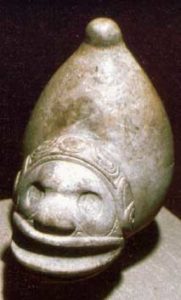
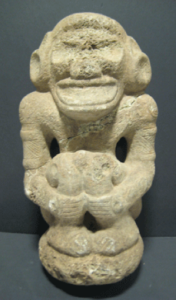
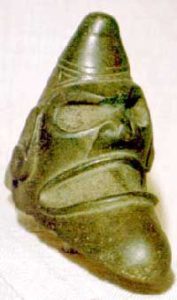
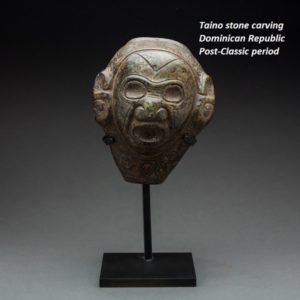
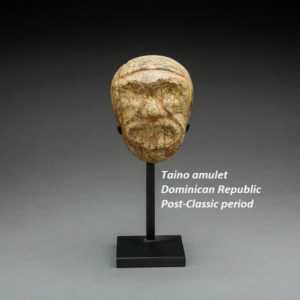
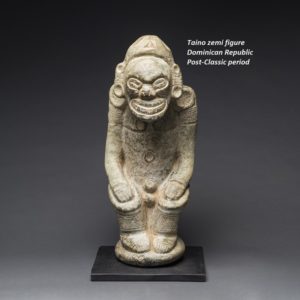
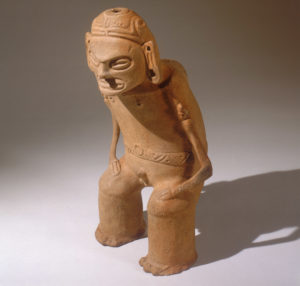
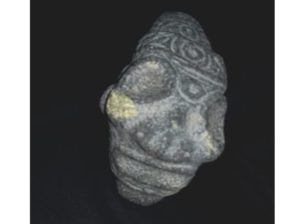
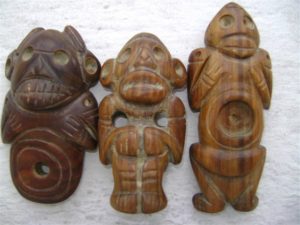
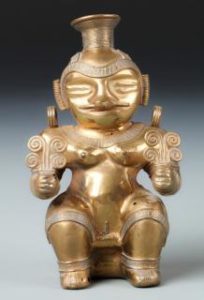
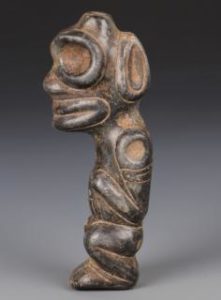
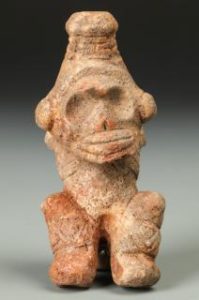
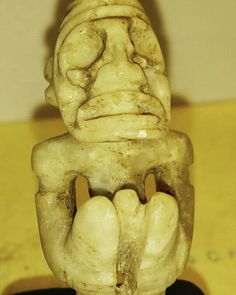
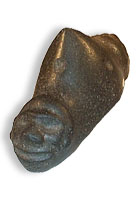
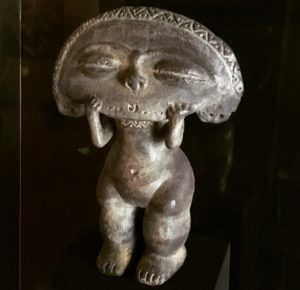
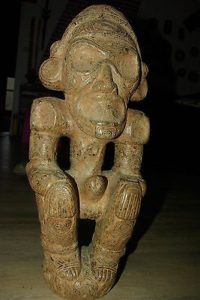
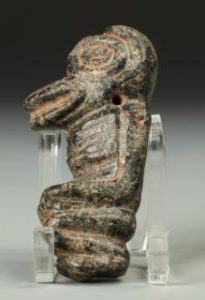
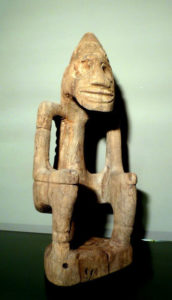
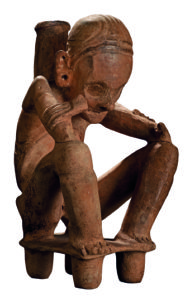
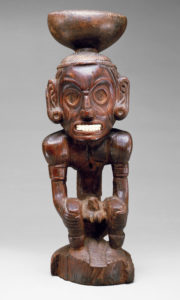
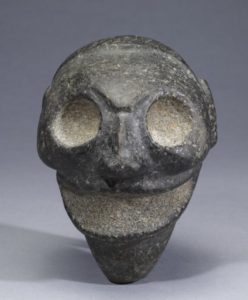
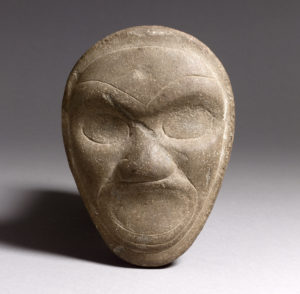
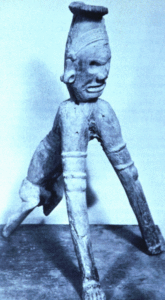

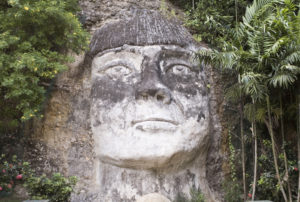
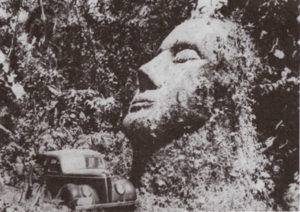

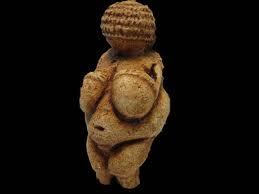
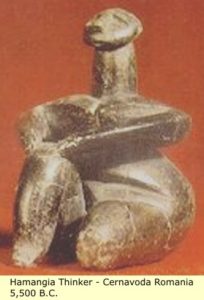
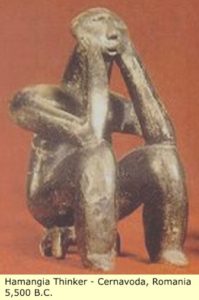
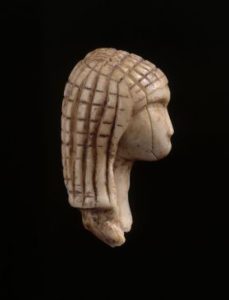
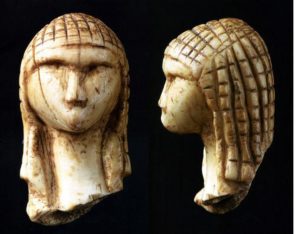
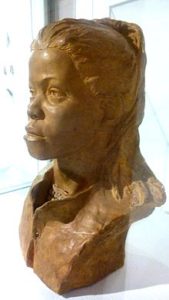
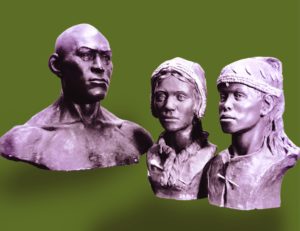
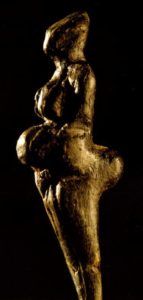
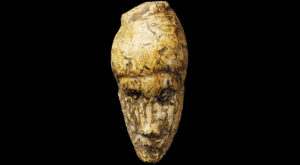
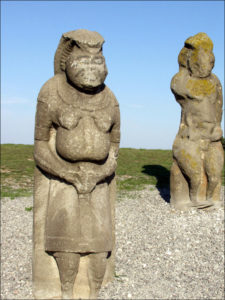
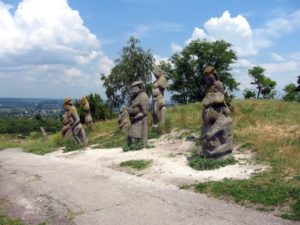
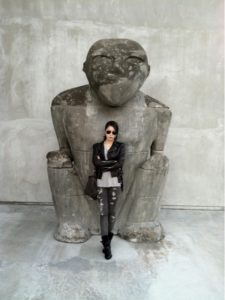
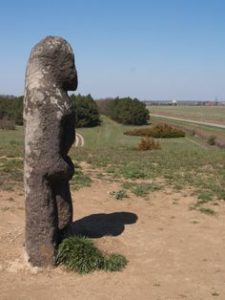
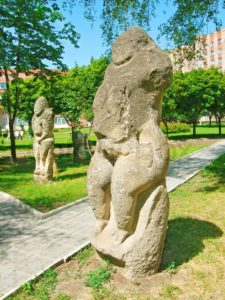
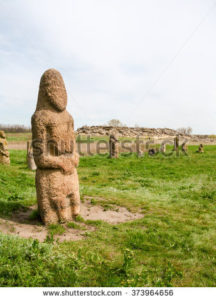
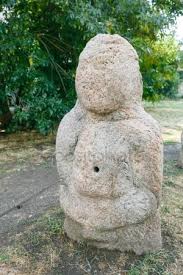
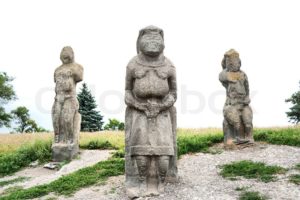
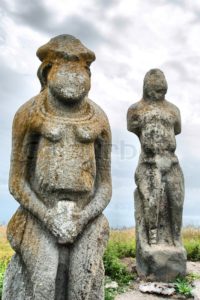
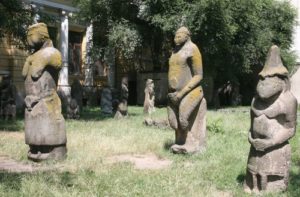
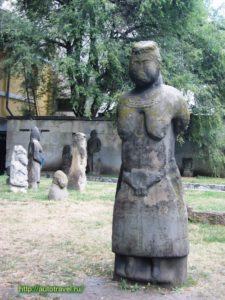
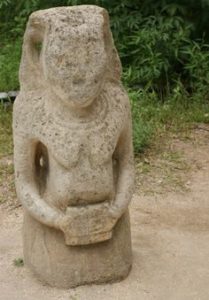
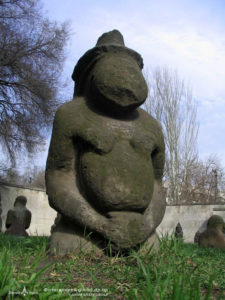
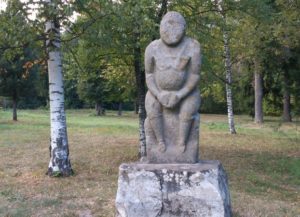
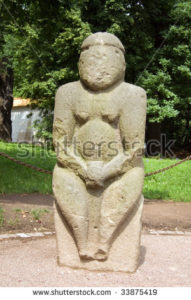
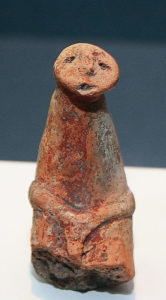
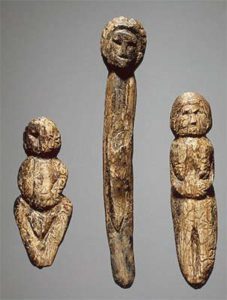
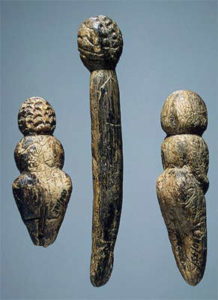
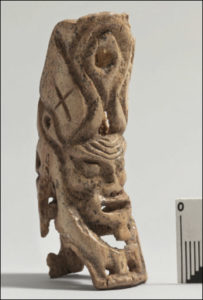
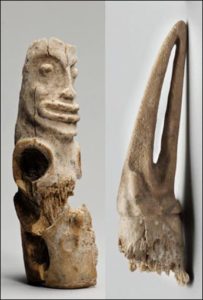
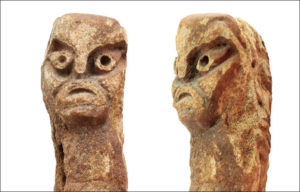
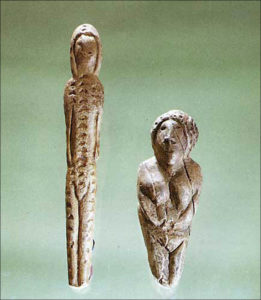

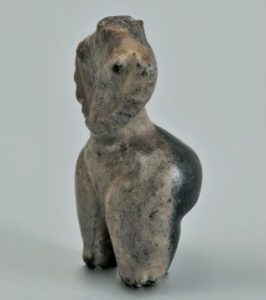
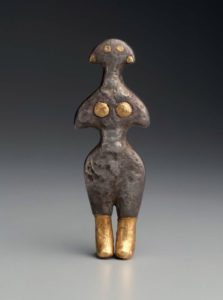
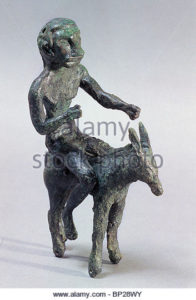
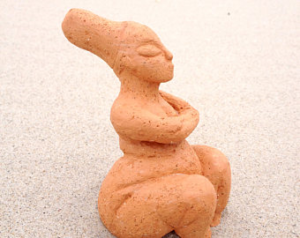
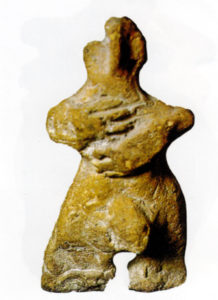
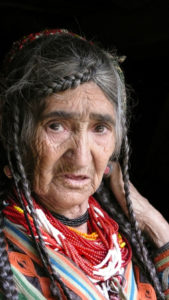
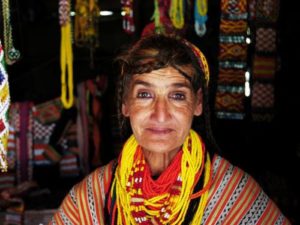
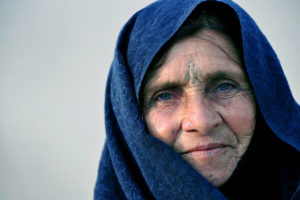
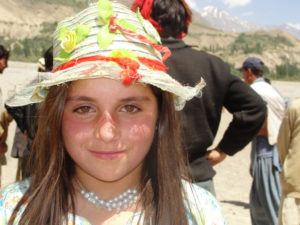


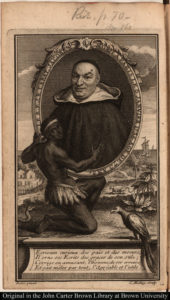
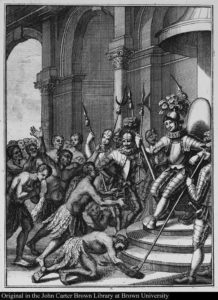
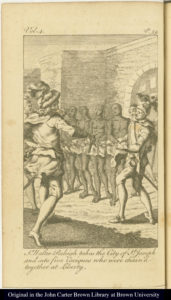
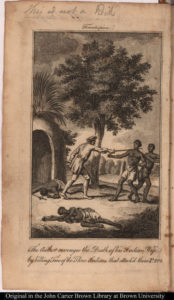
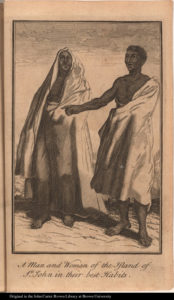
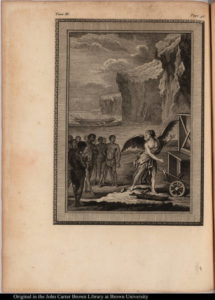
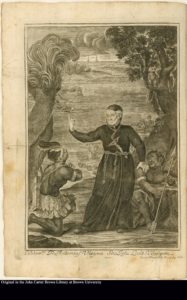
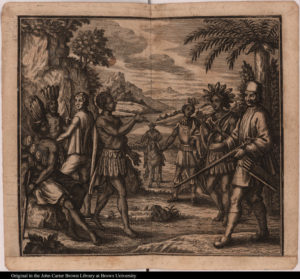
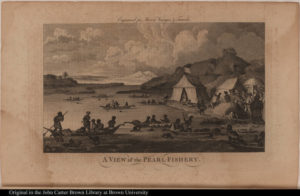
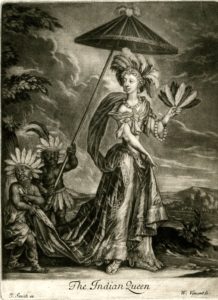
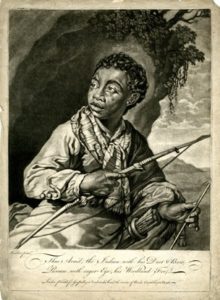
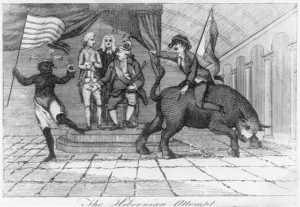
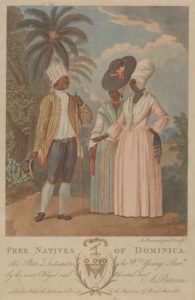
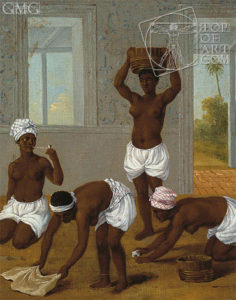
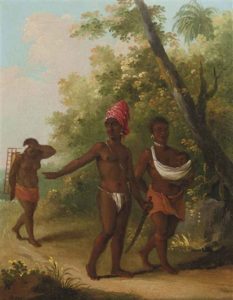
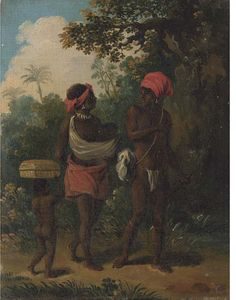
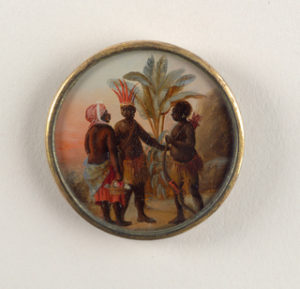
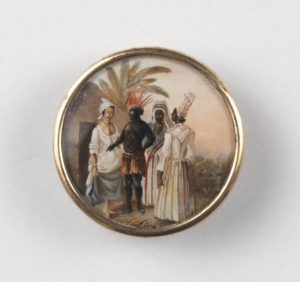
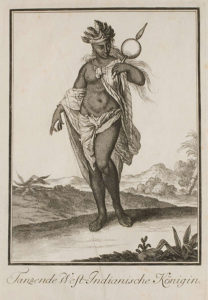
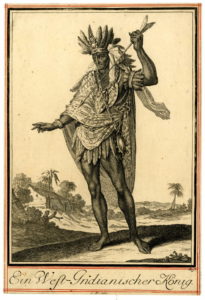
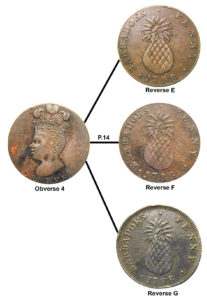
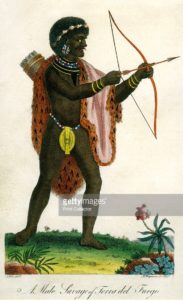

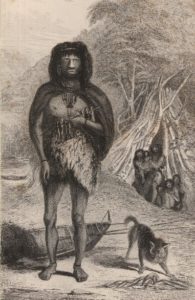
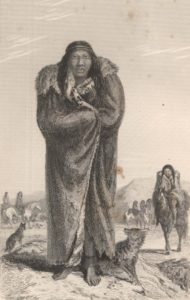
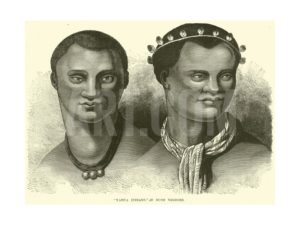
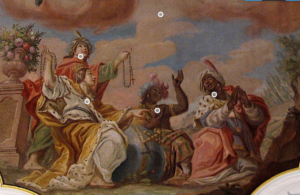
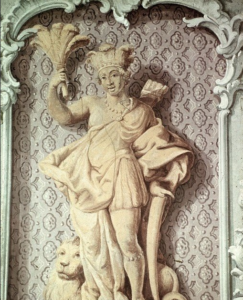
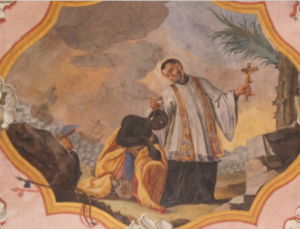
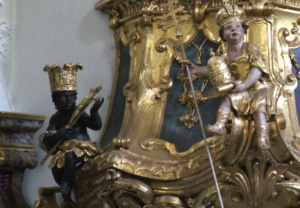
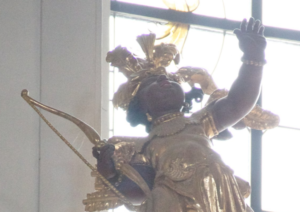
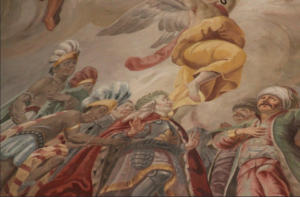
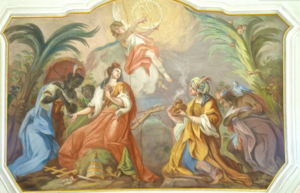
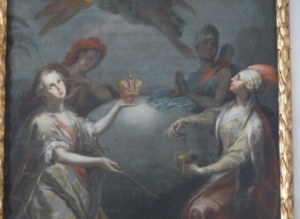
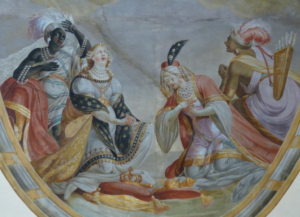
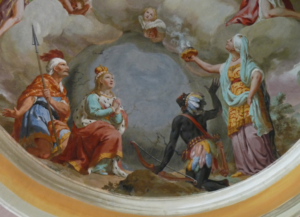
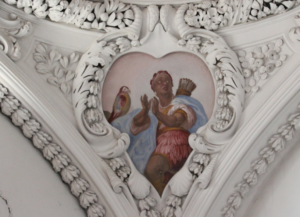
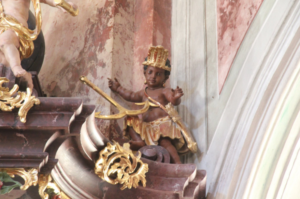
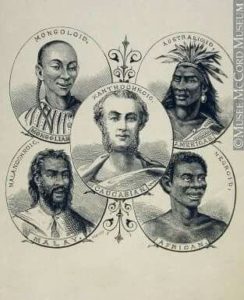
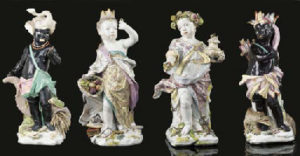
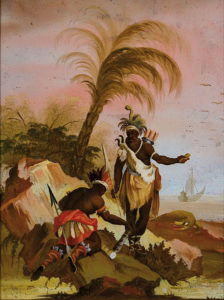
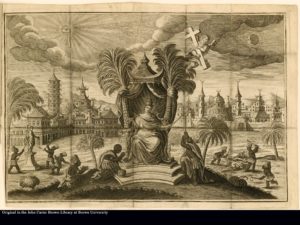
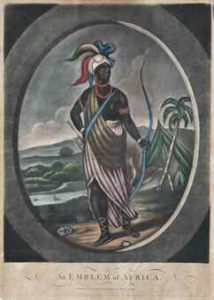
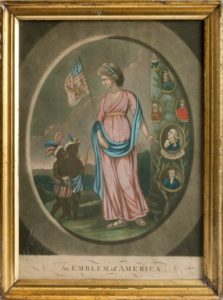
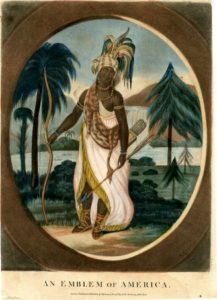
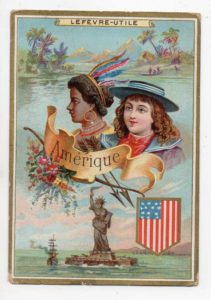
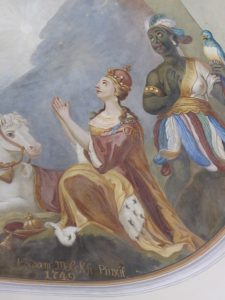
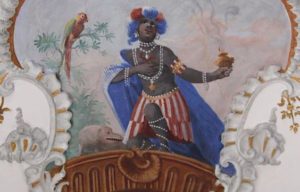
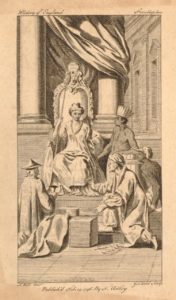
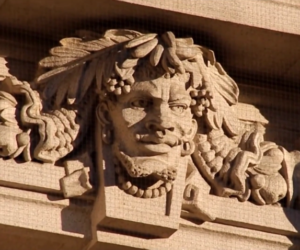
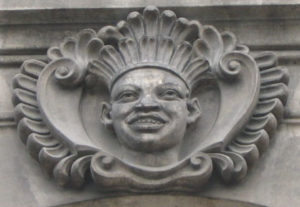
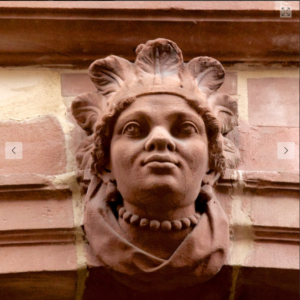
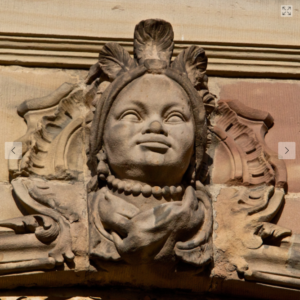
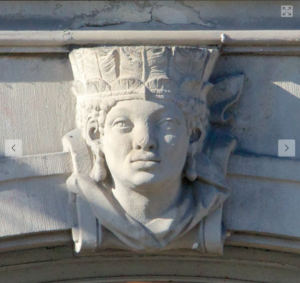
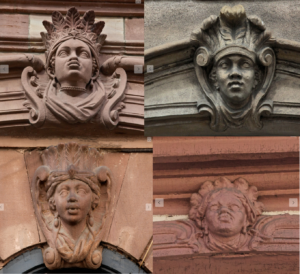
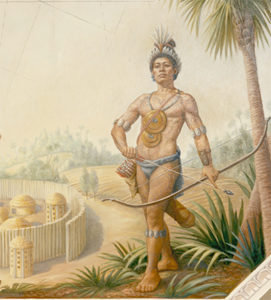
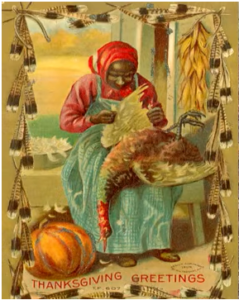
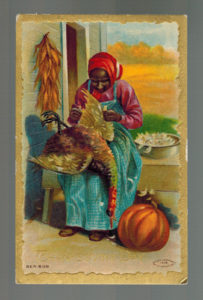

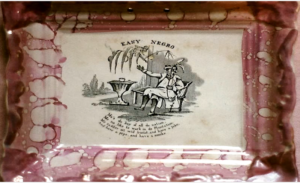
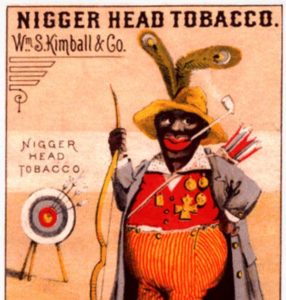
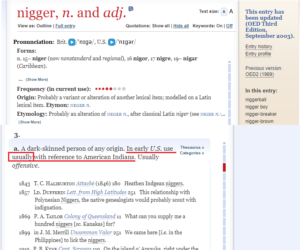
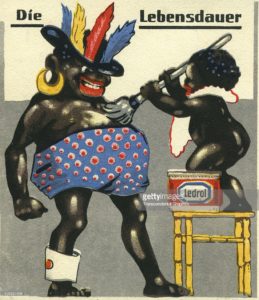
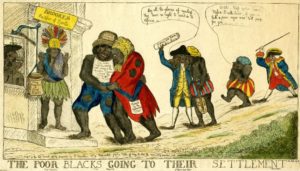
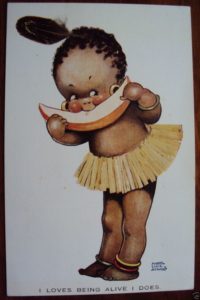
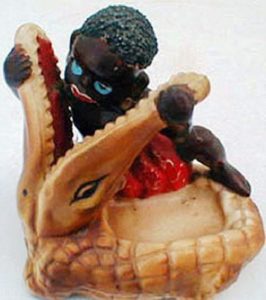
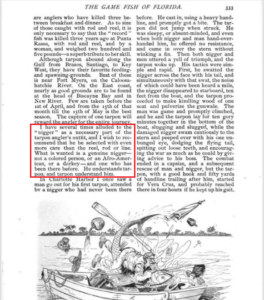
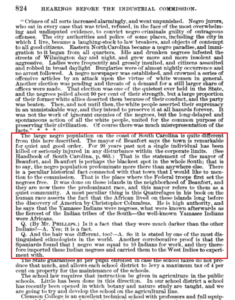
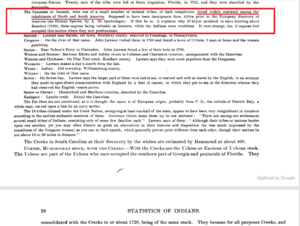
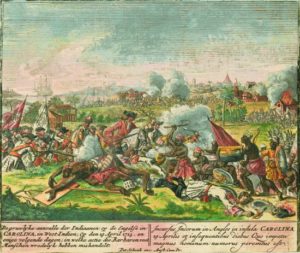
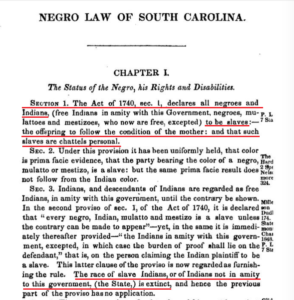
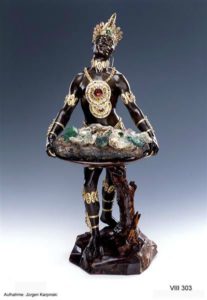
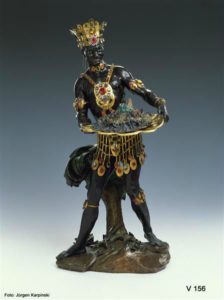
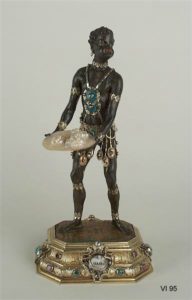
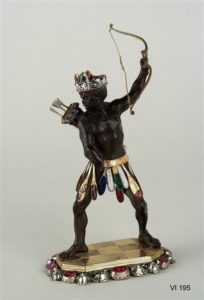
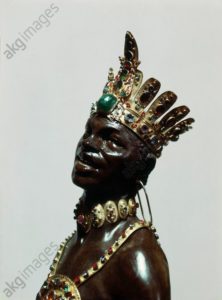

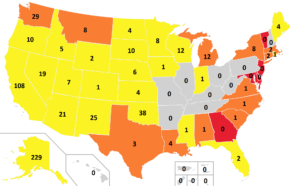
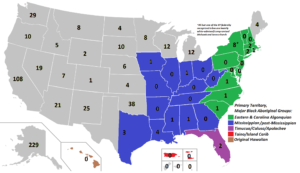
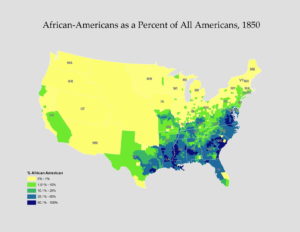
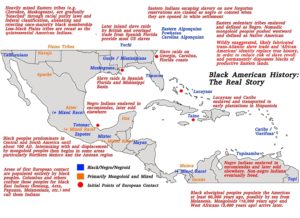
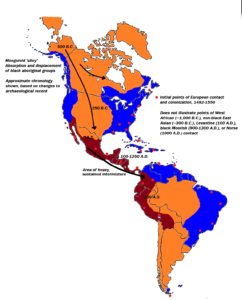
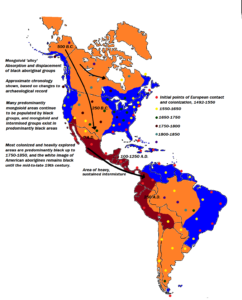
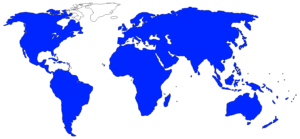
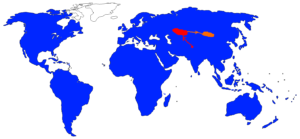
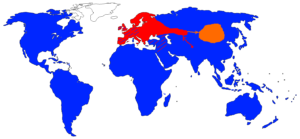
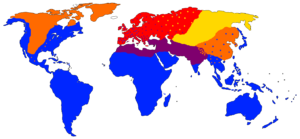
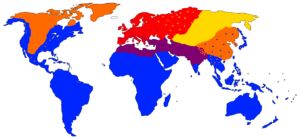
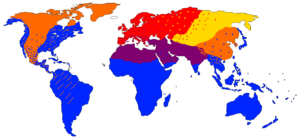
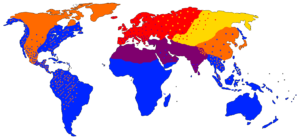
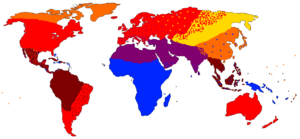

Interesting, but it would be great to know who is the Pat of patsblog.com?
I really enjoy reading through on this internet site, it contains great articles. “Beware lest in your anxiety to avoid war you obtain a master.” by Demosthenes.